







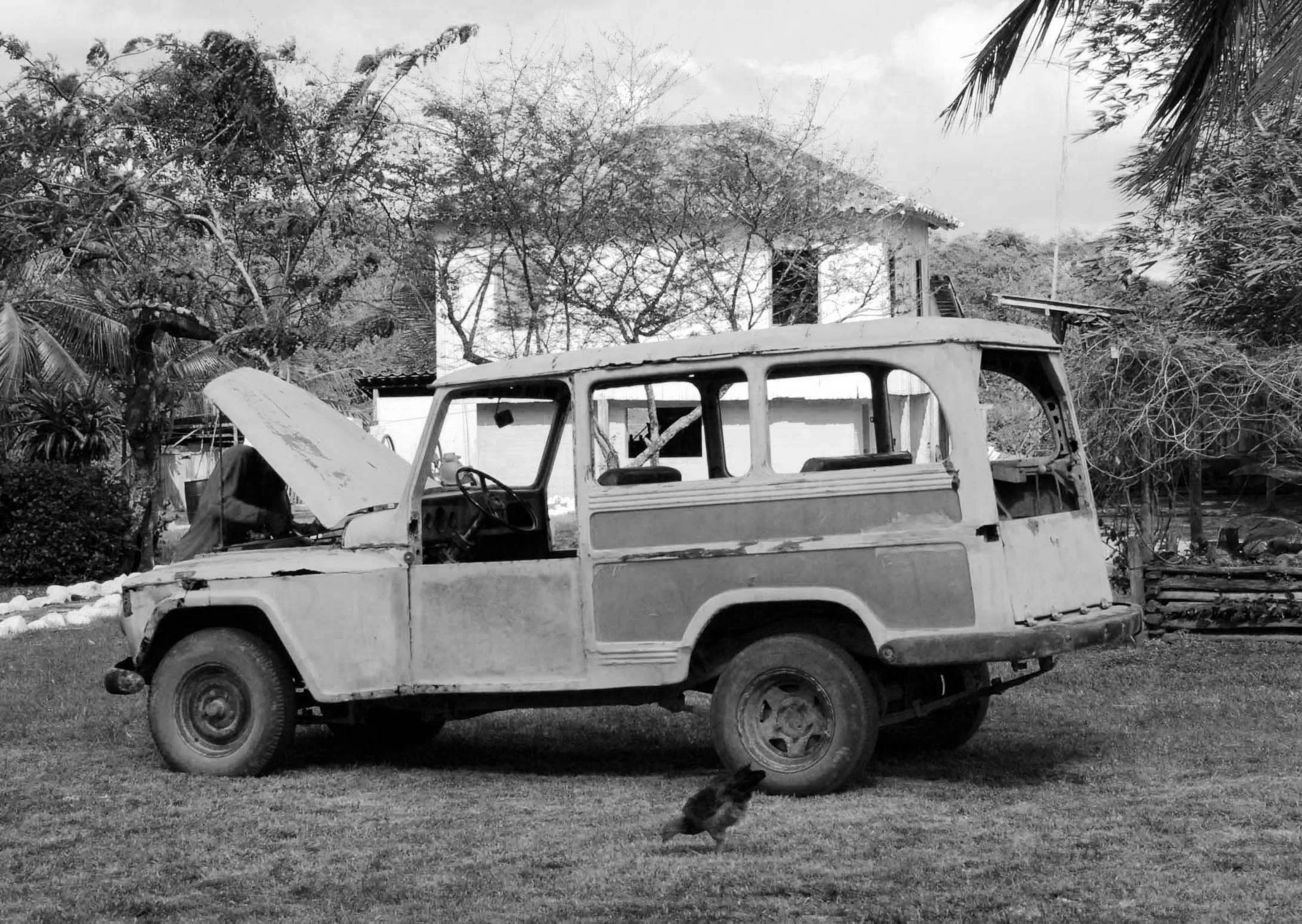



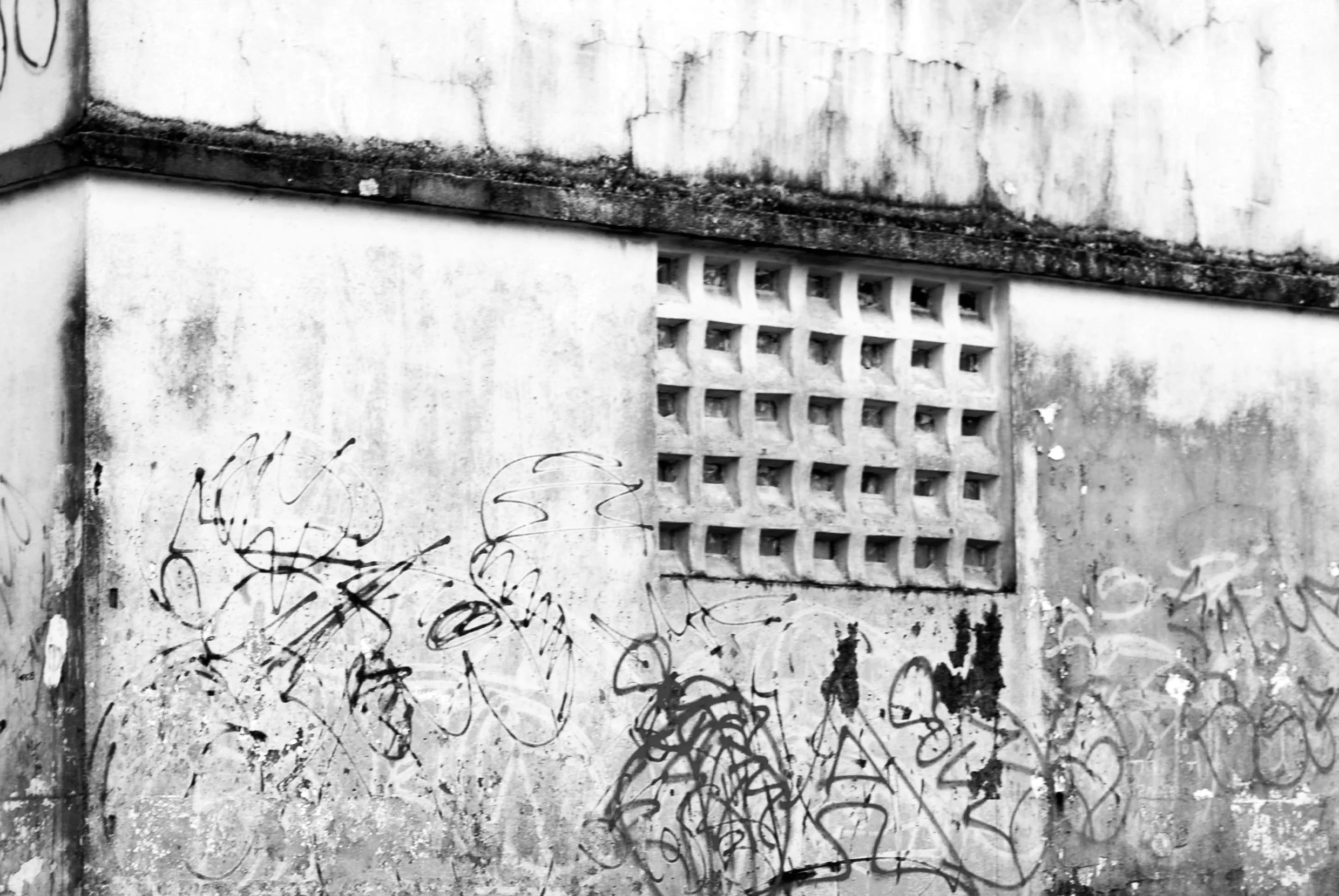
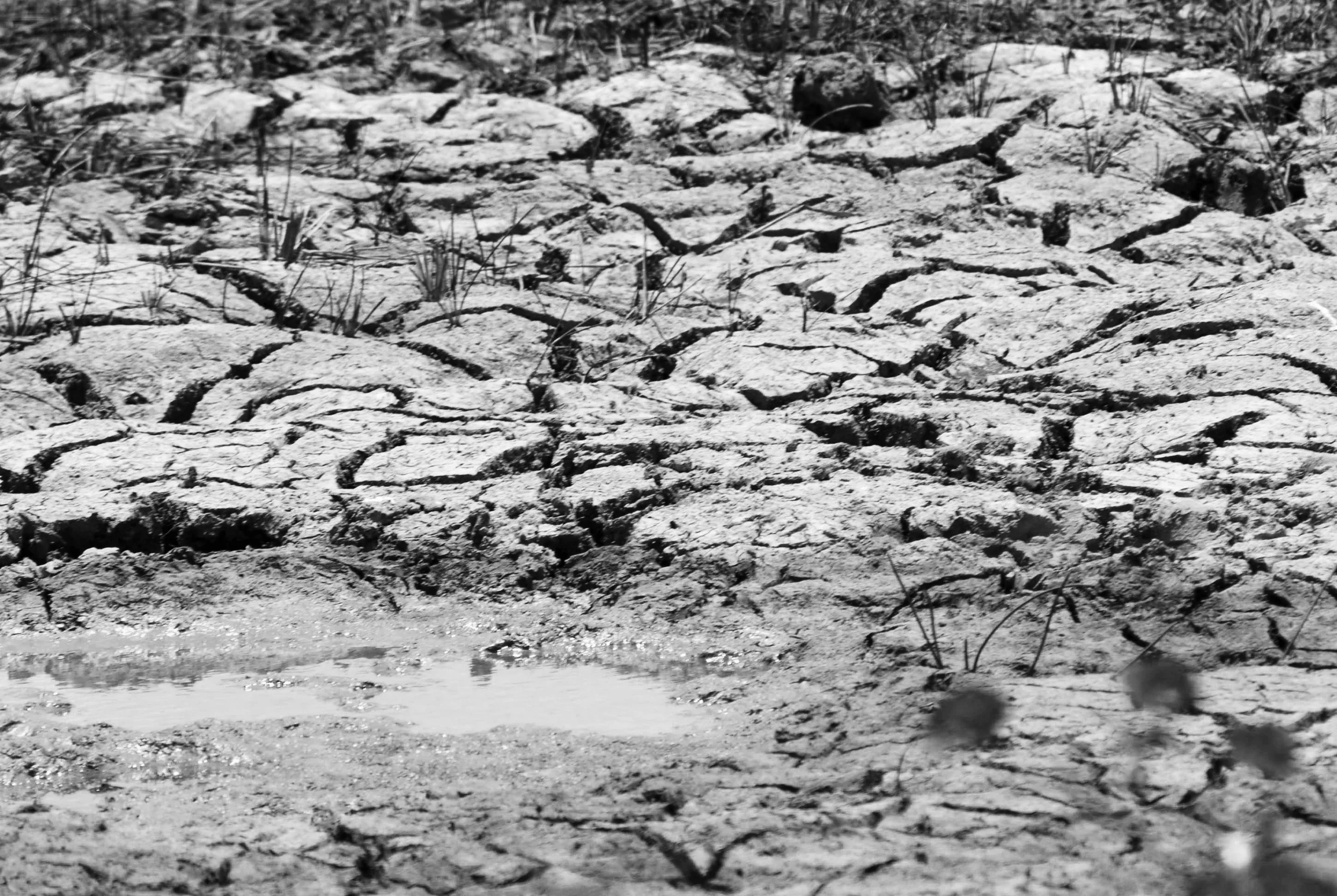


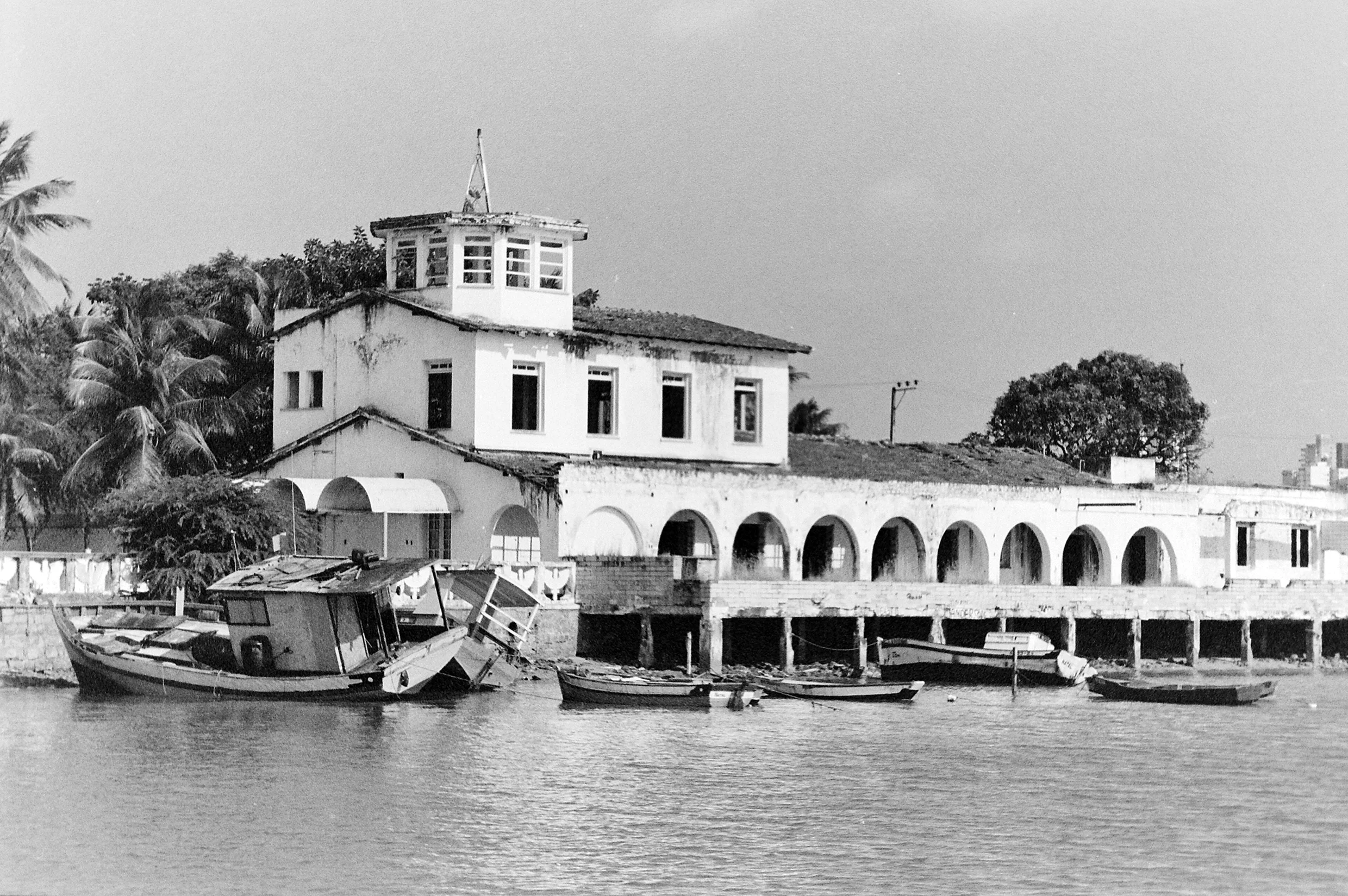


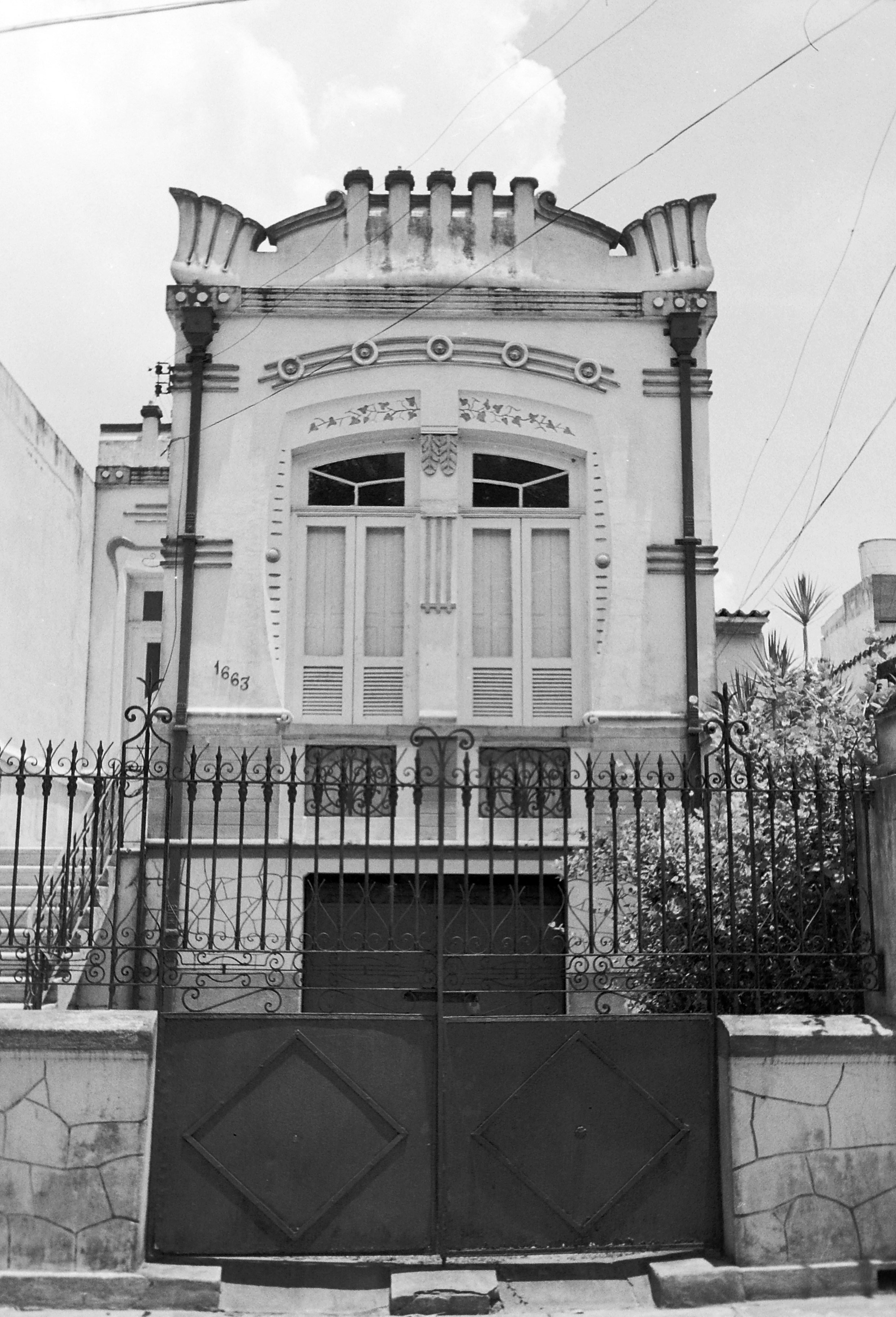







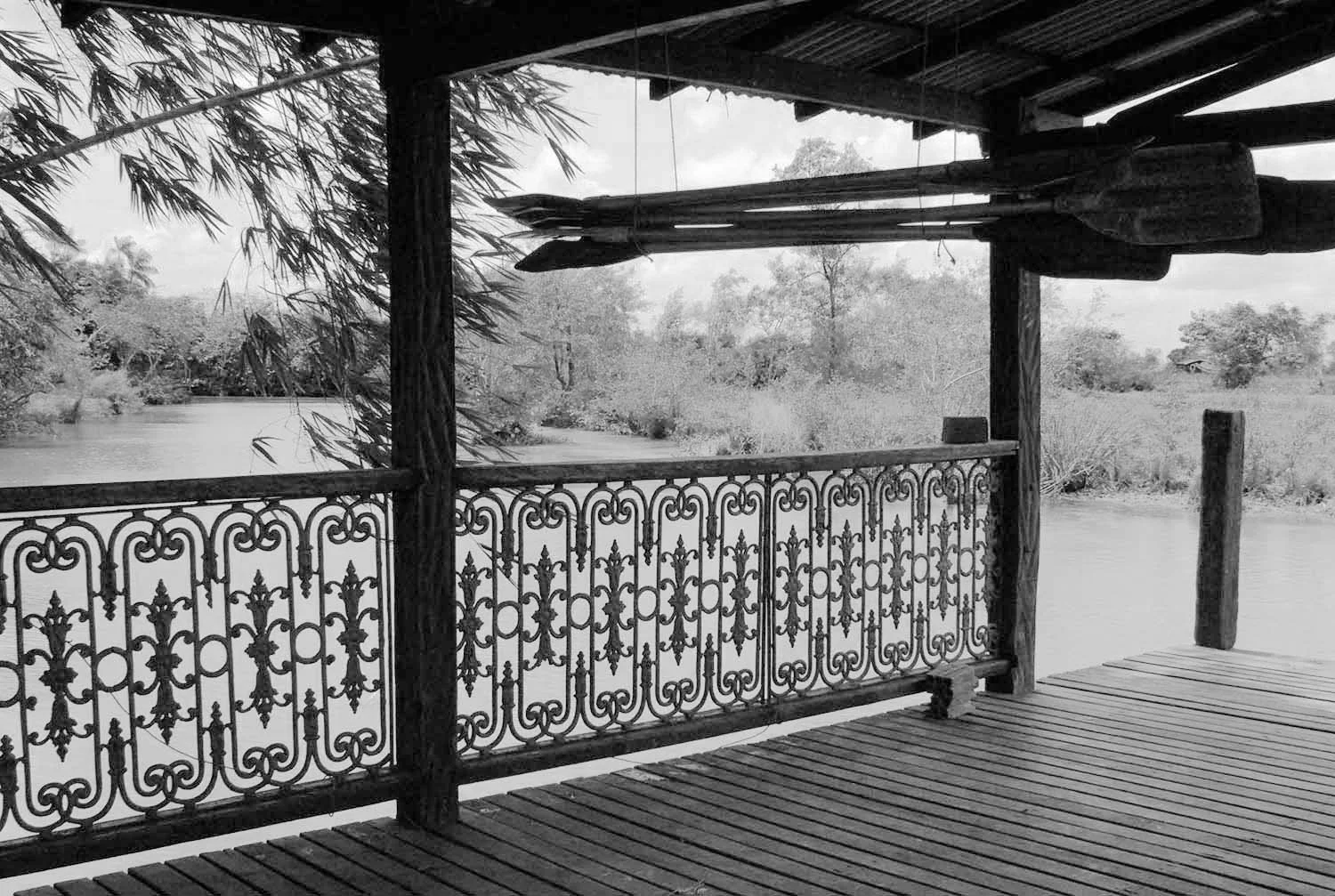
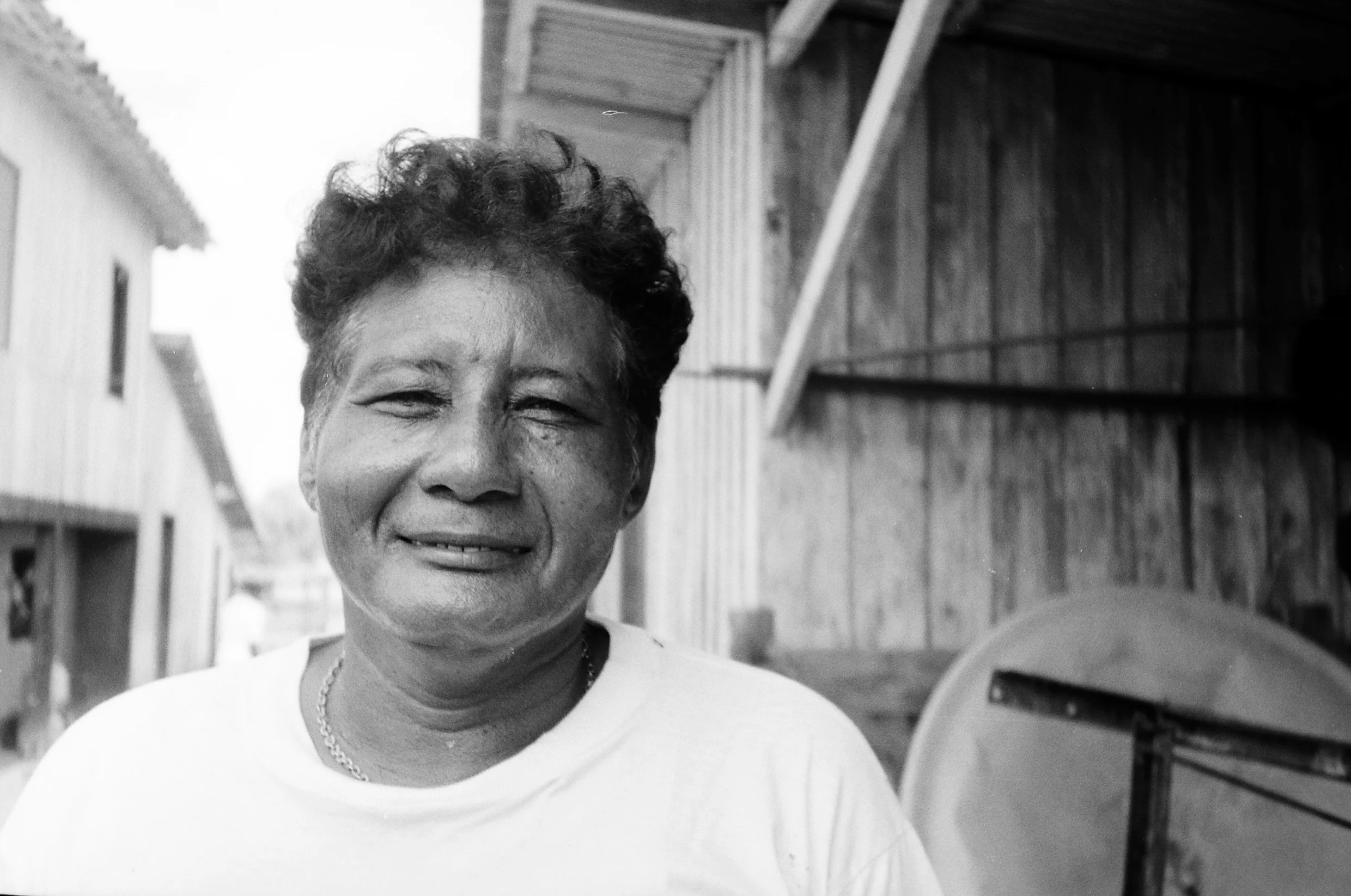


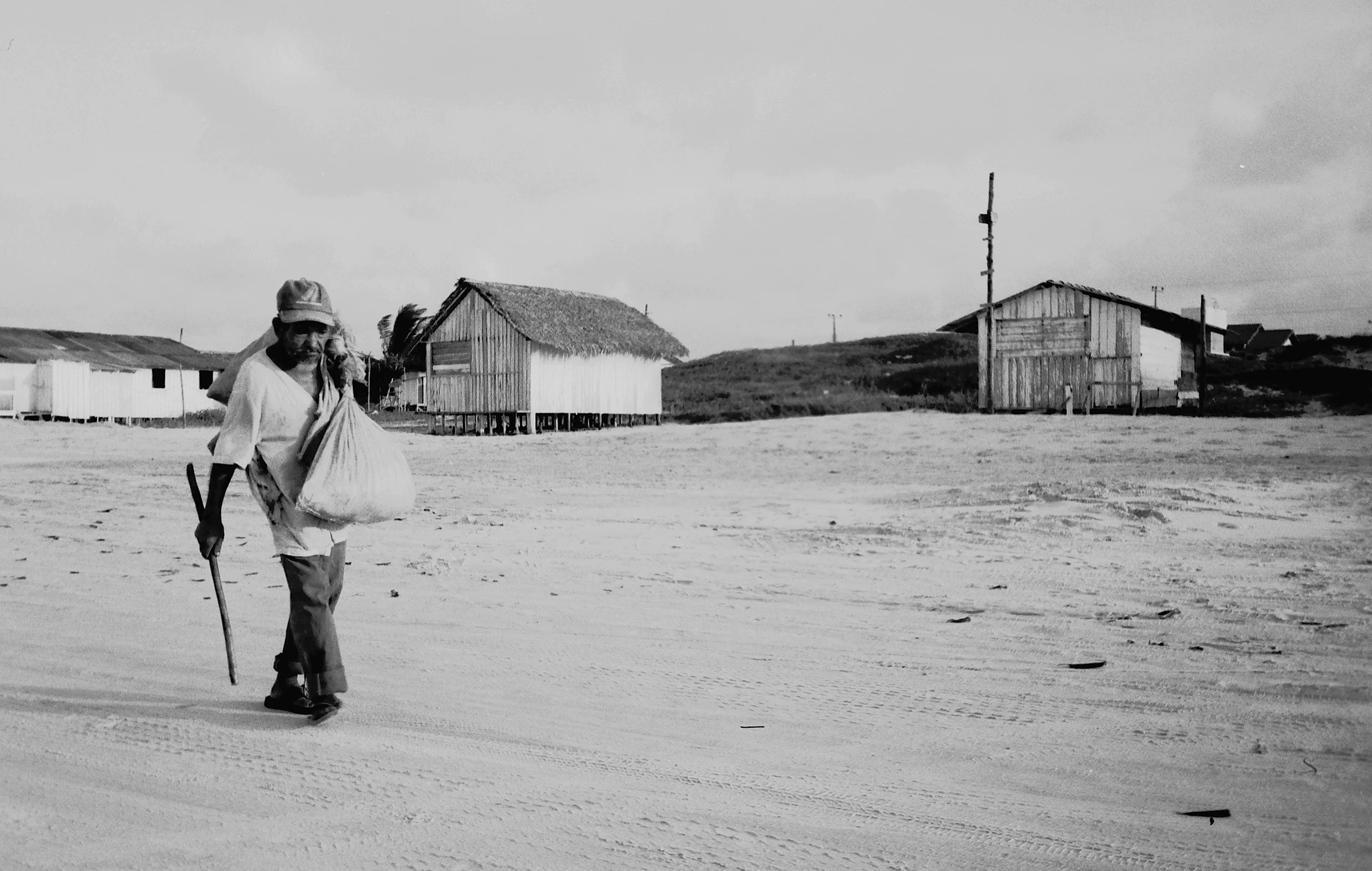
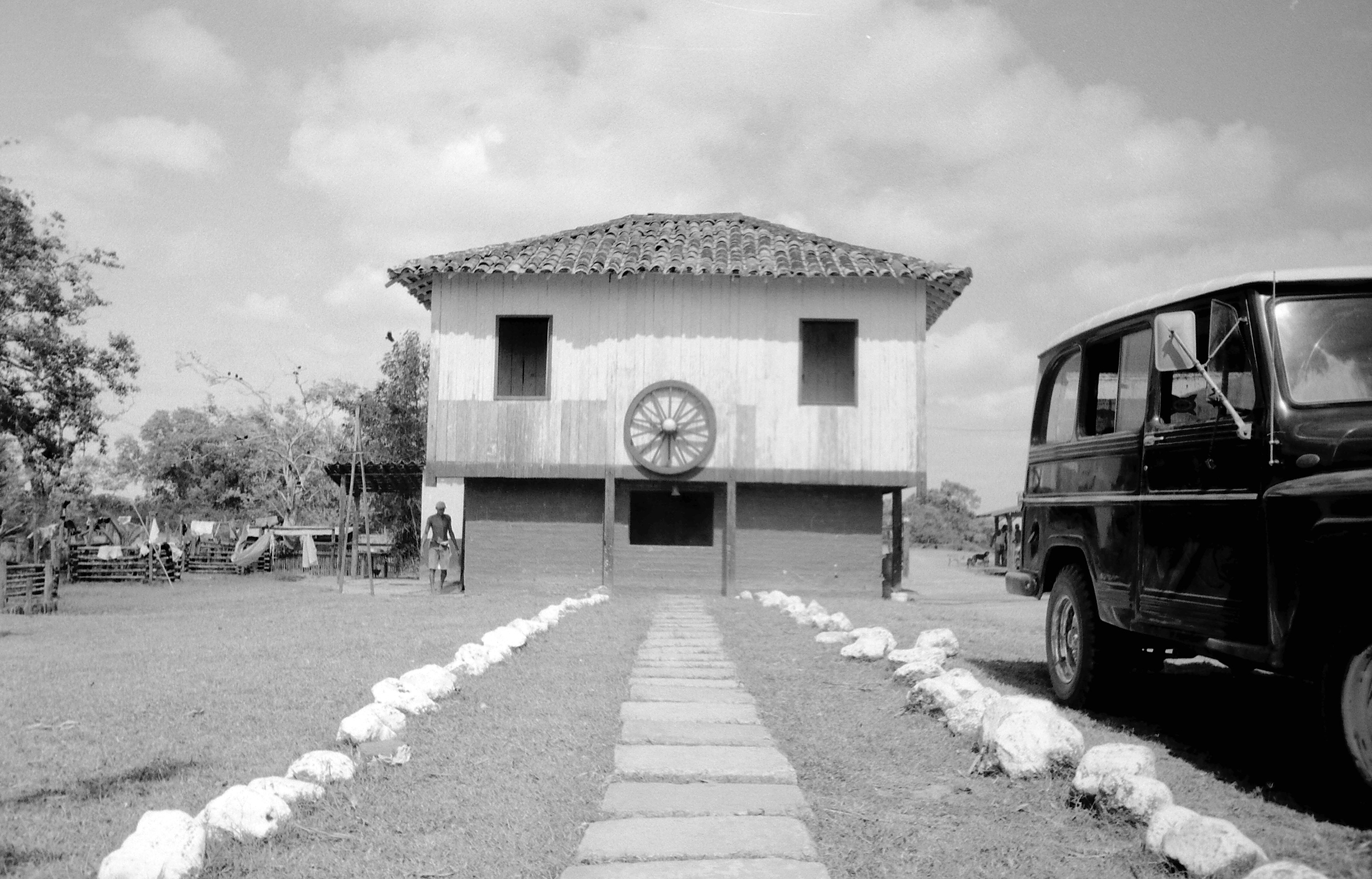

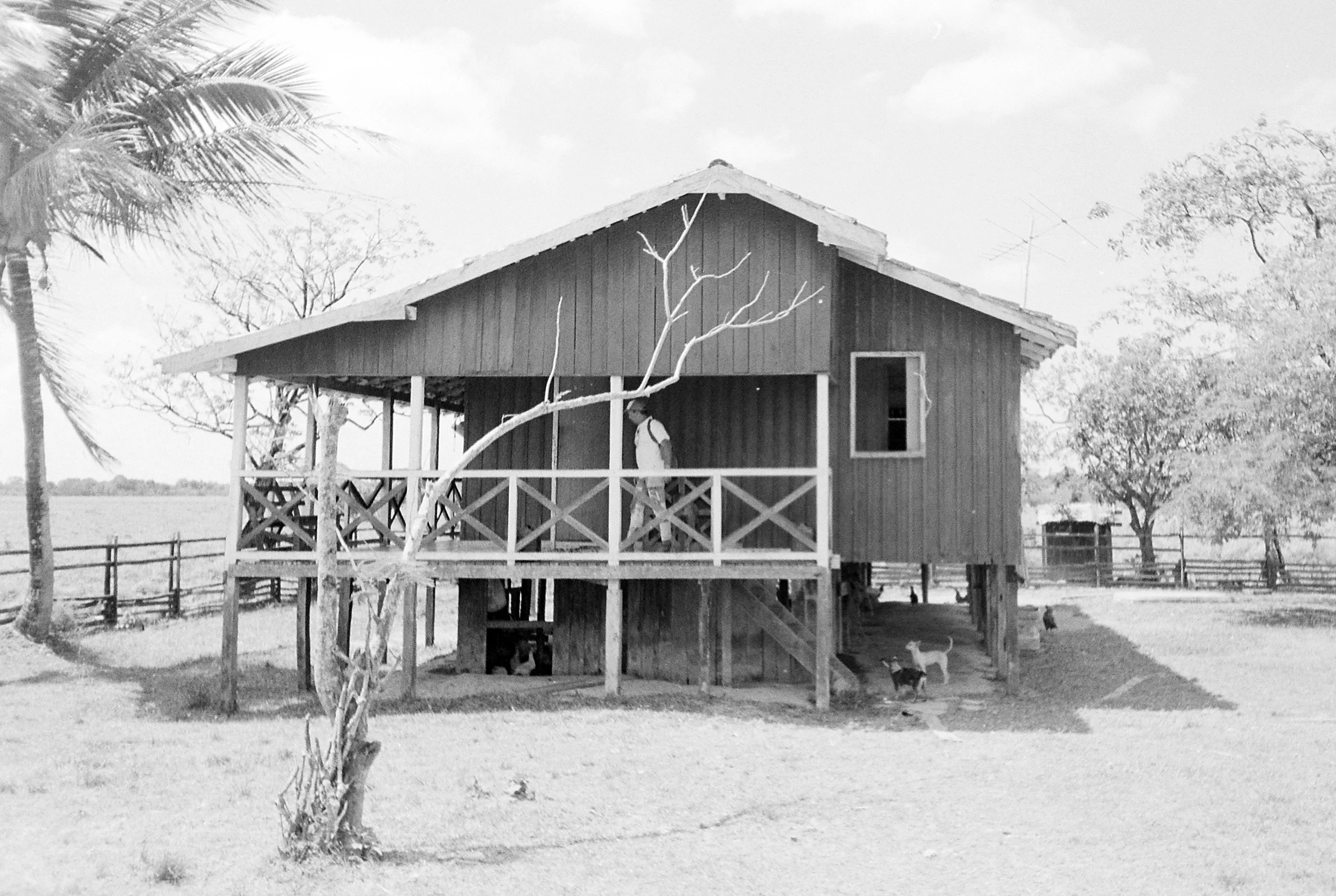


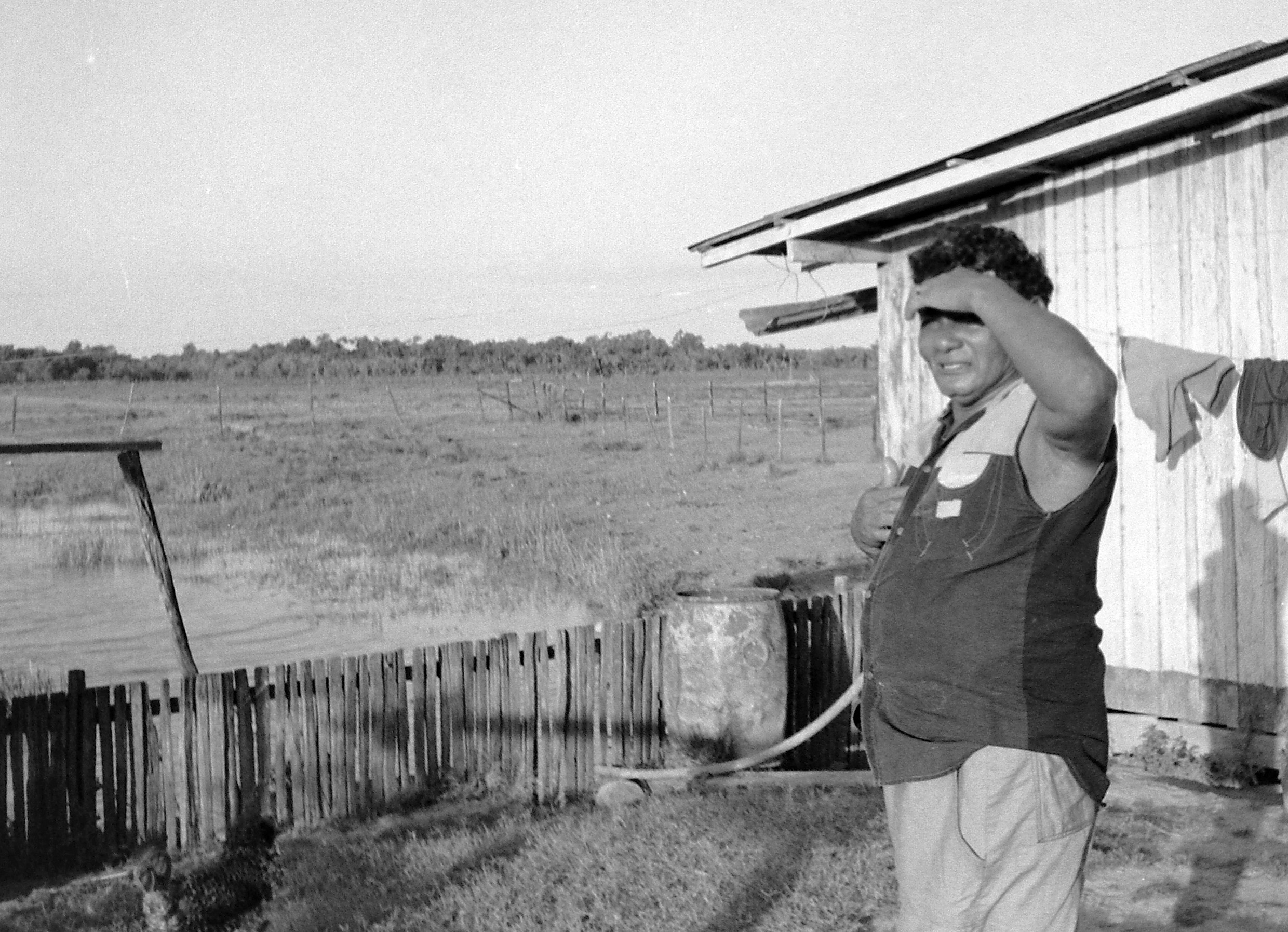

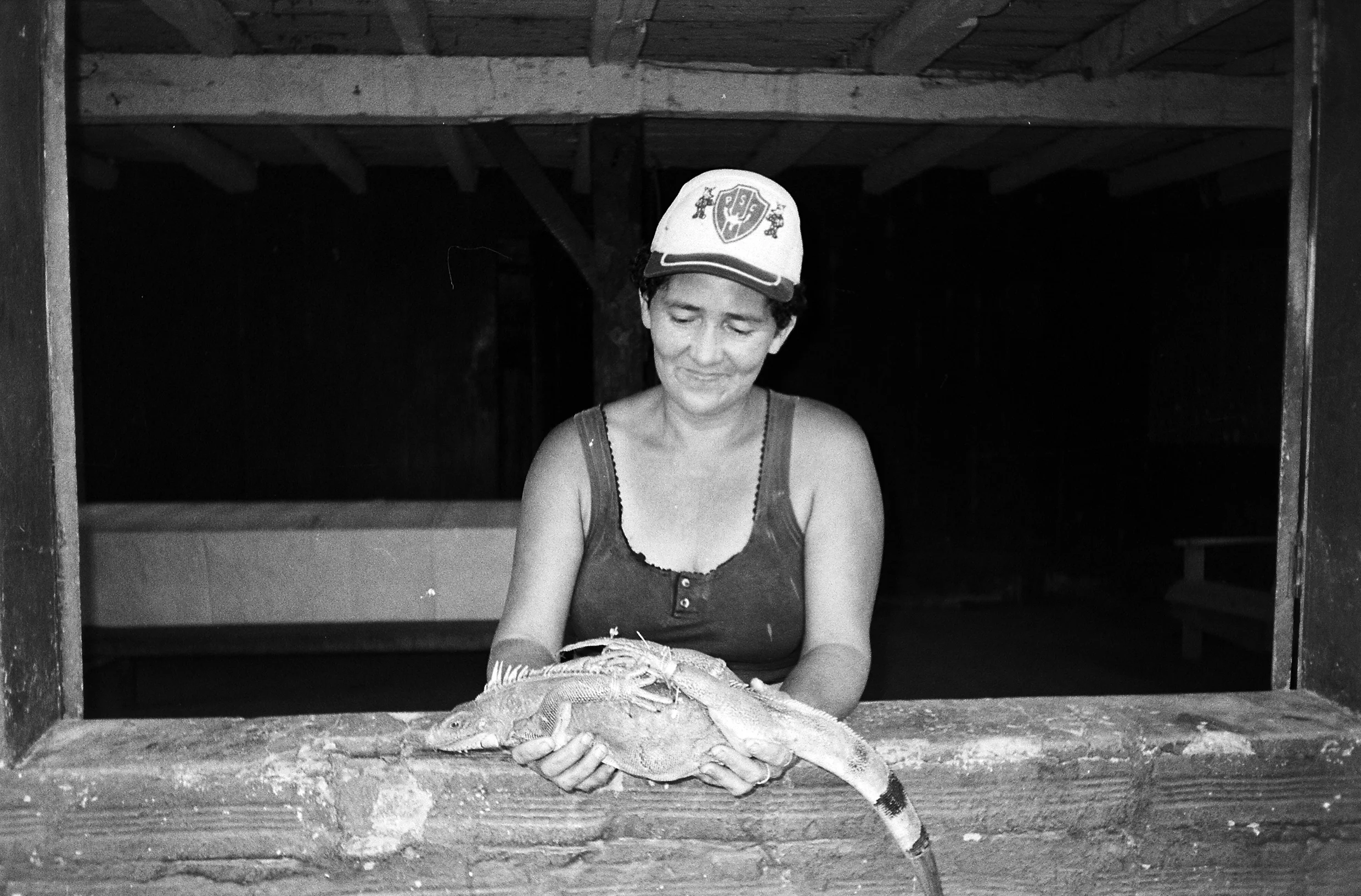

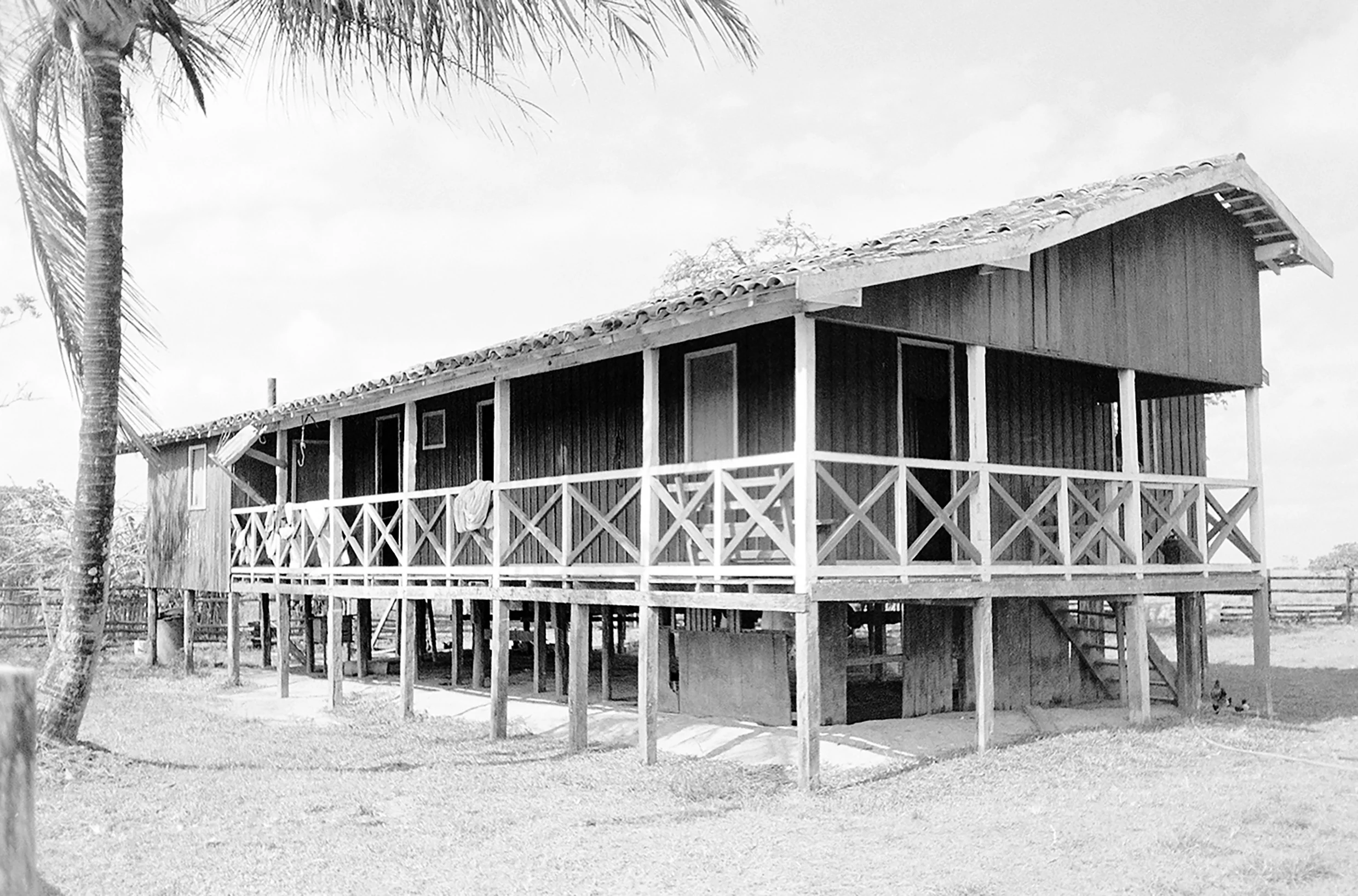
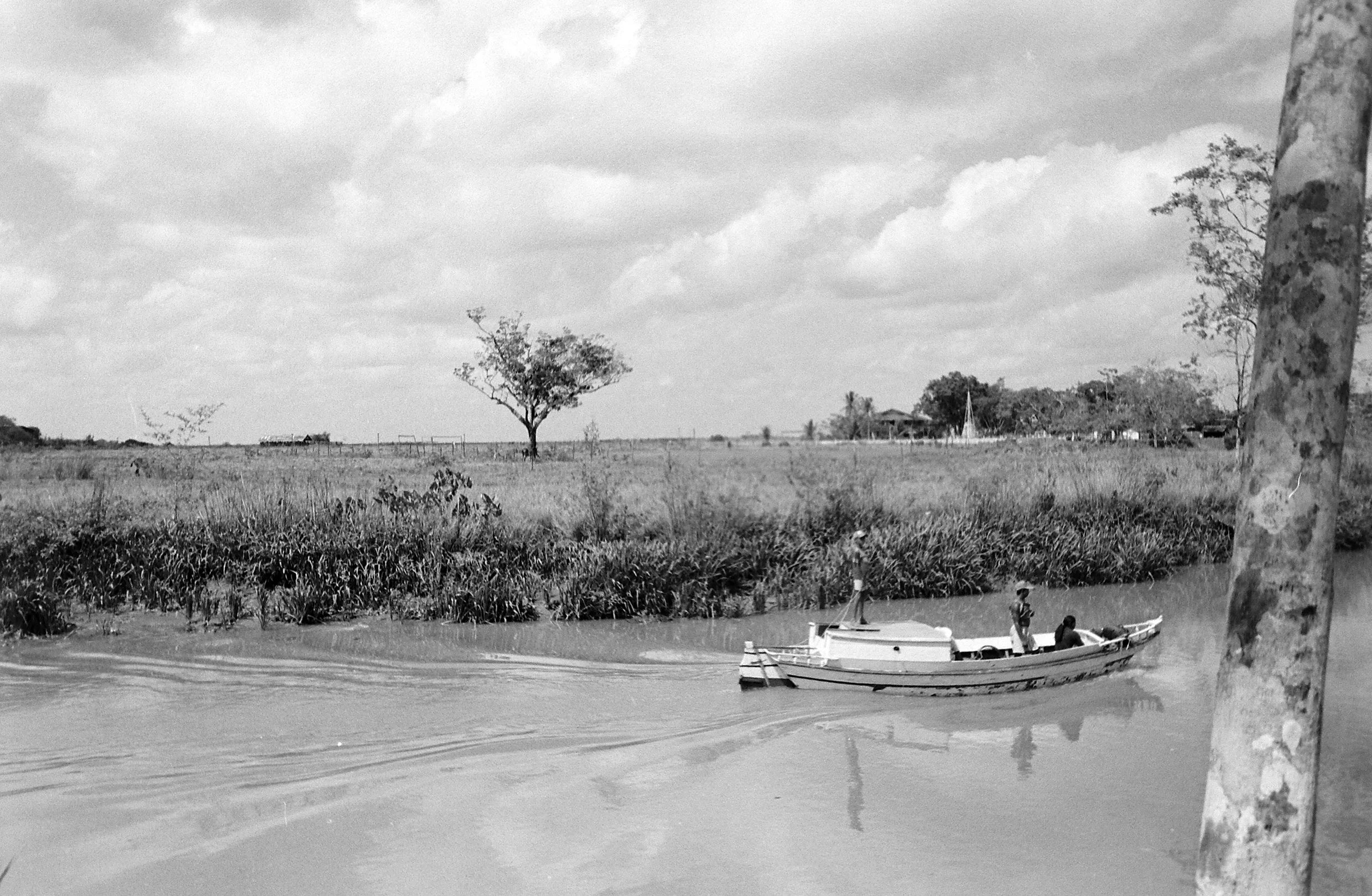

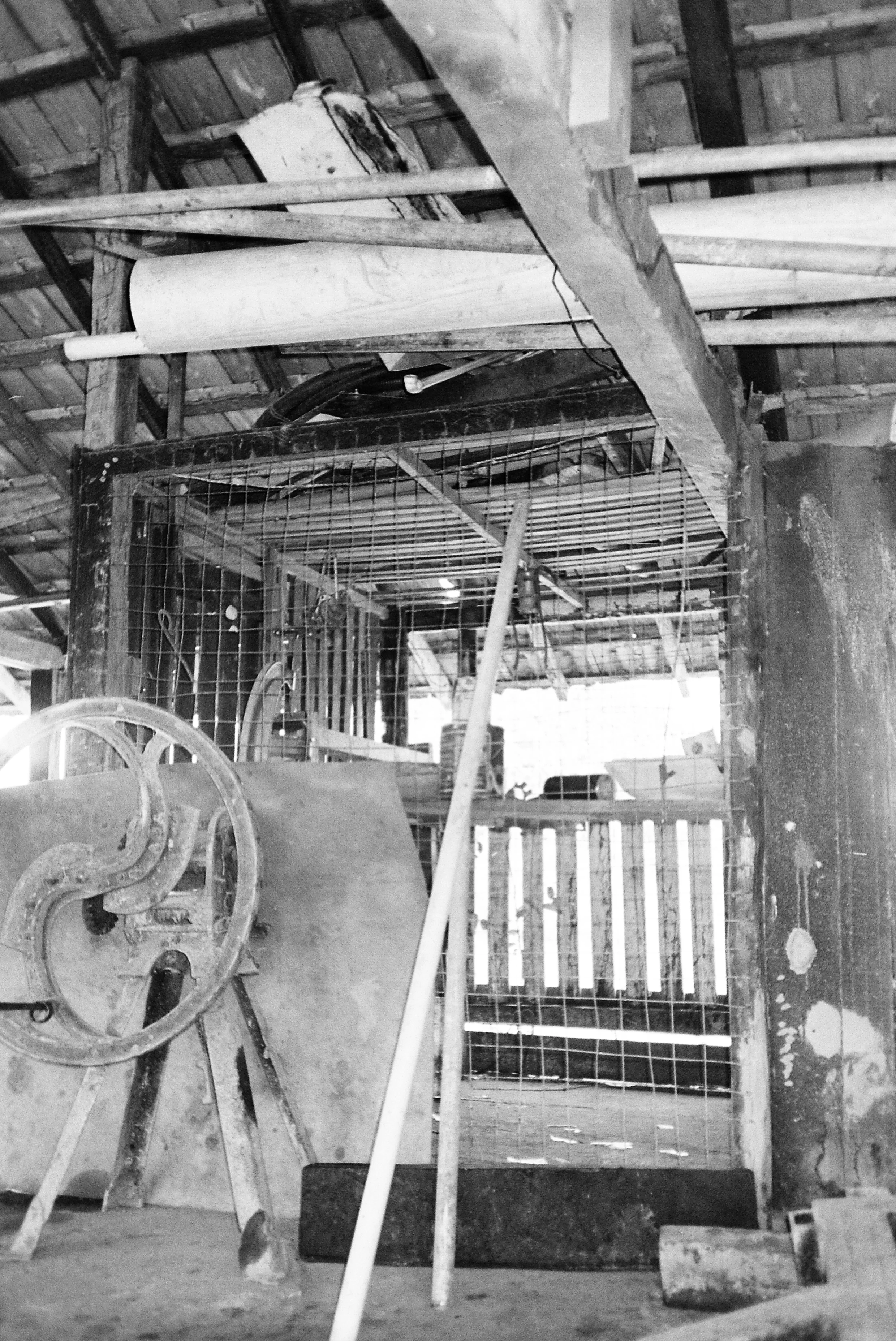




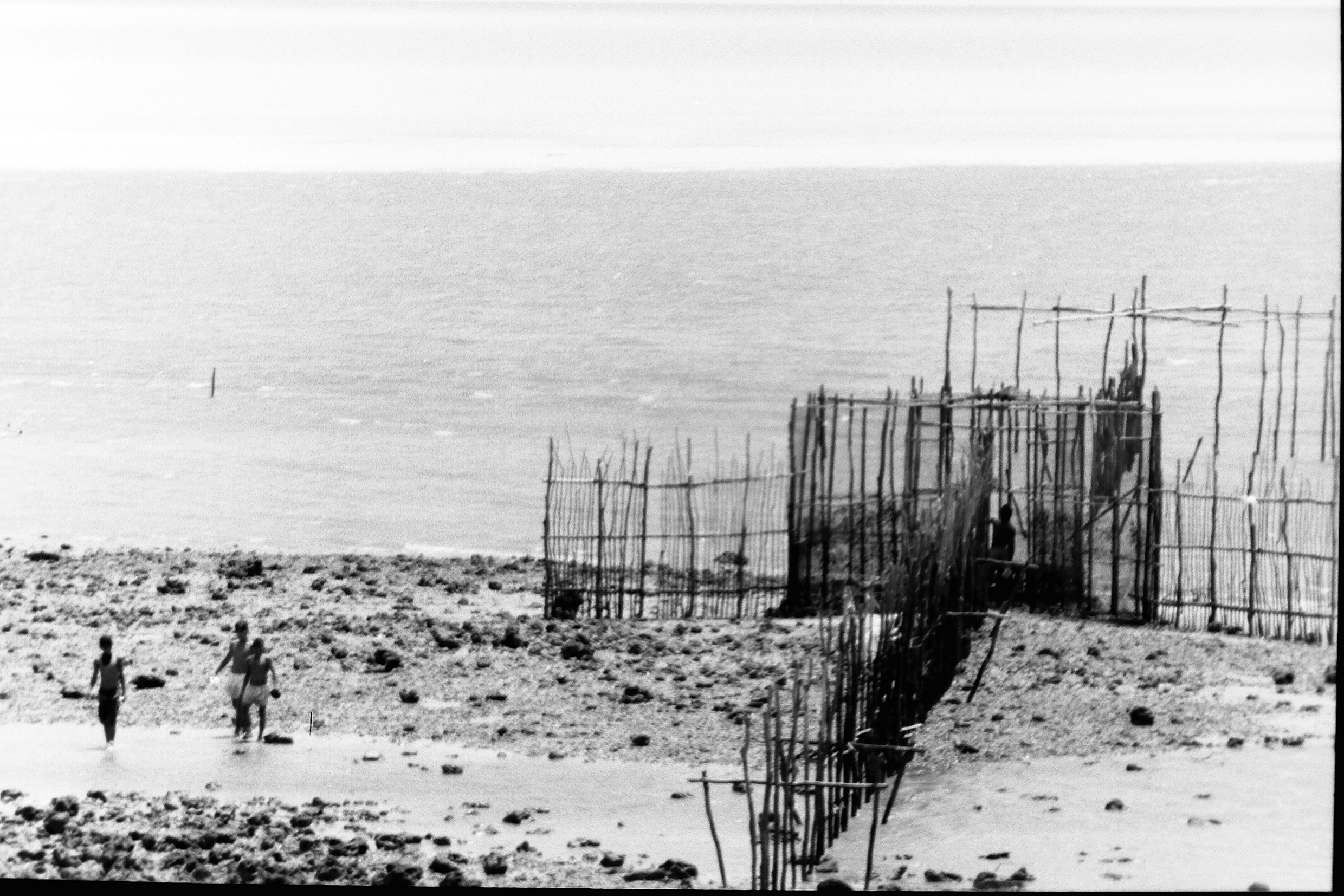
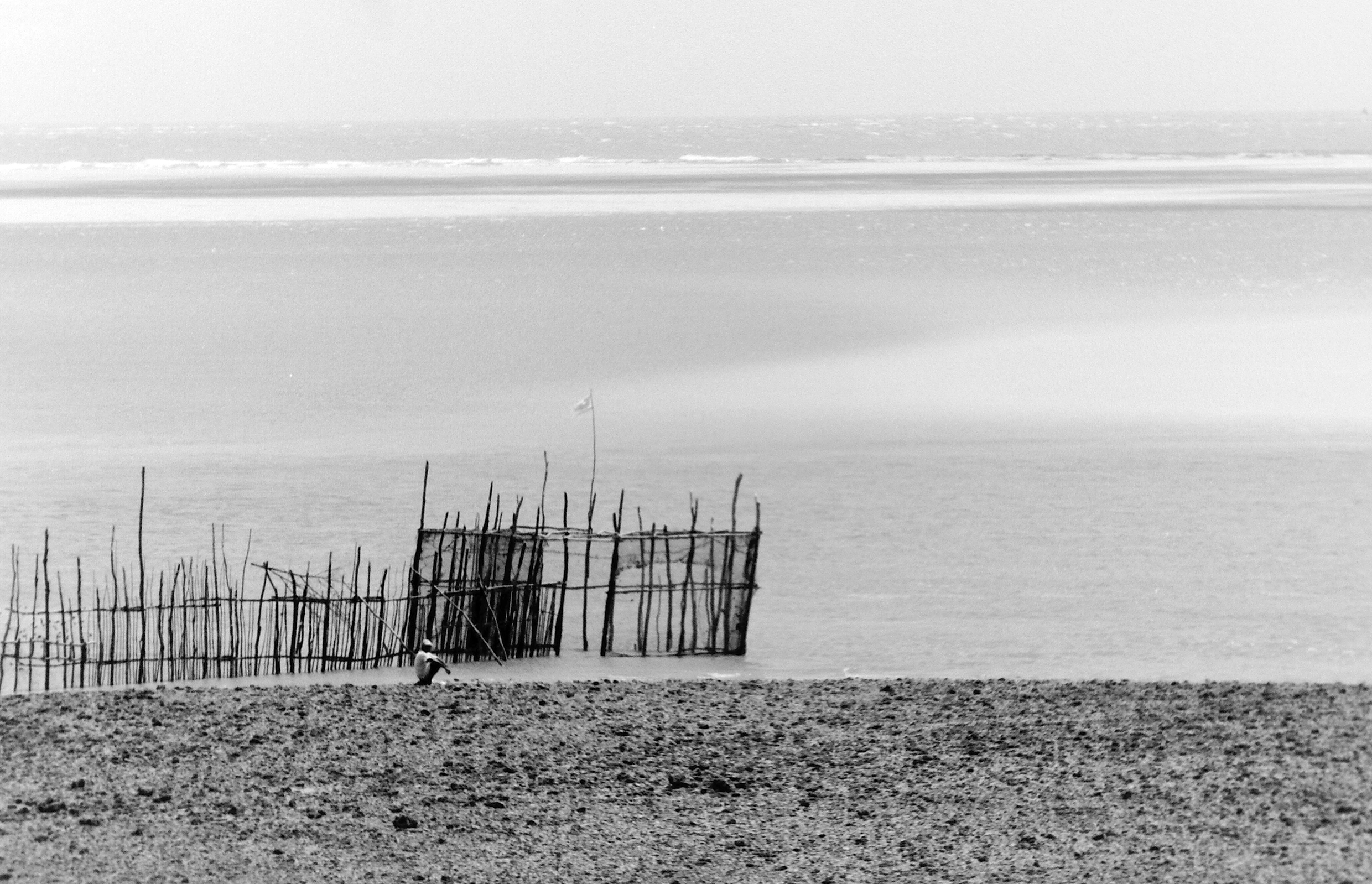
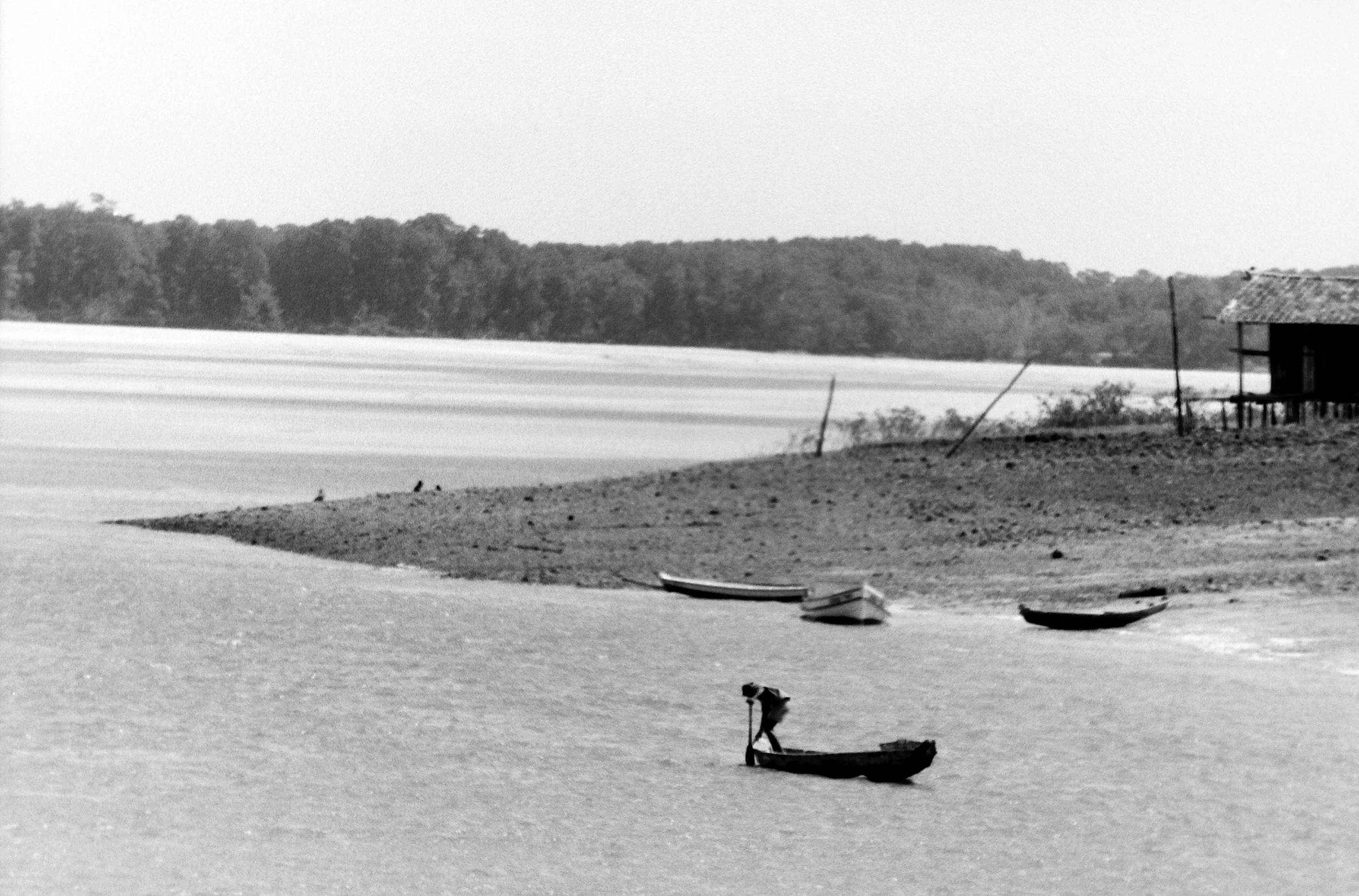


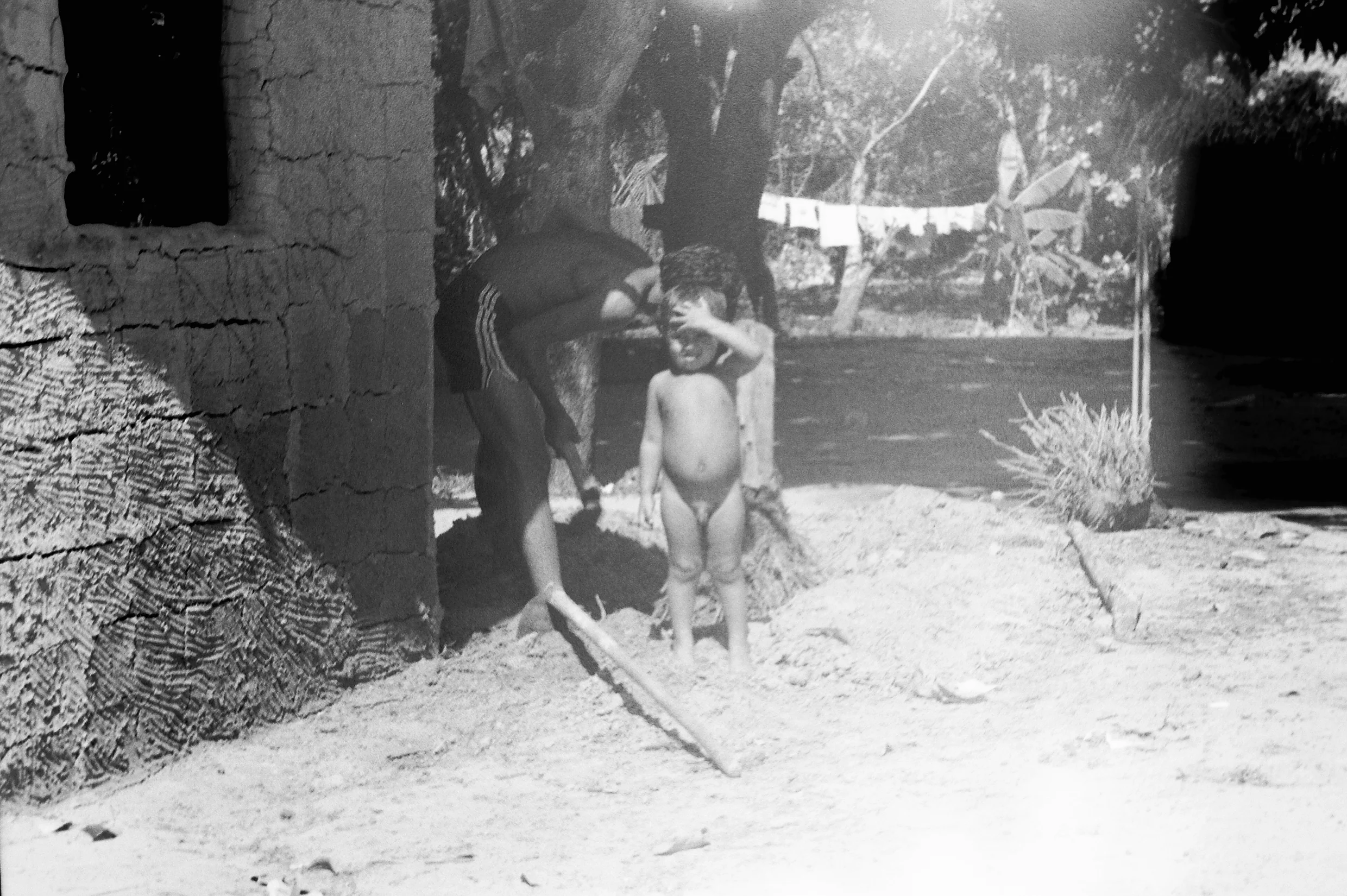
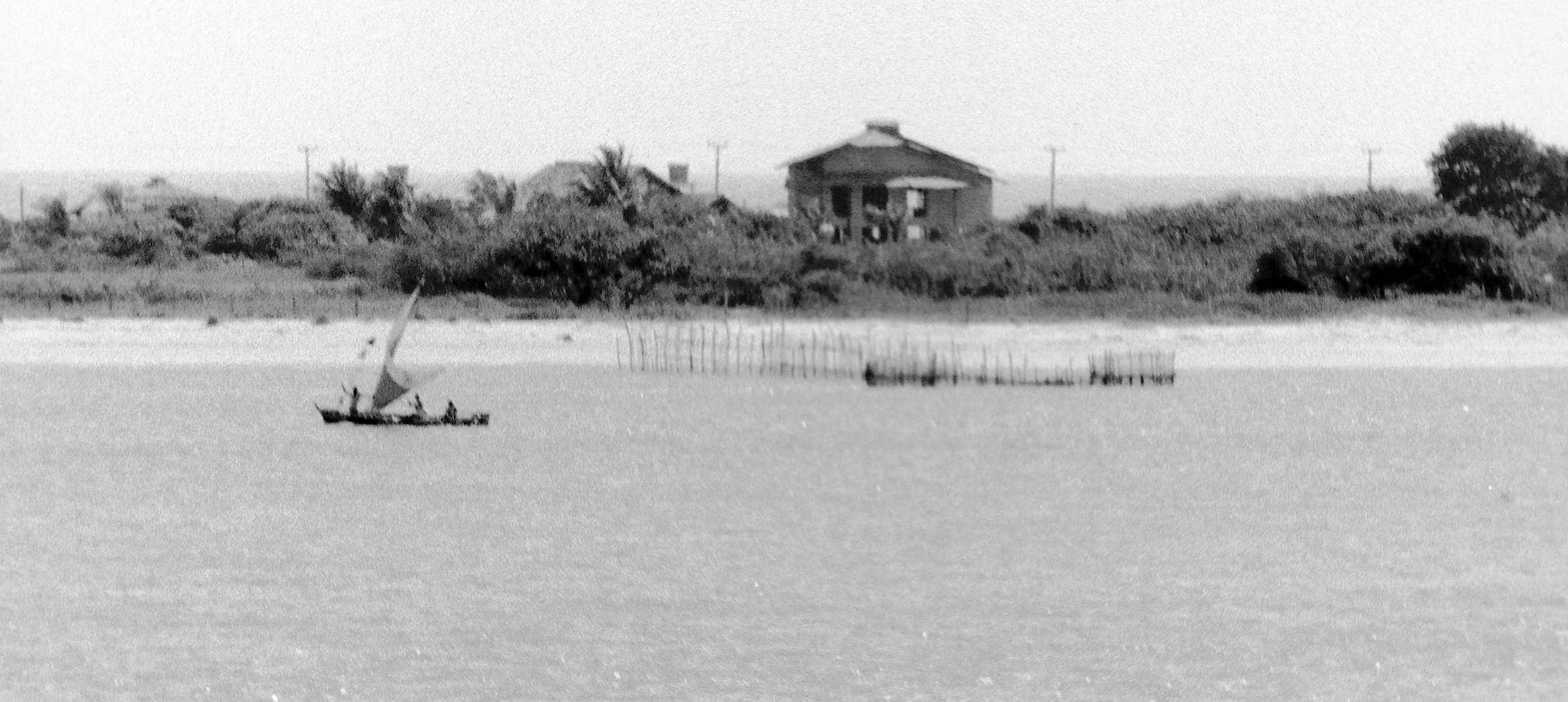

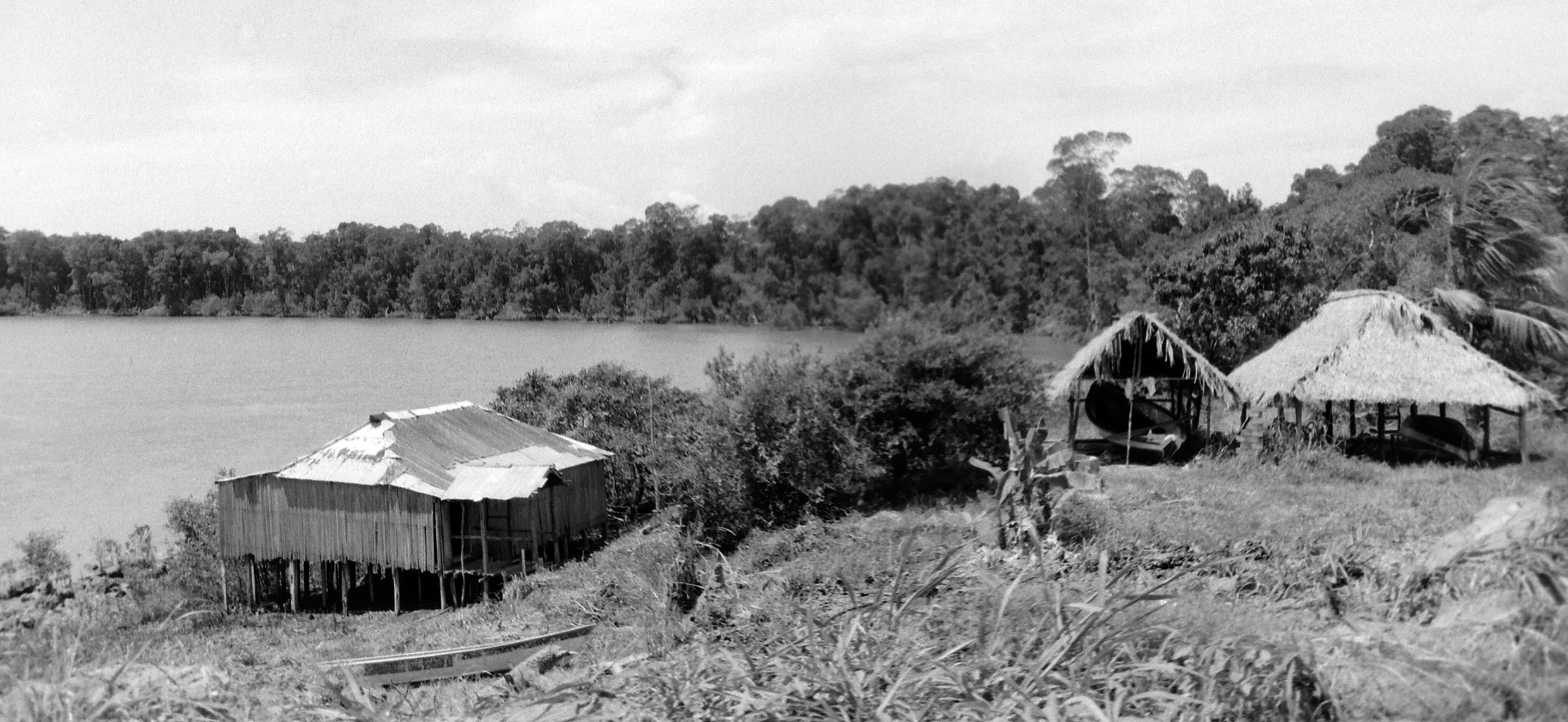

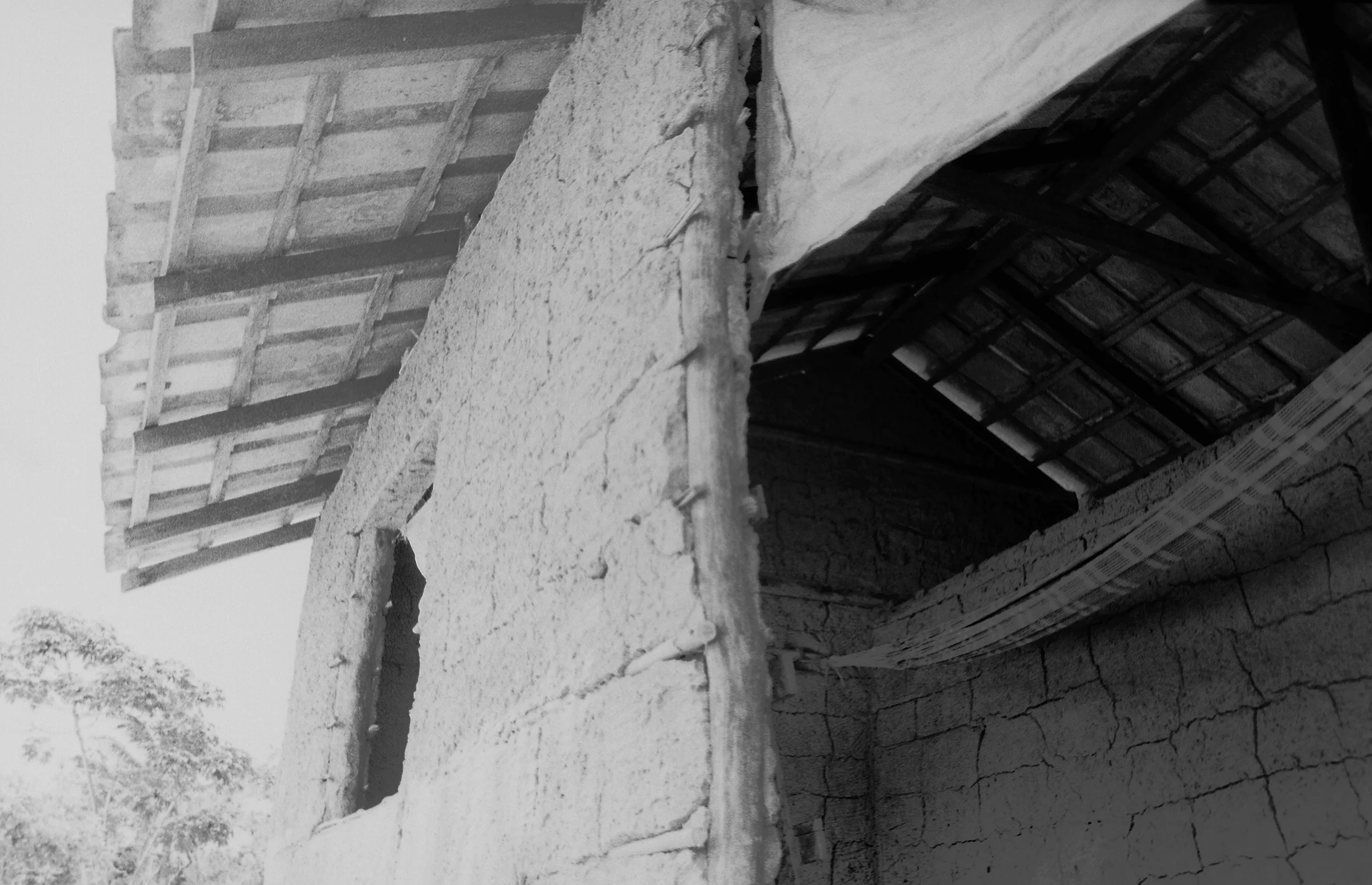
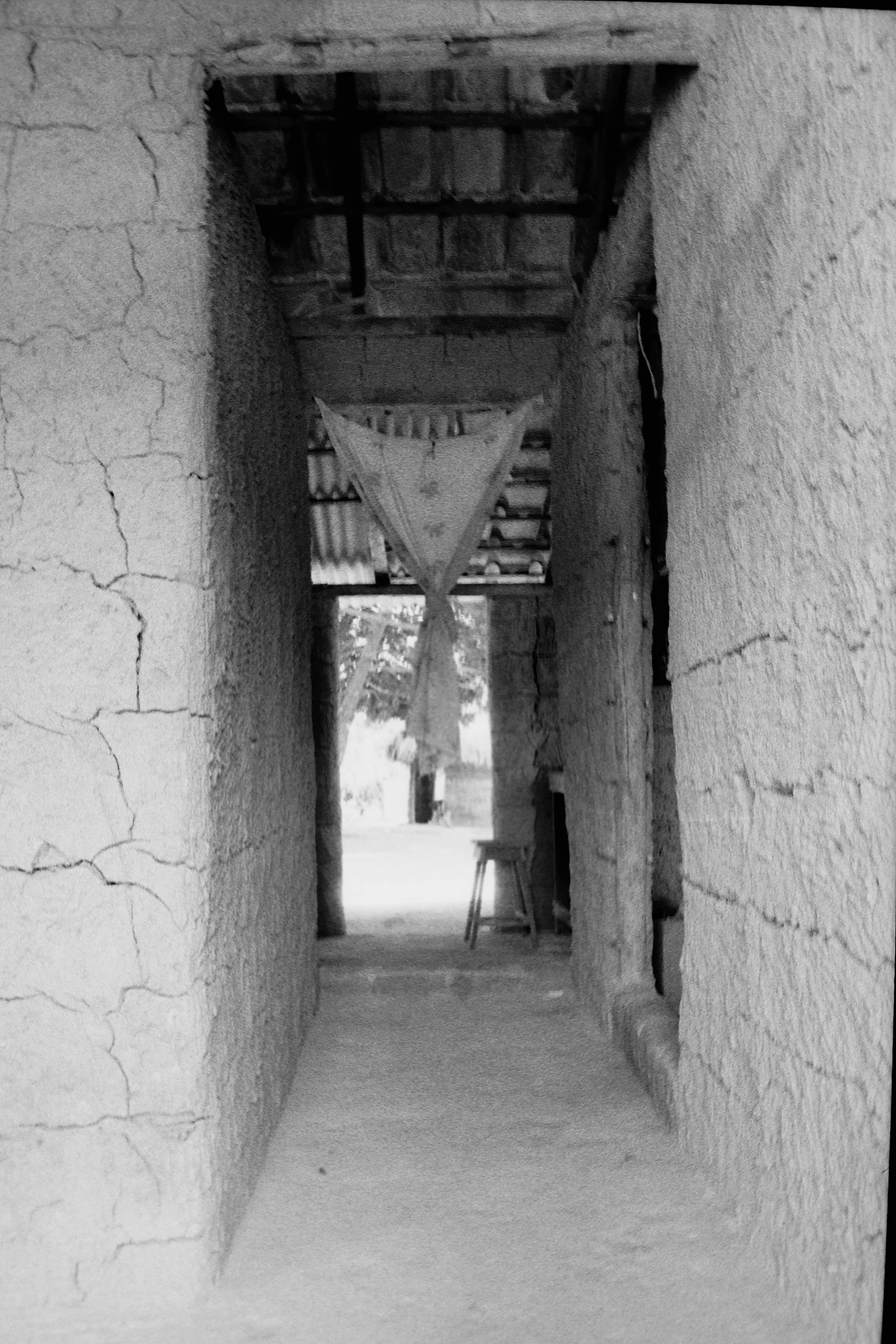


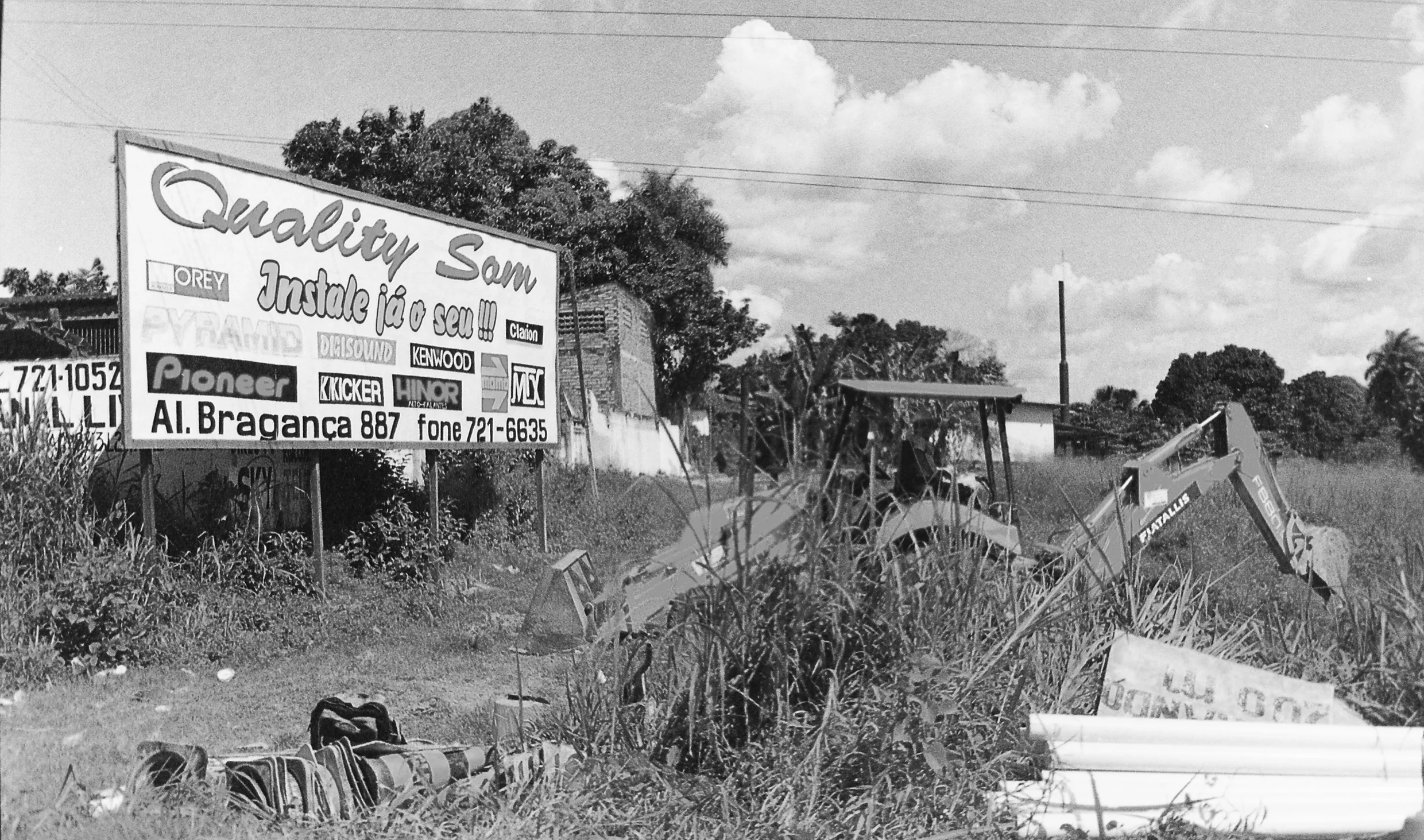
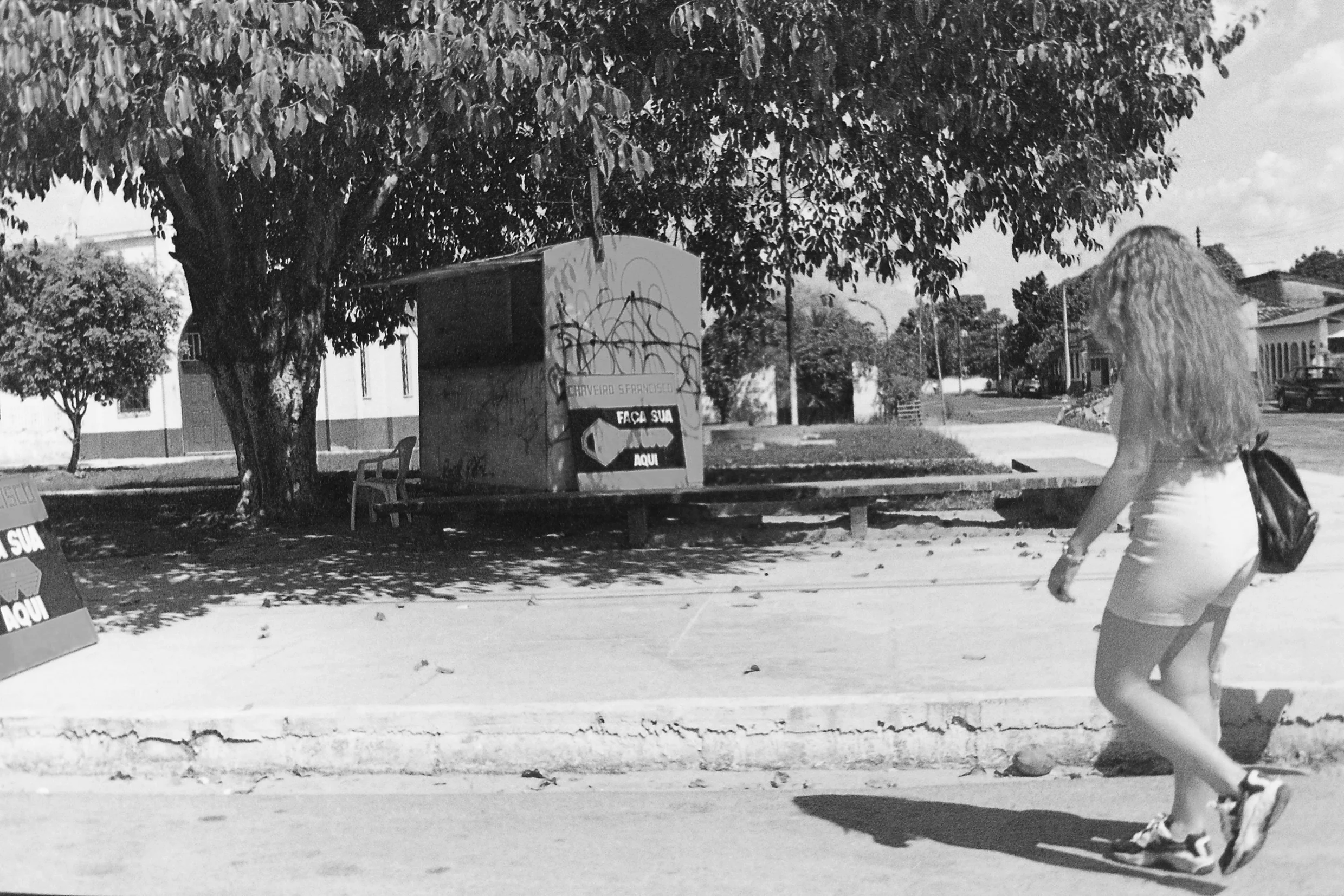
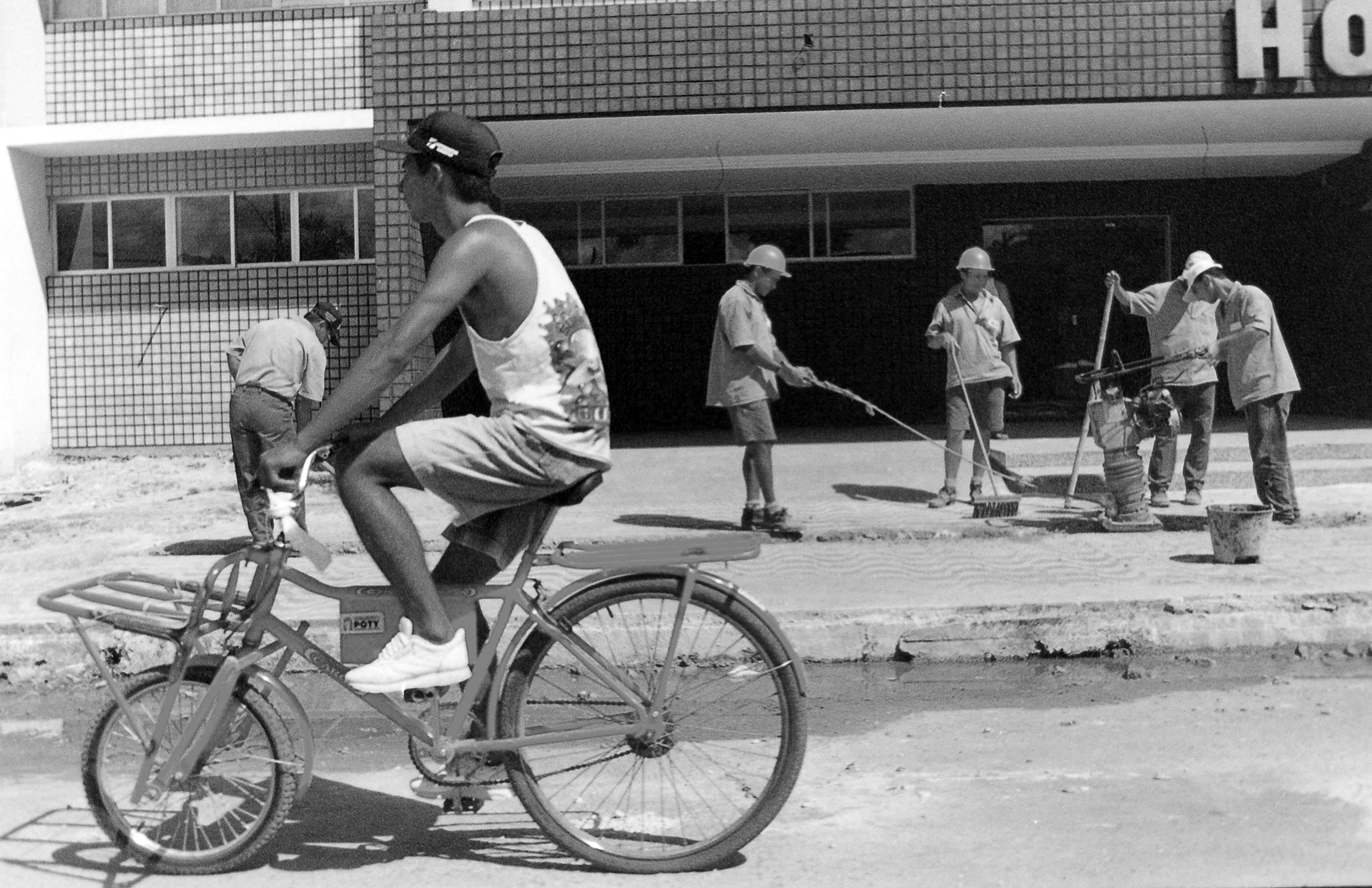
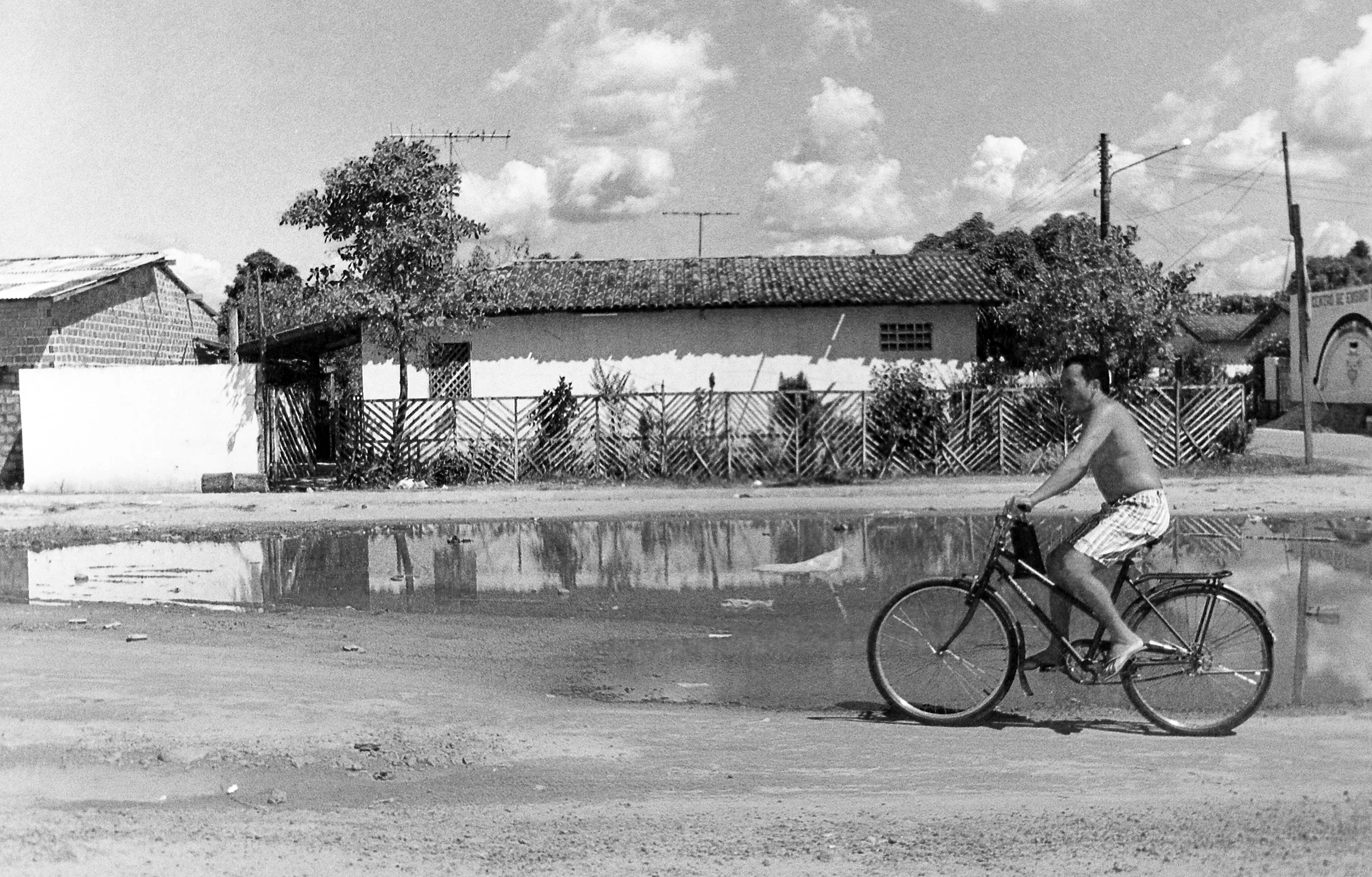

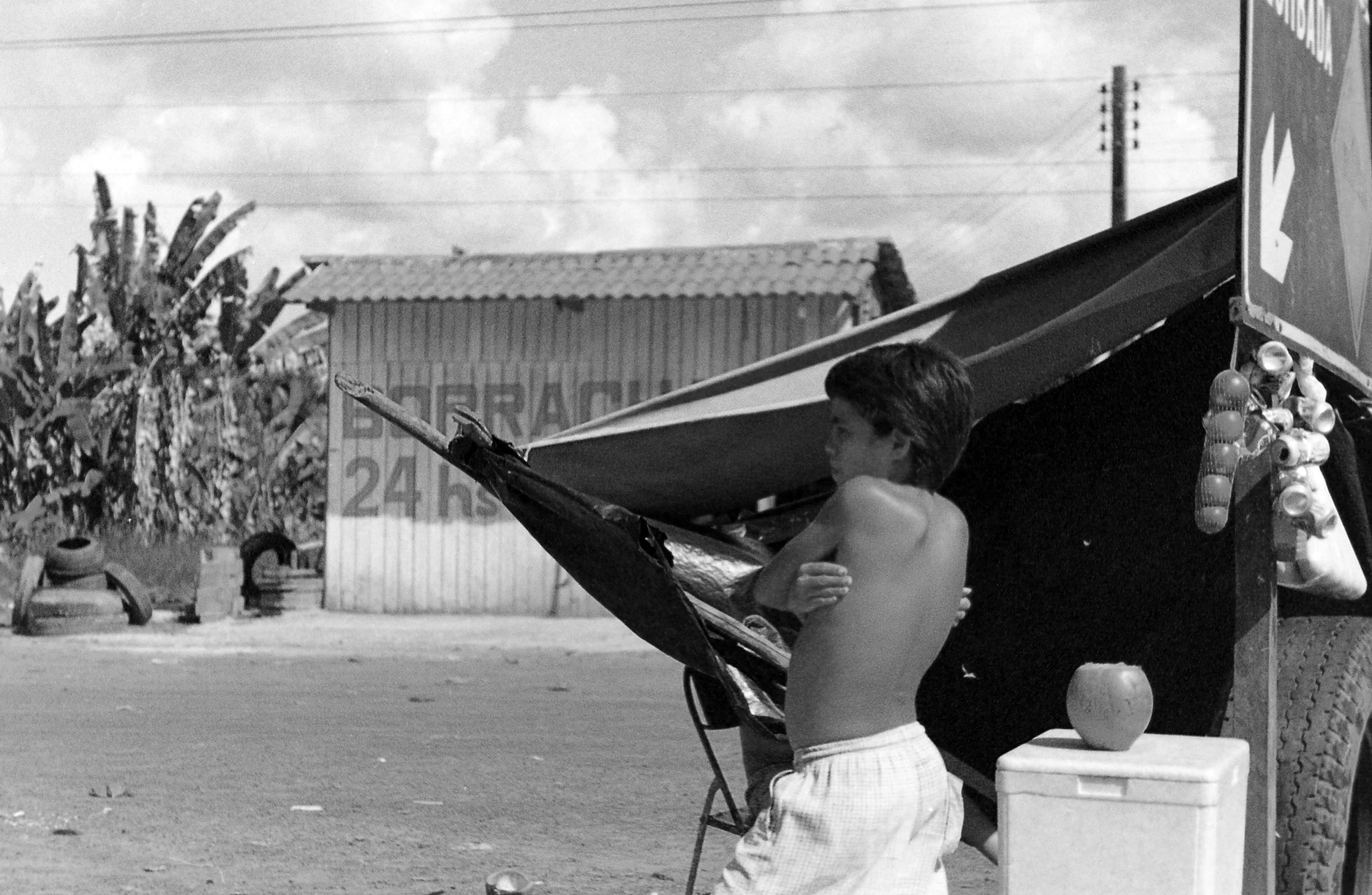
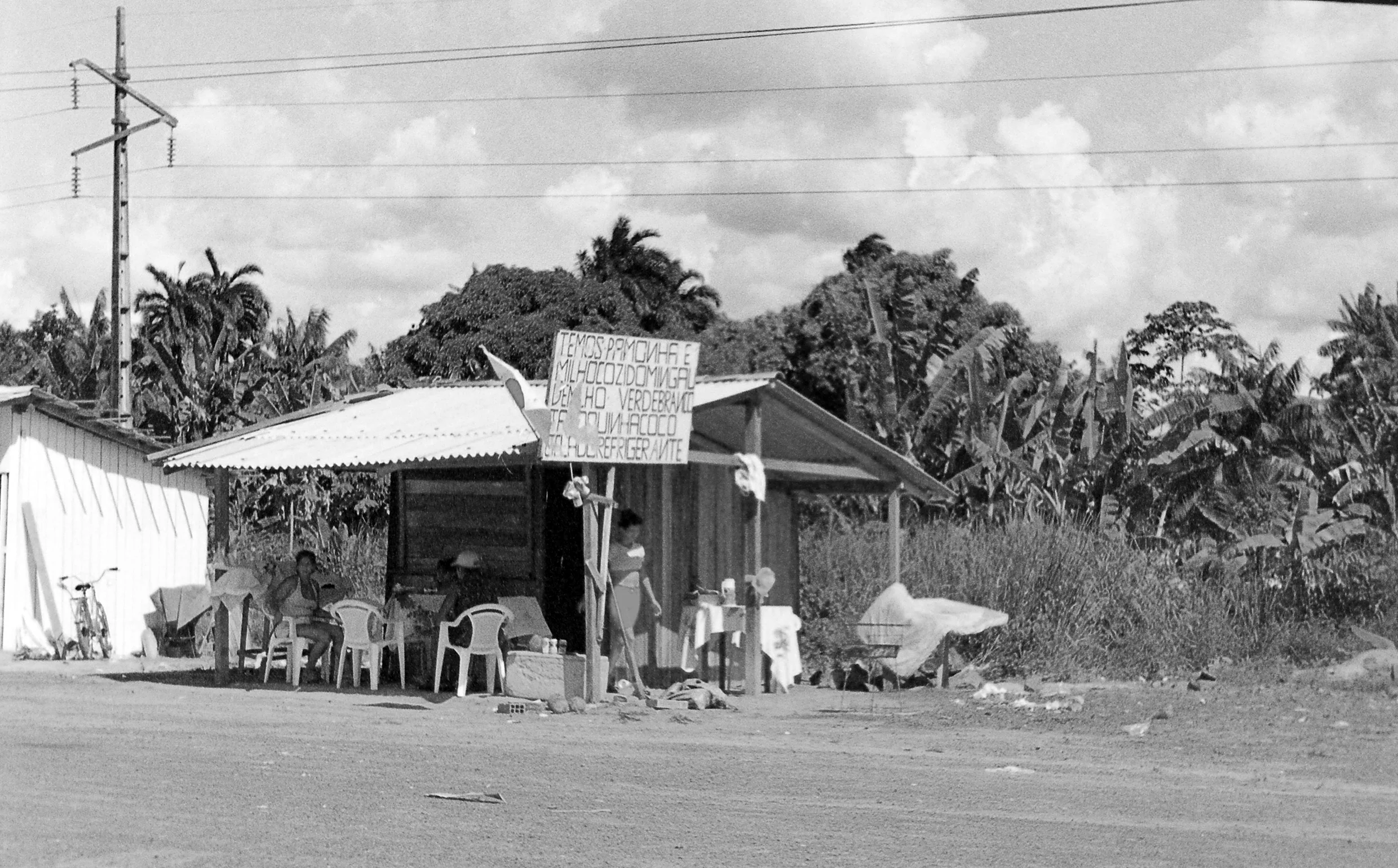
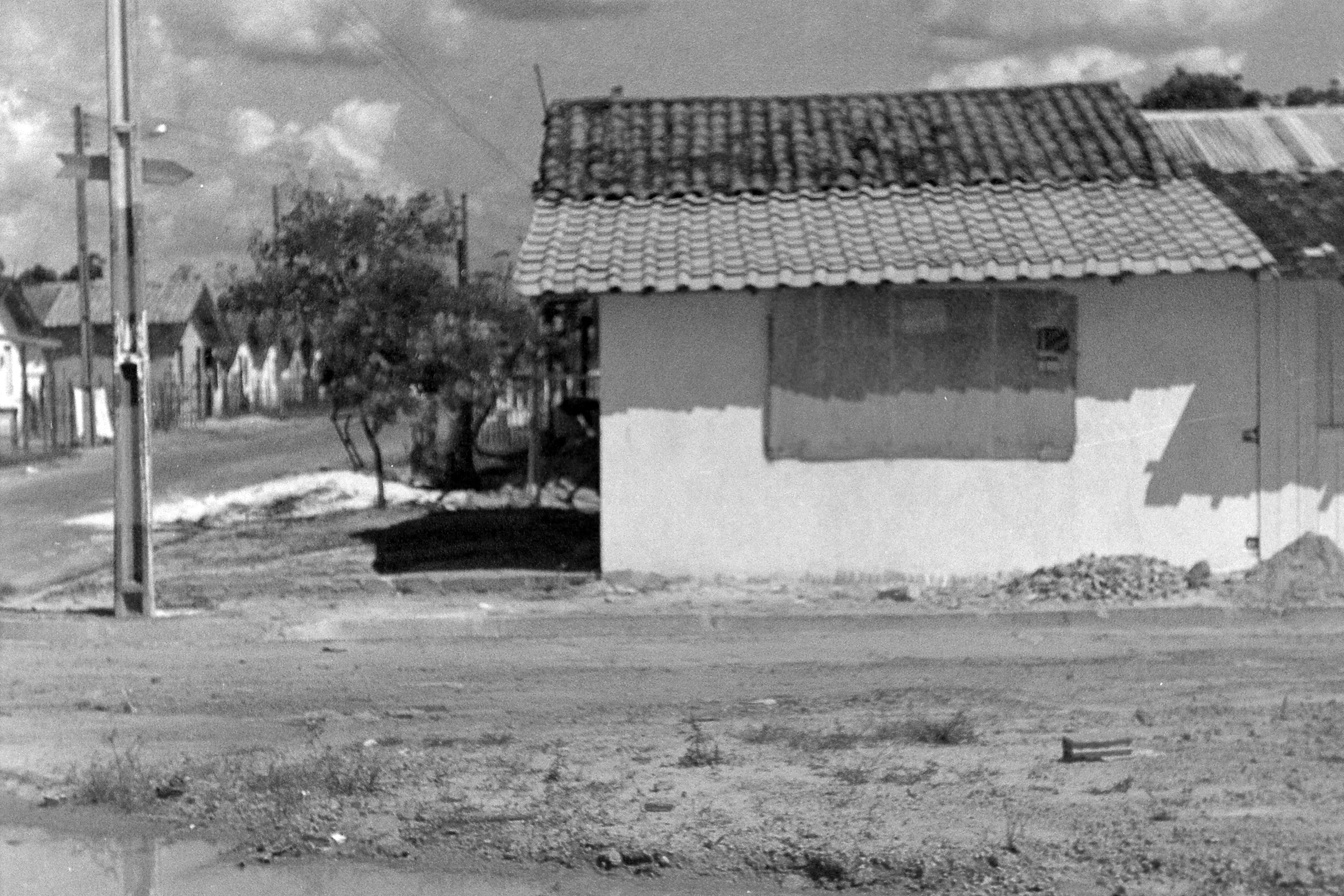
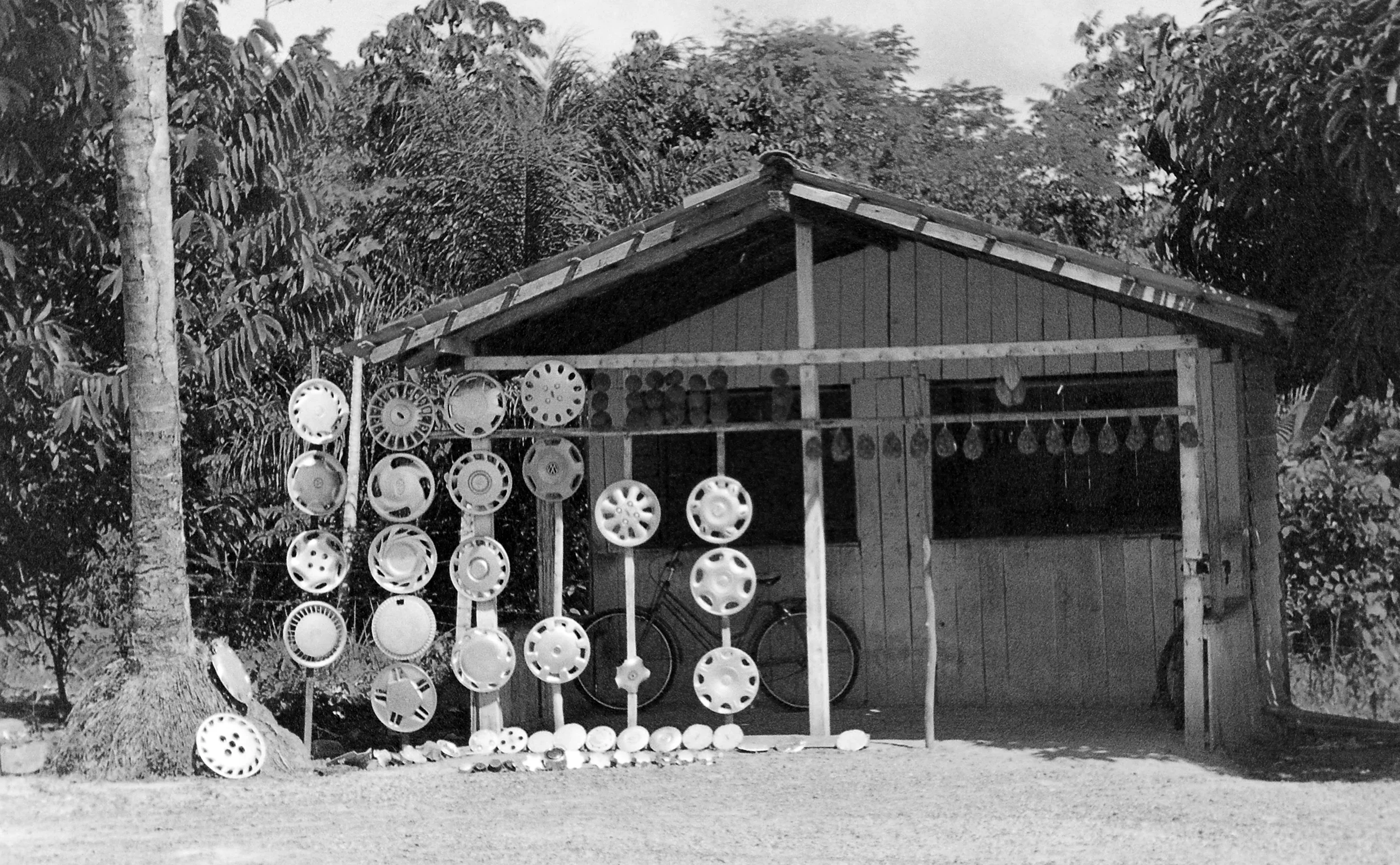

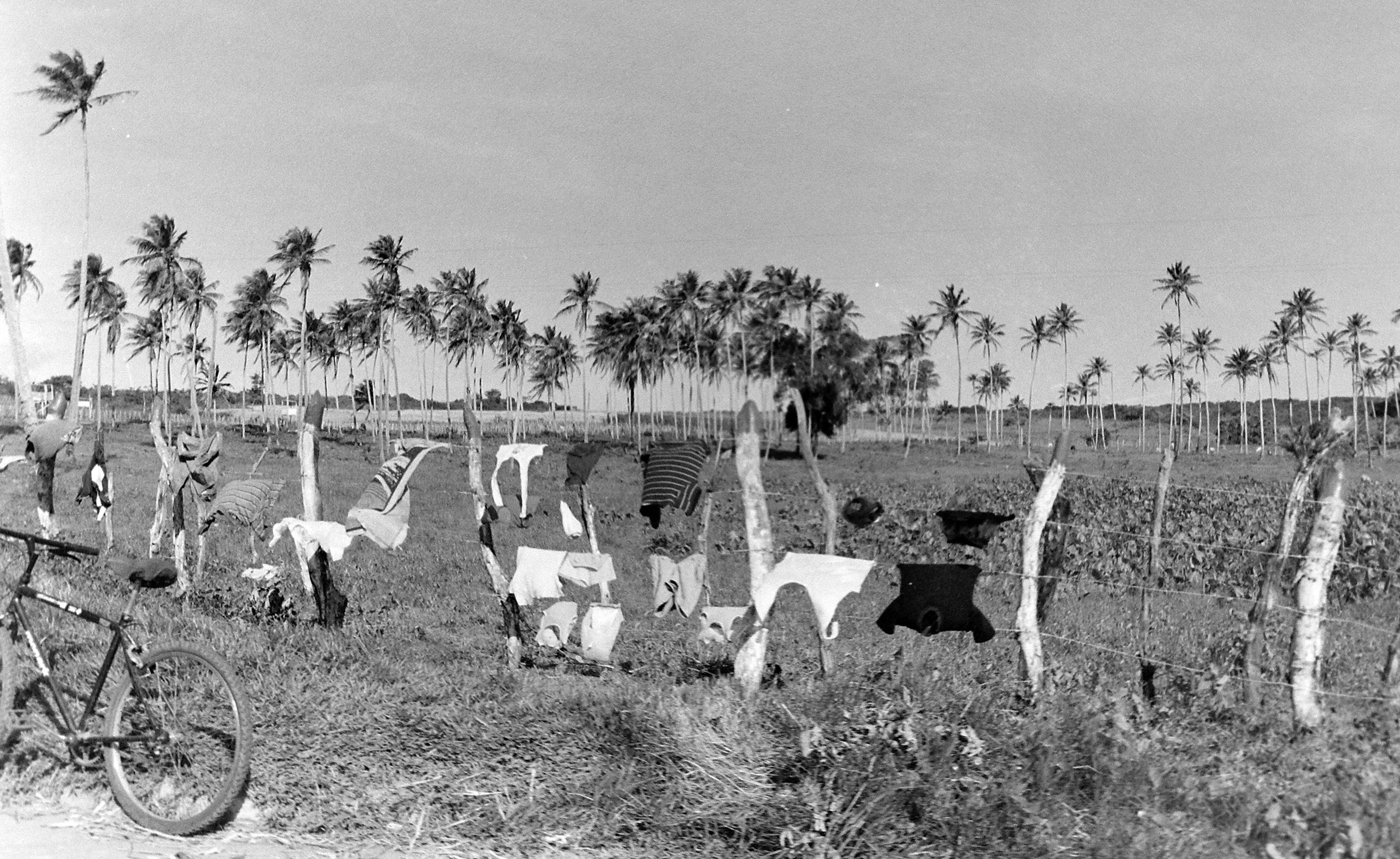
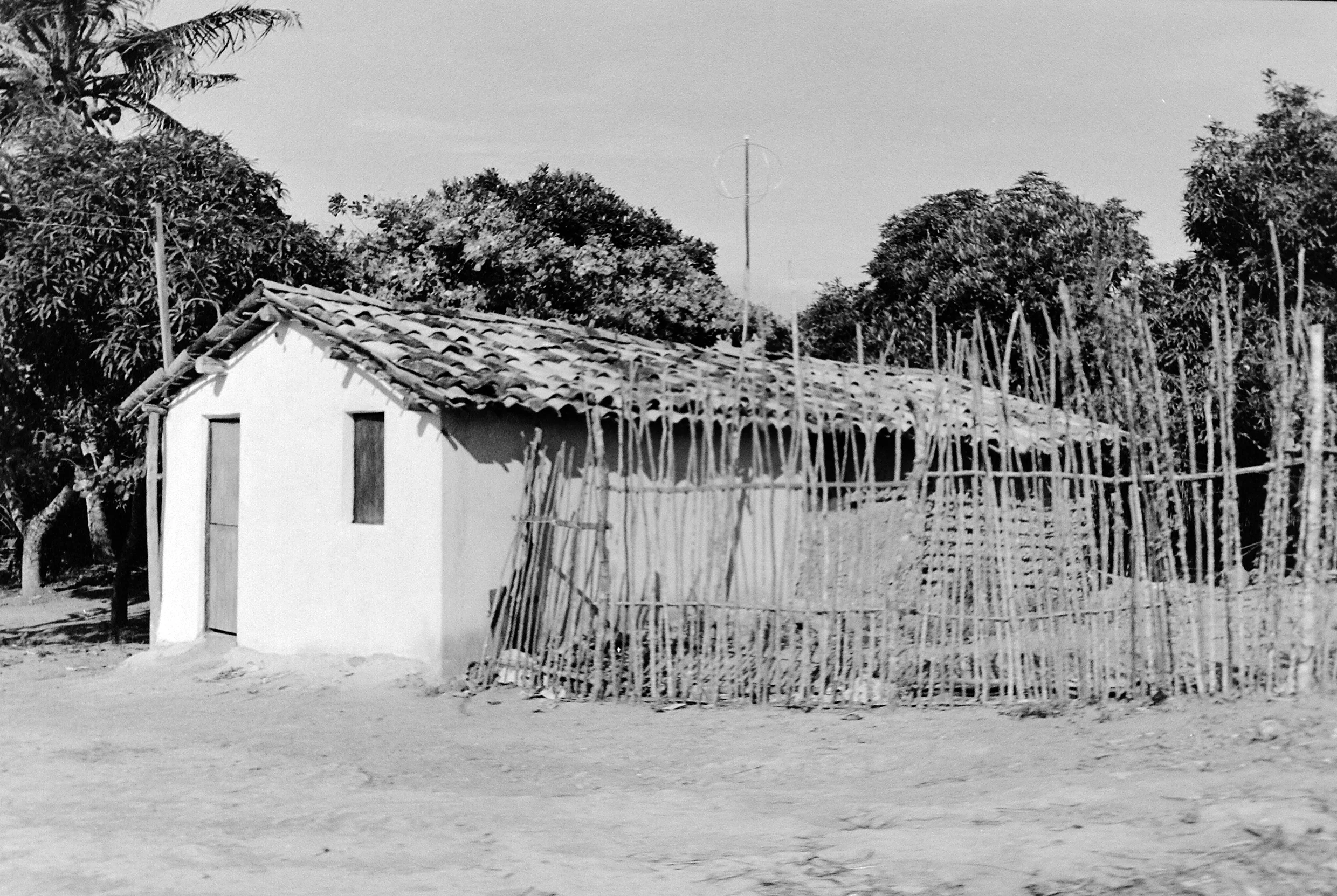

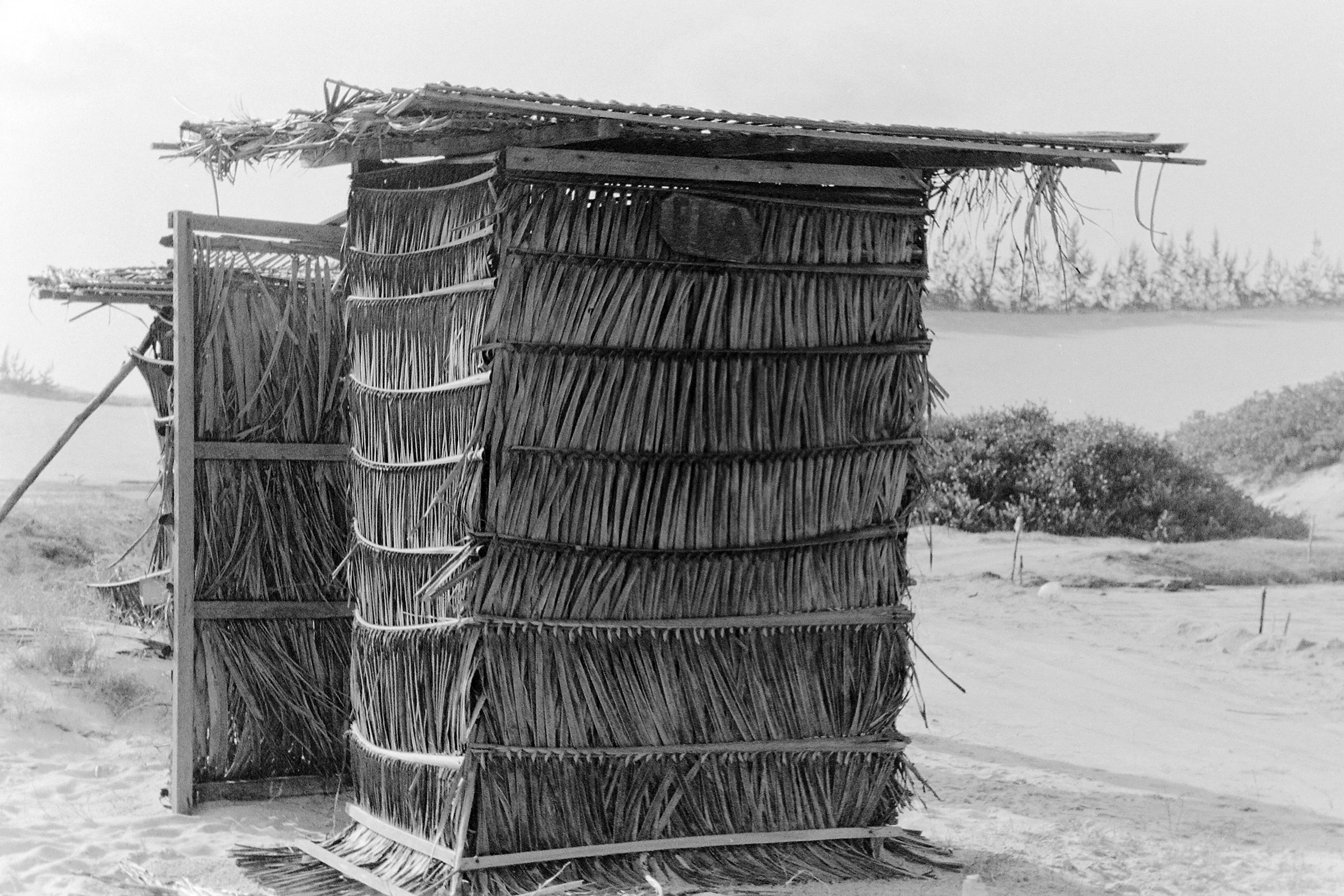

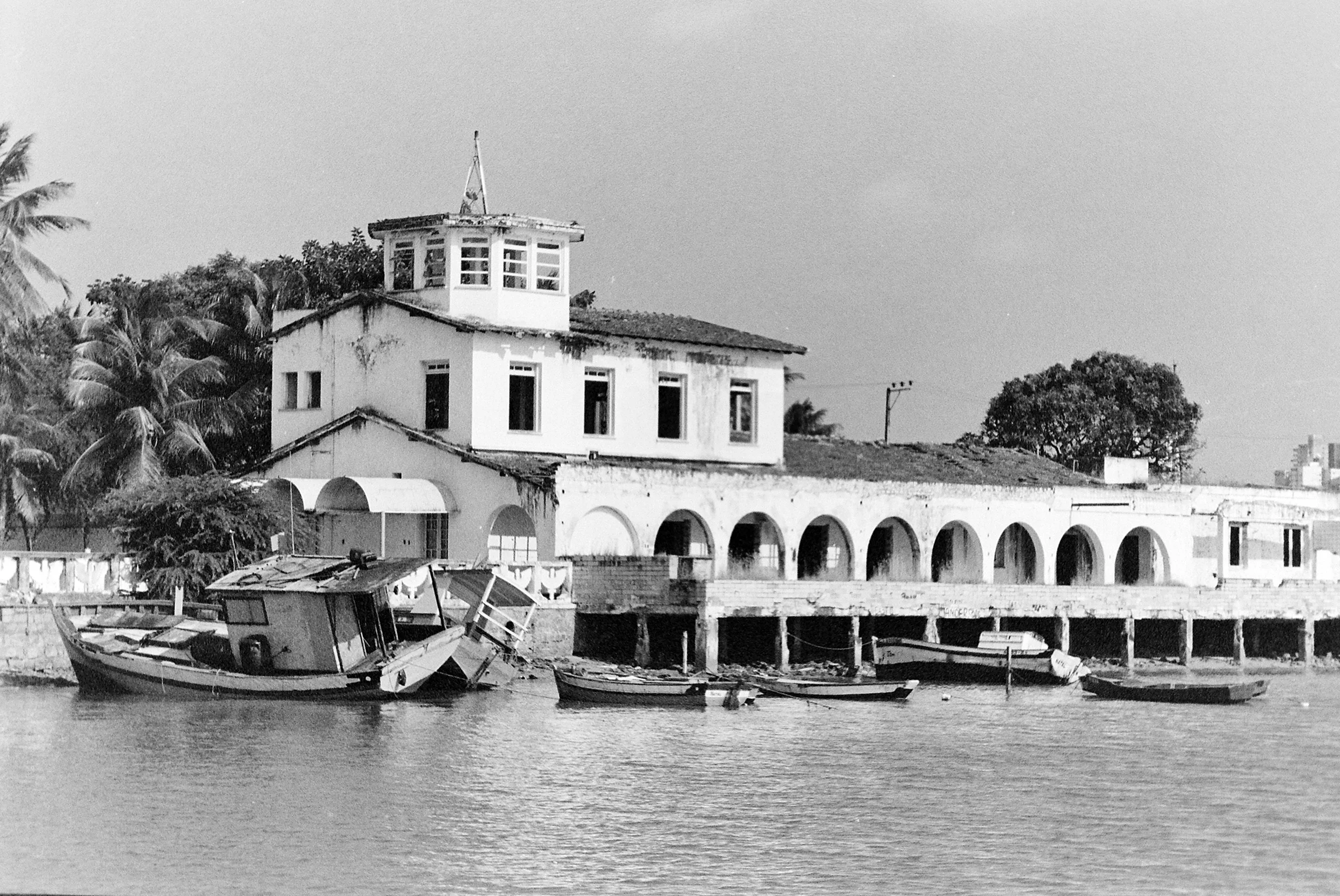


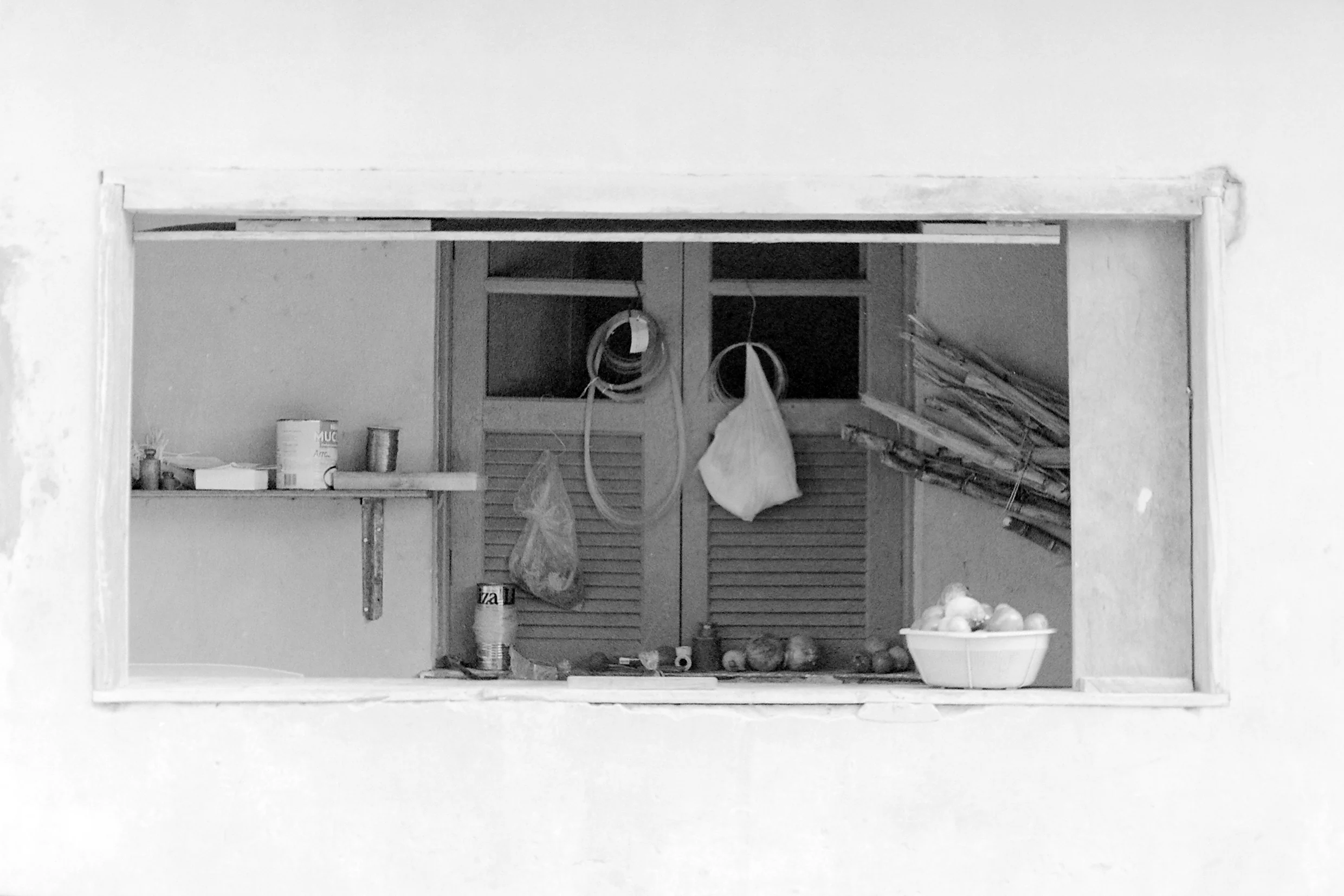

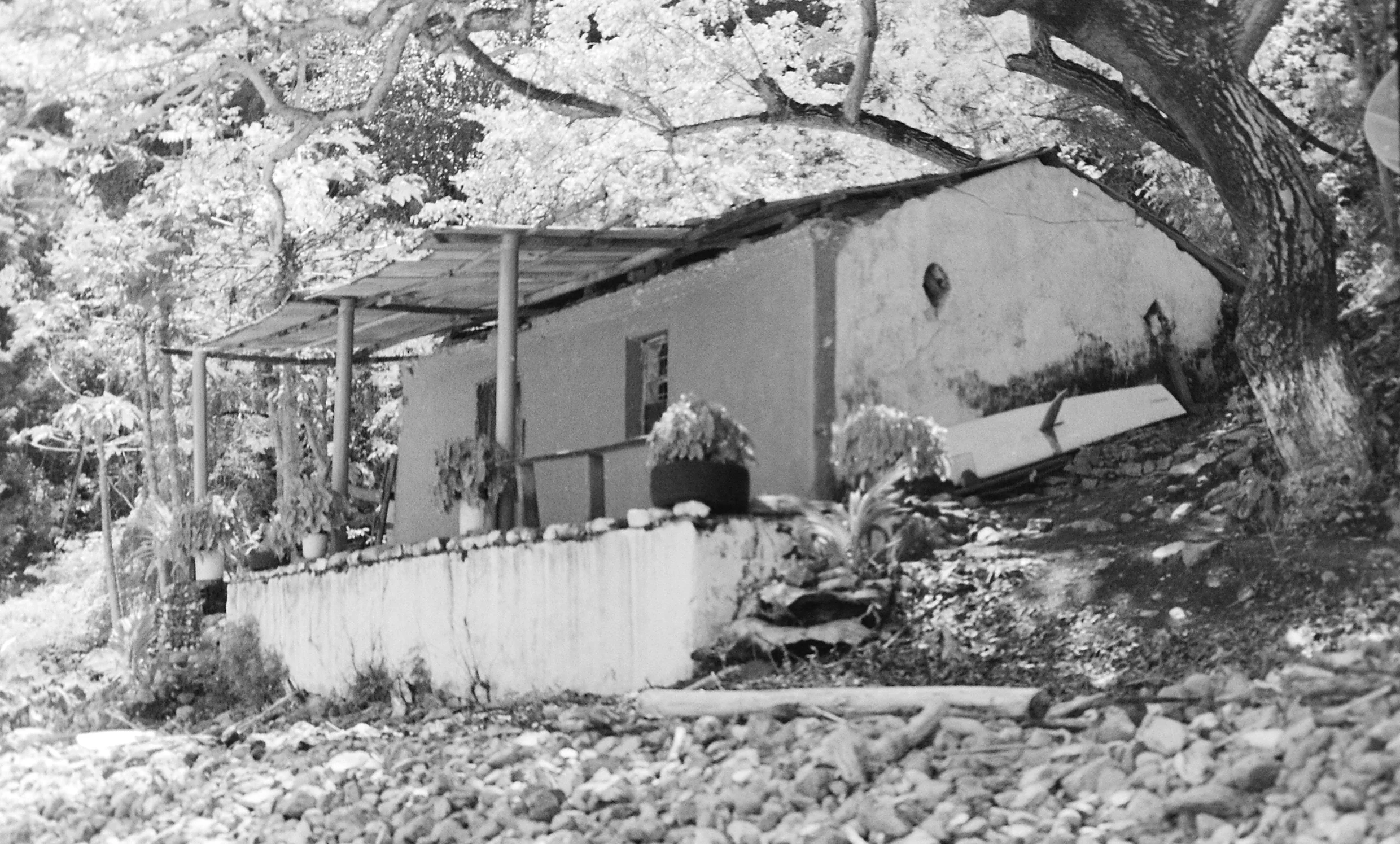
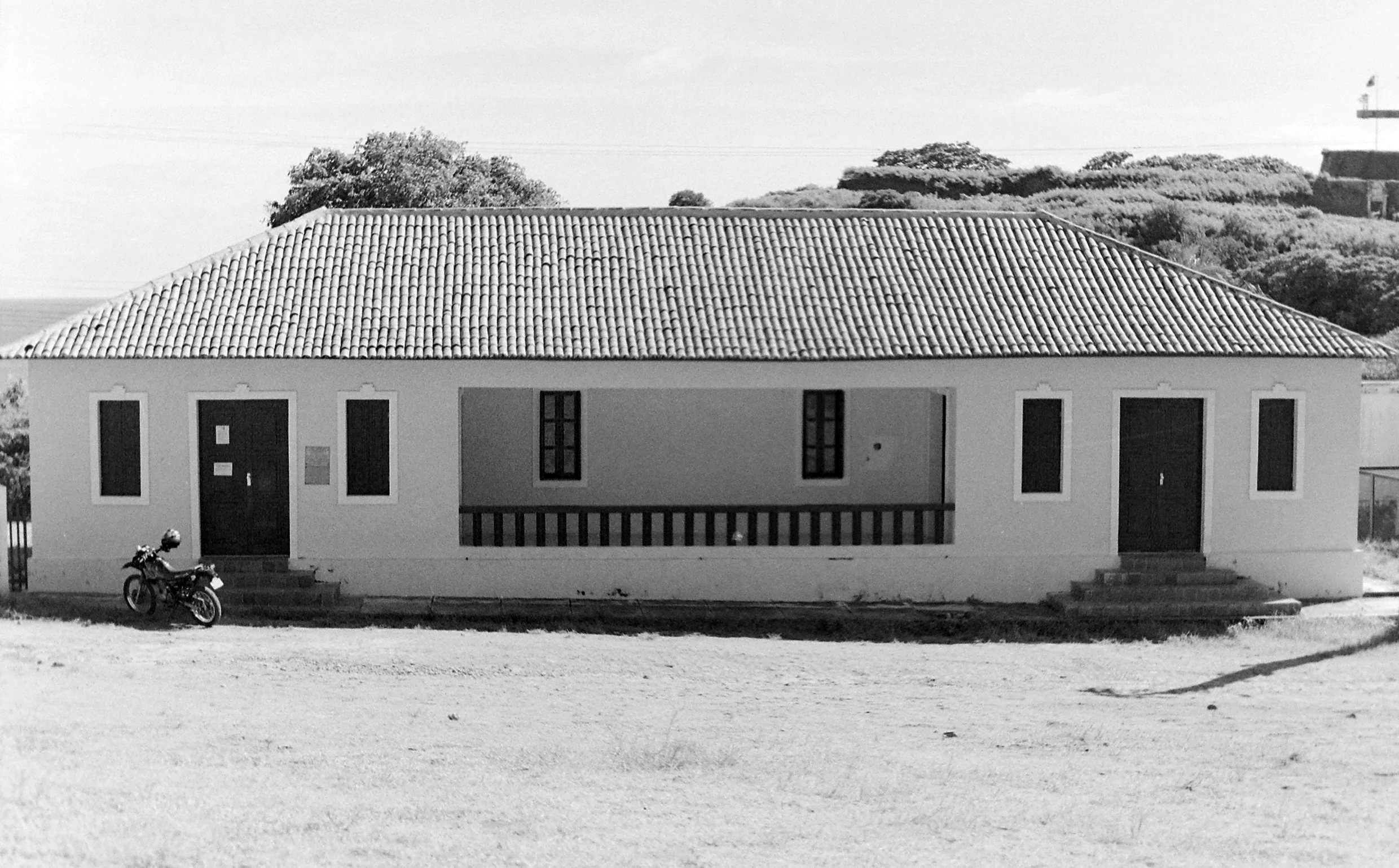












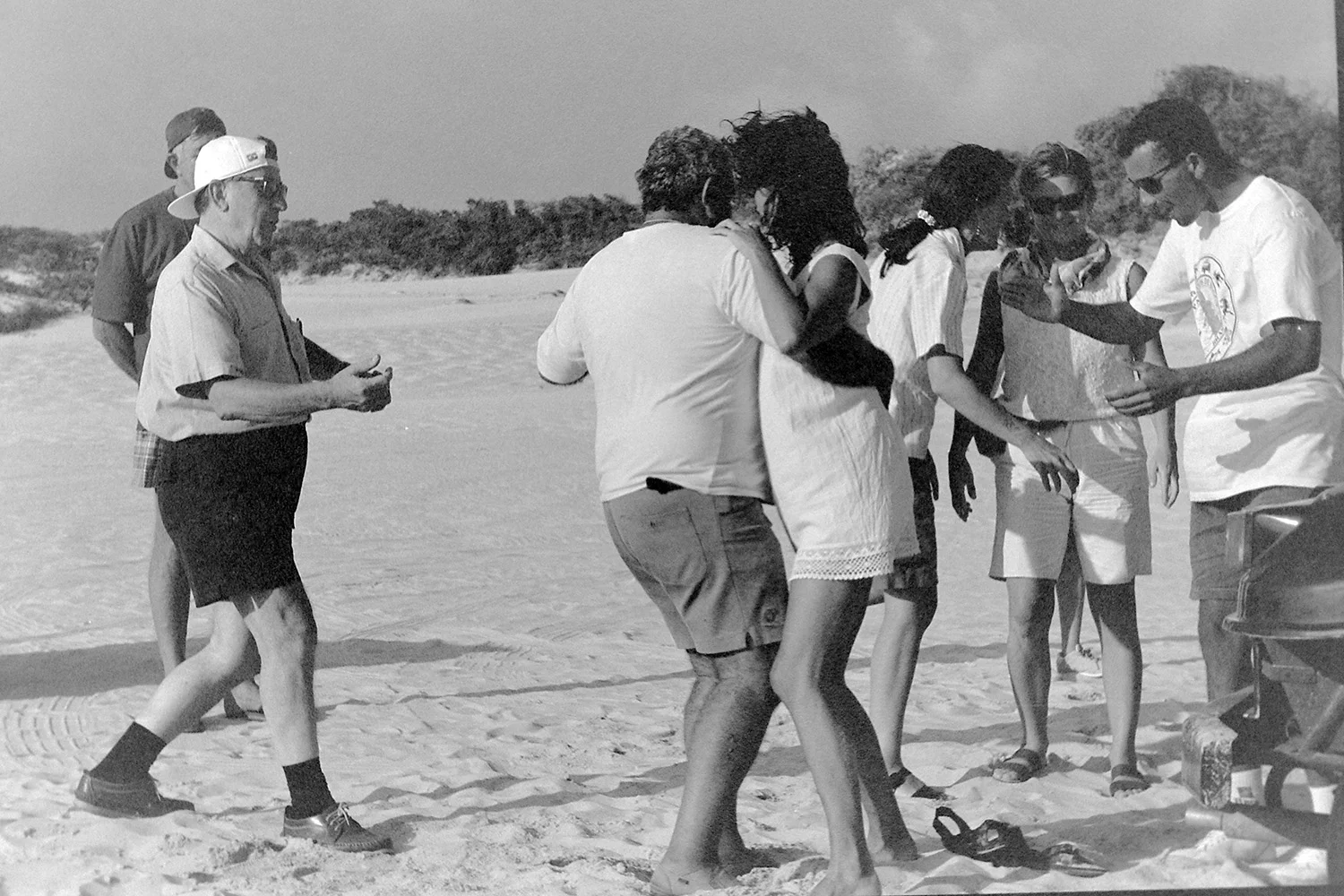

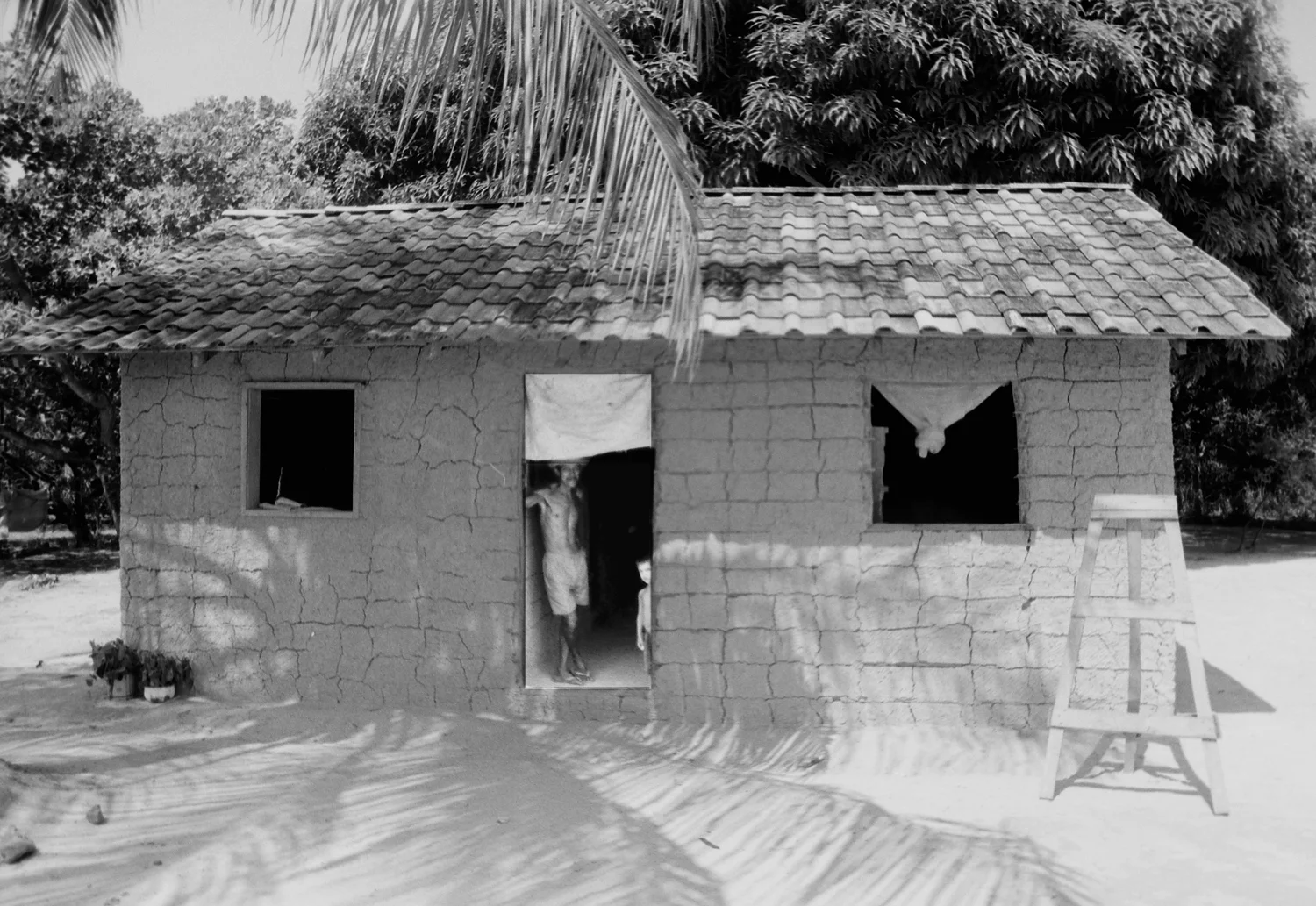
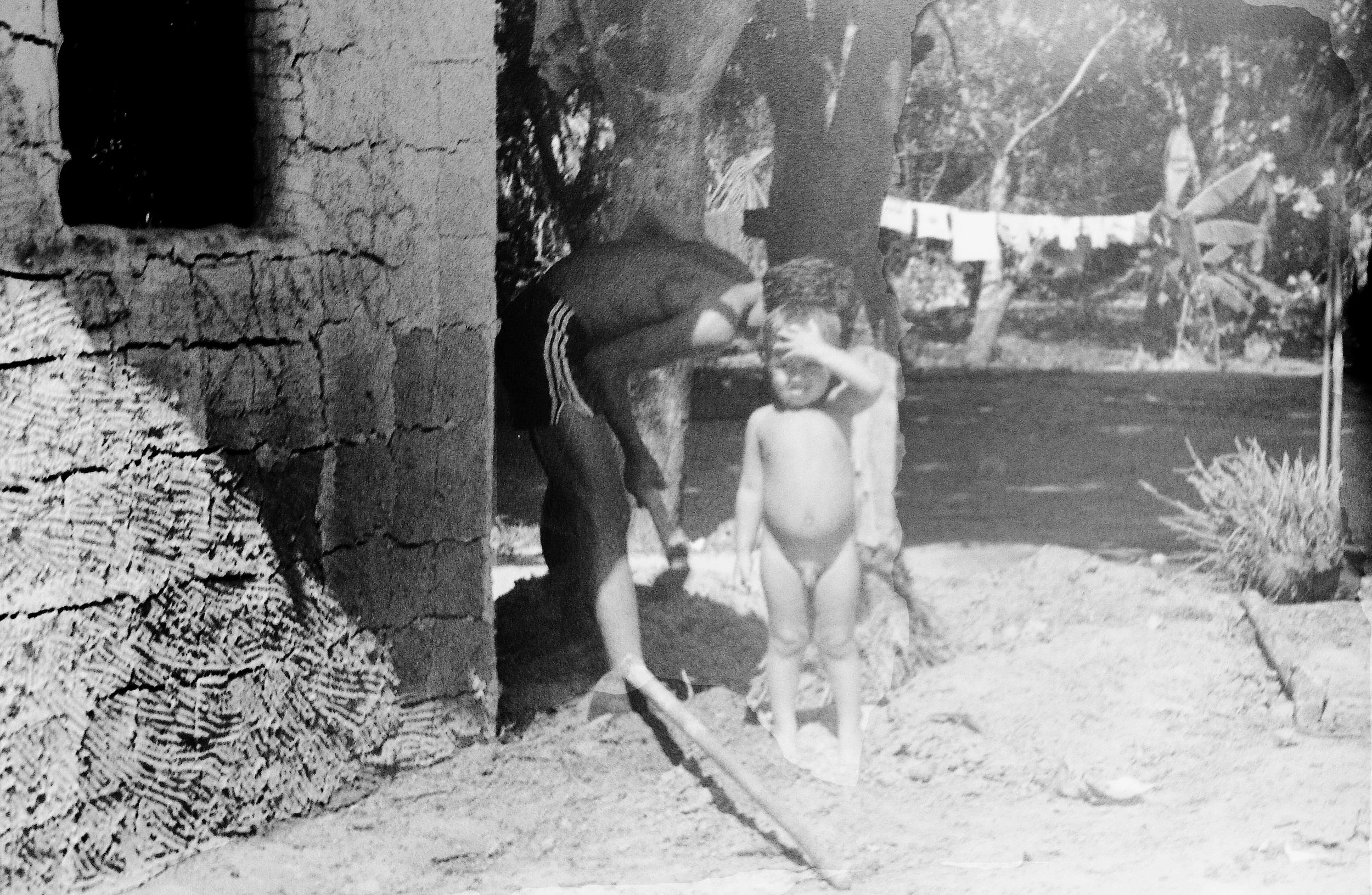








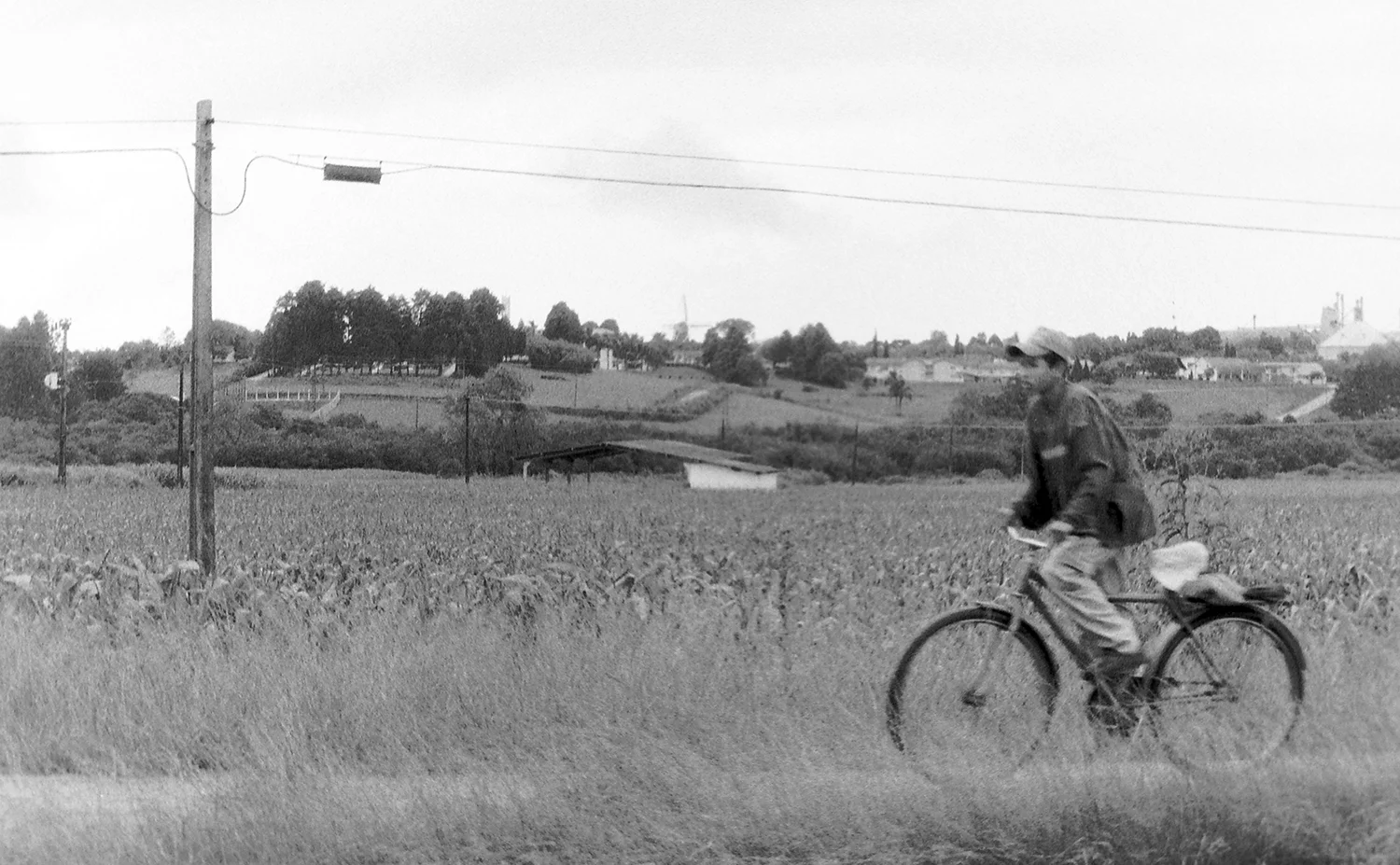
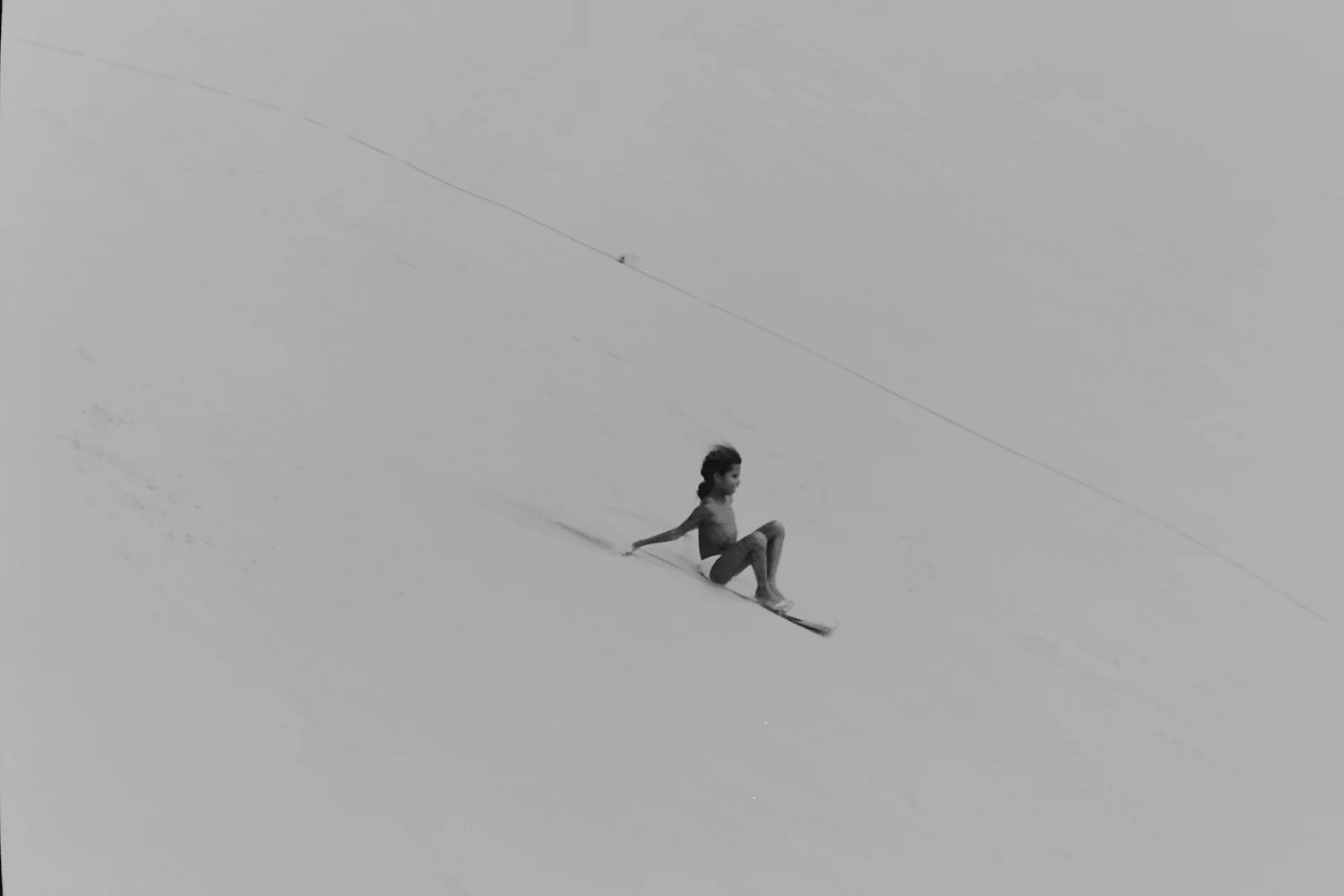
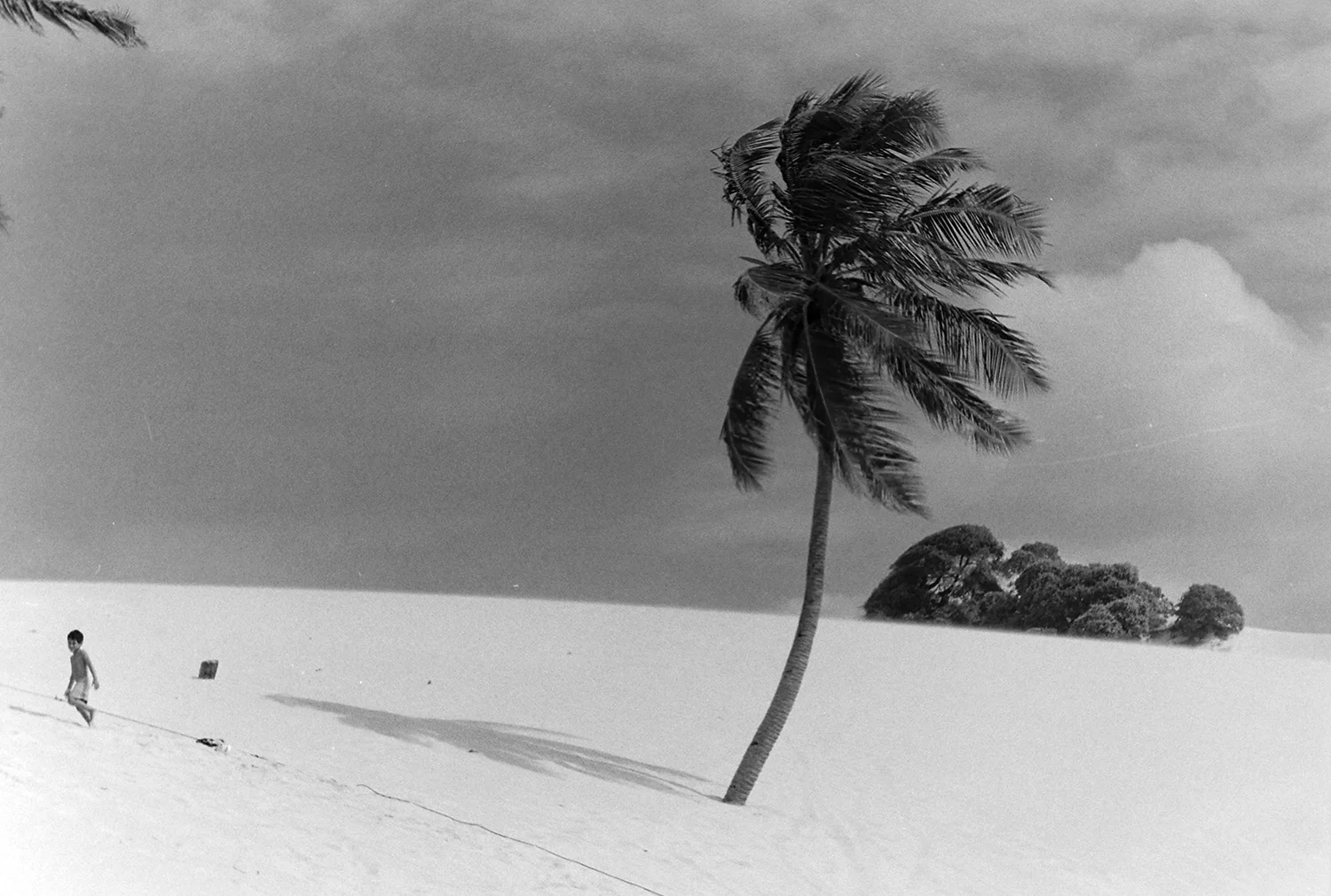

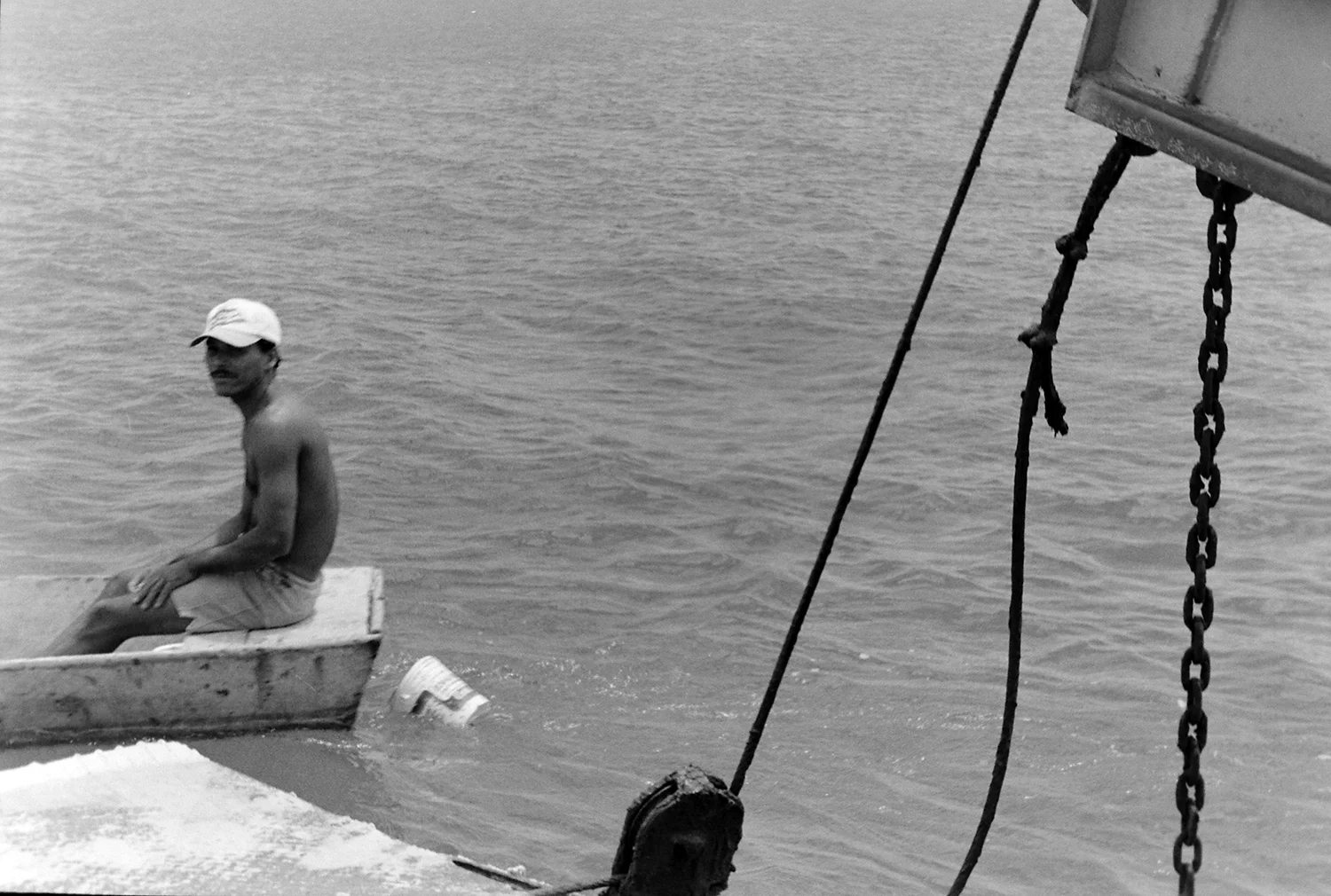




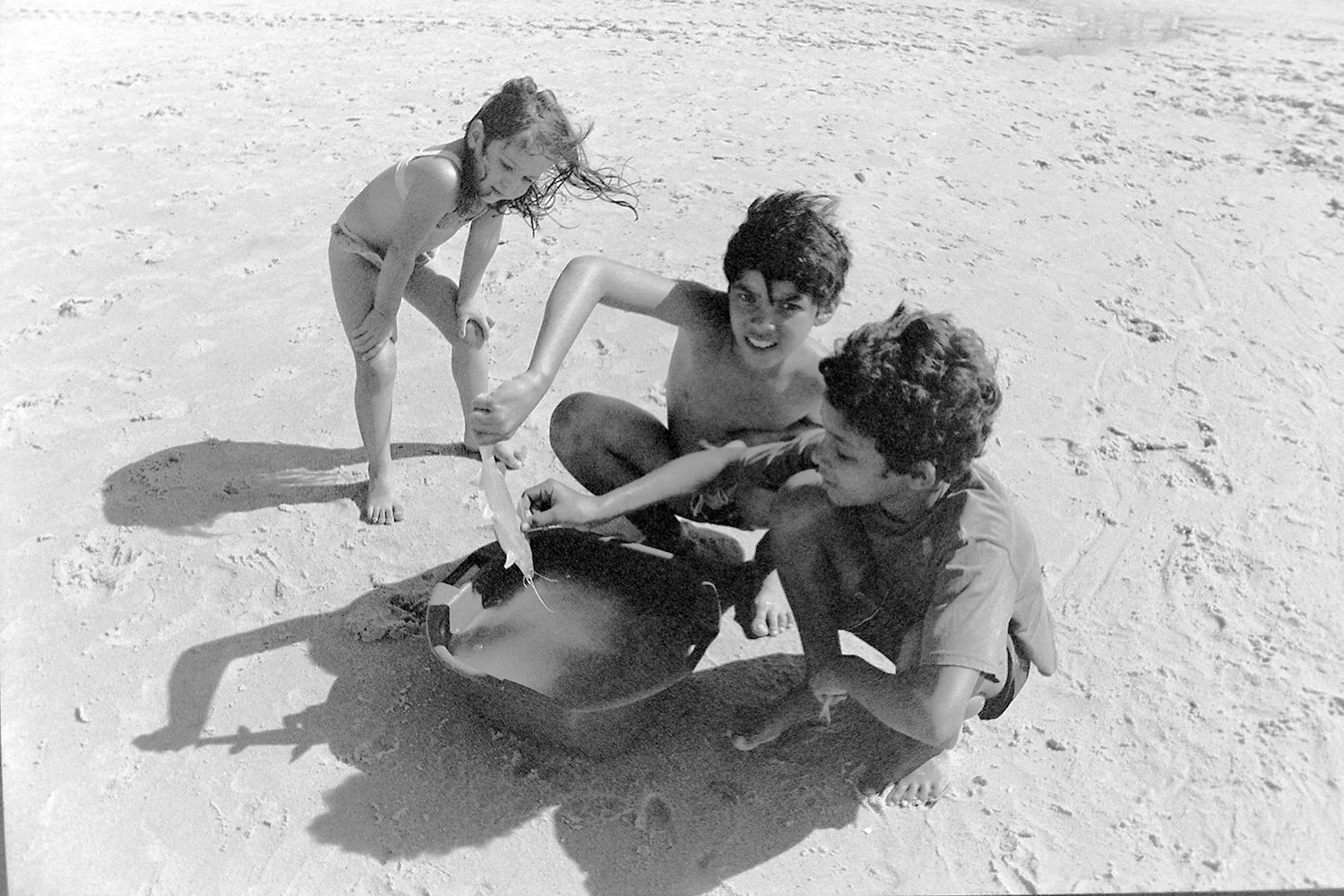

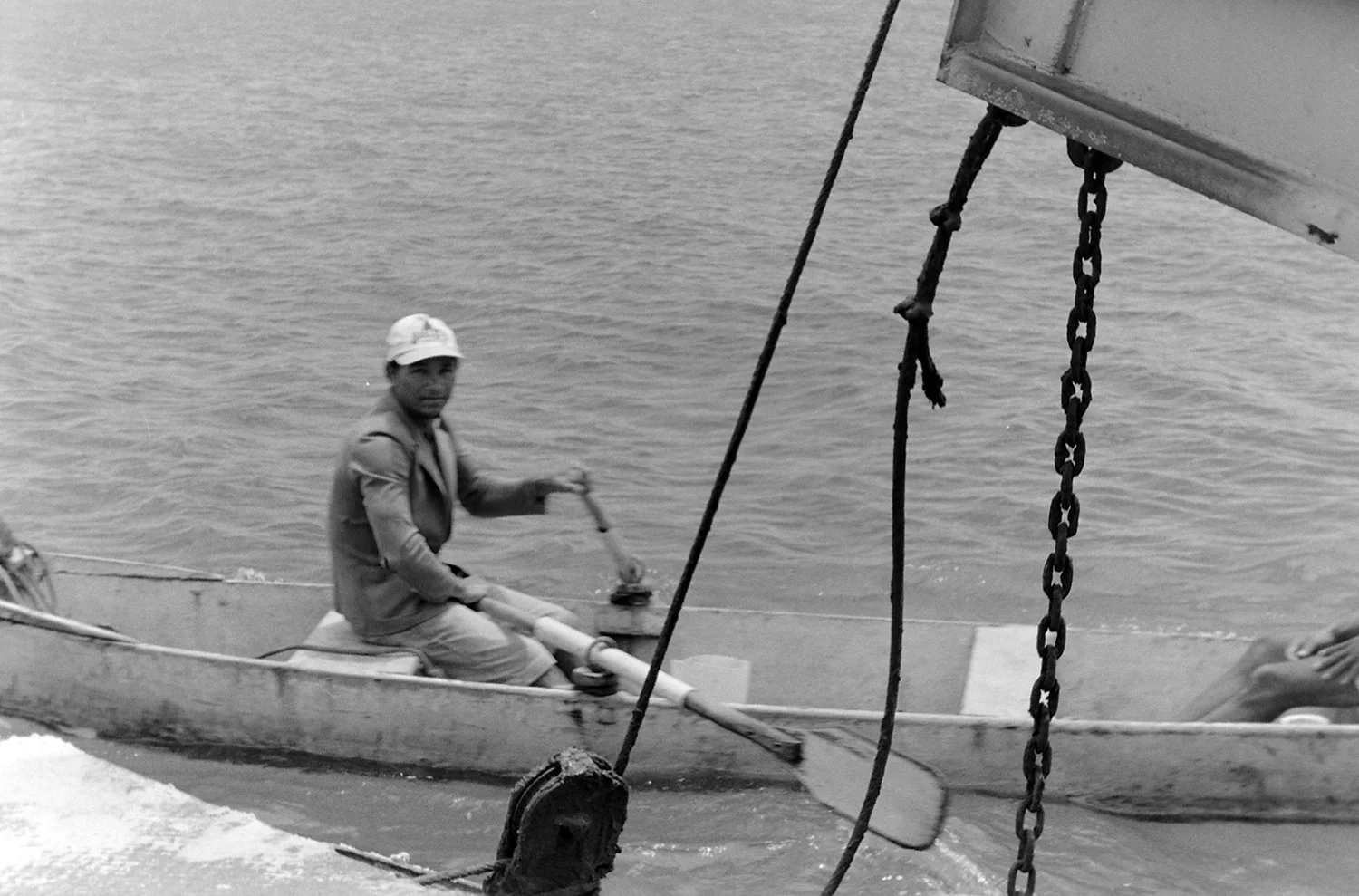
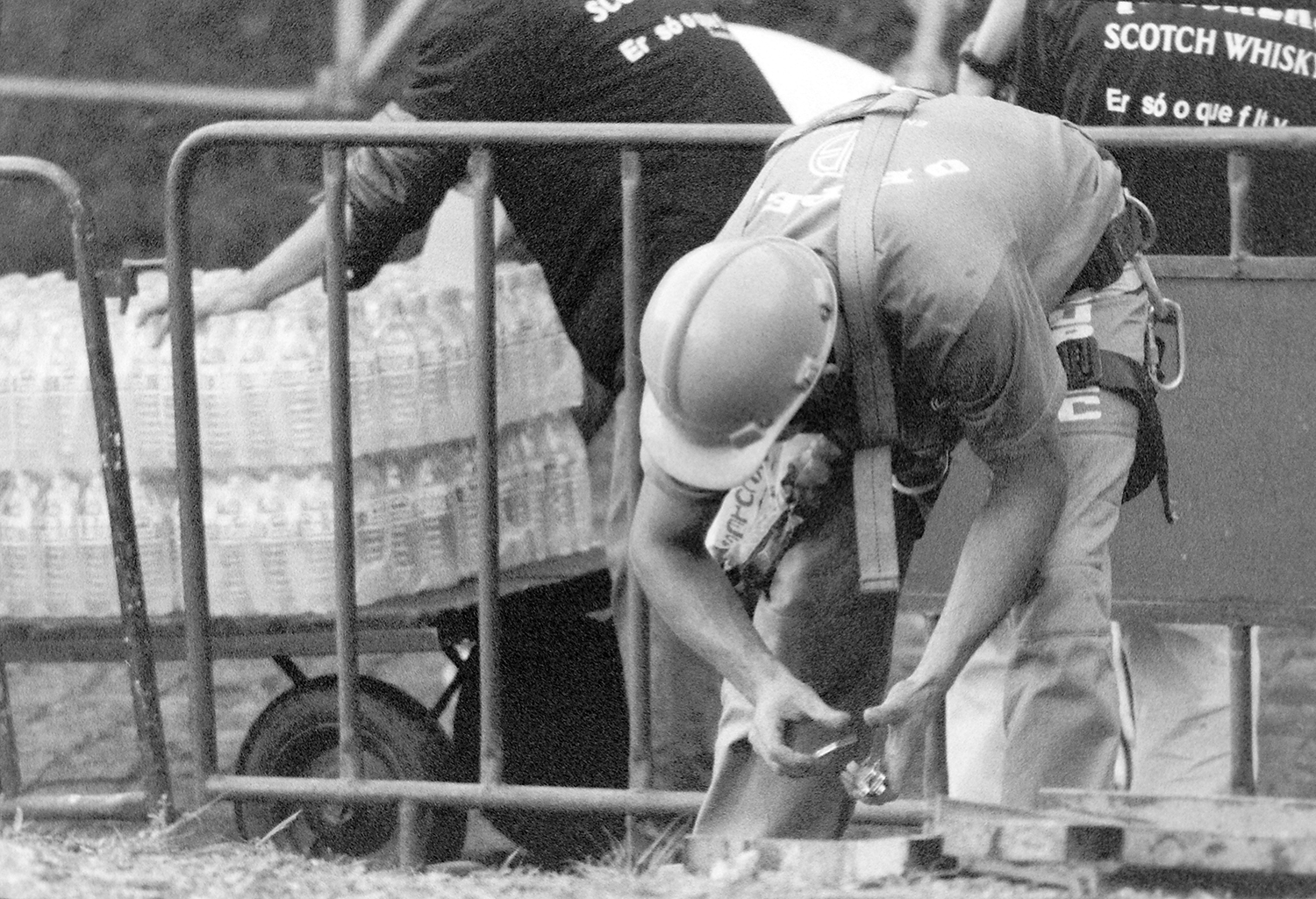





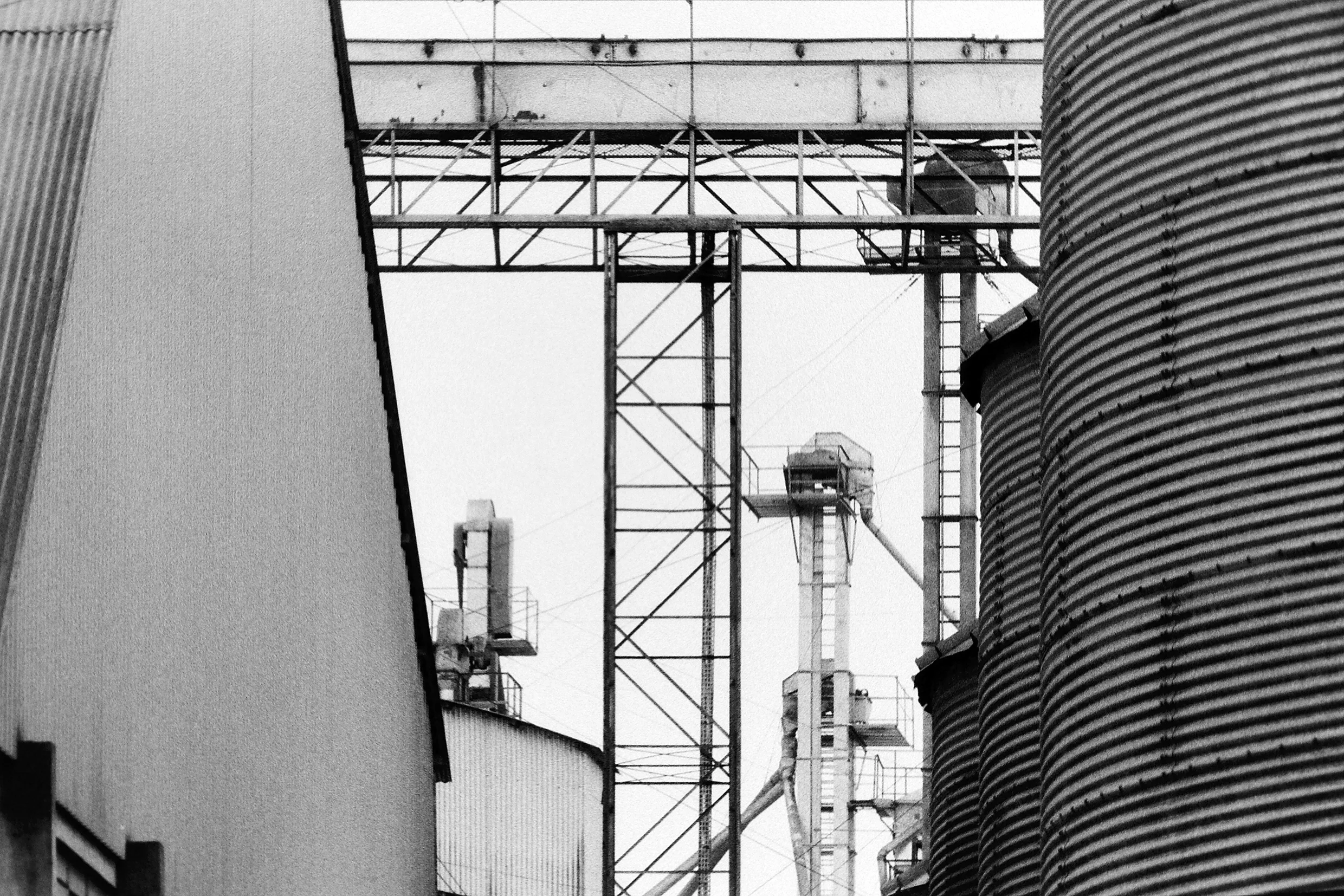
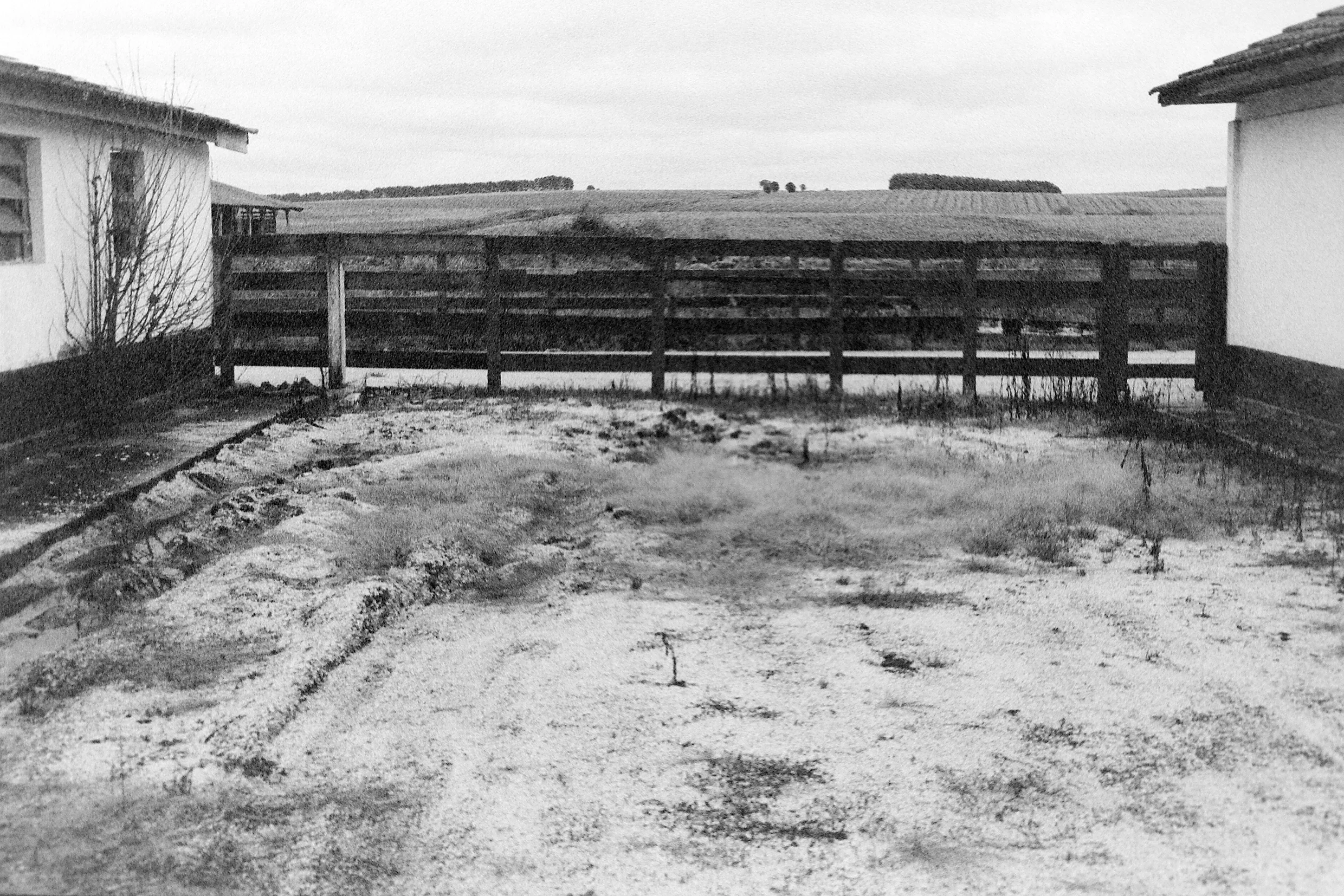





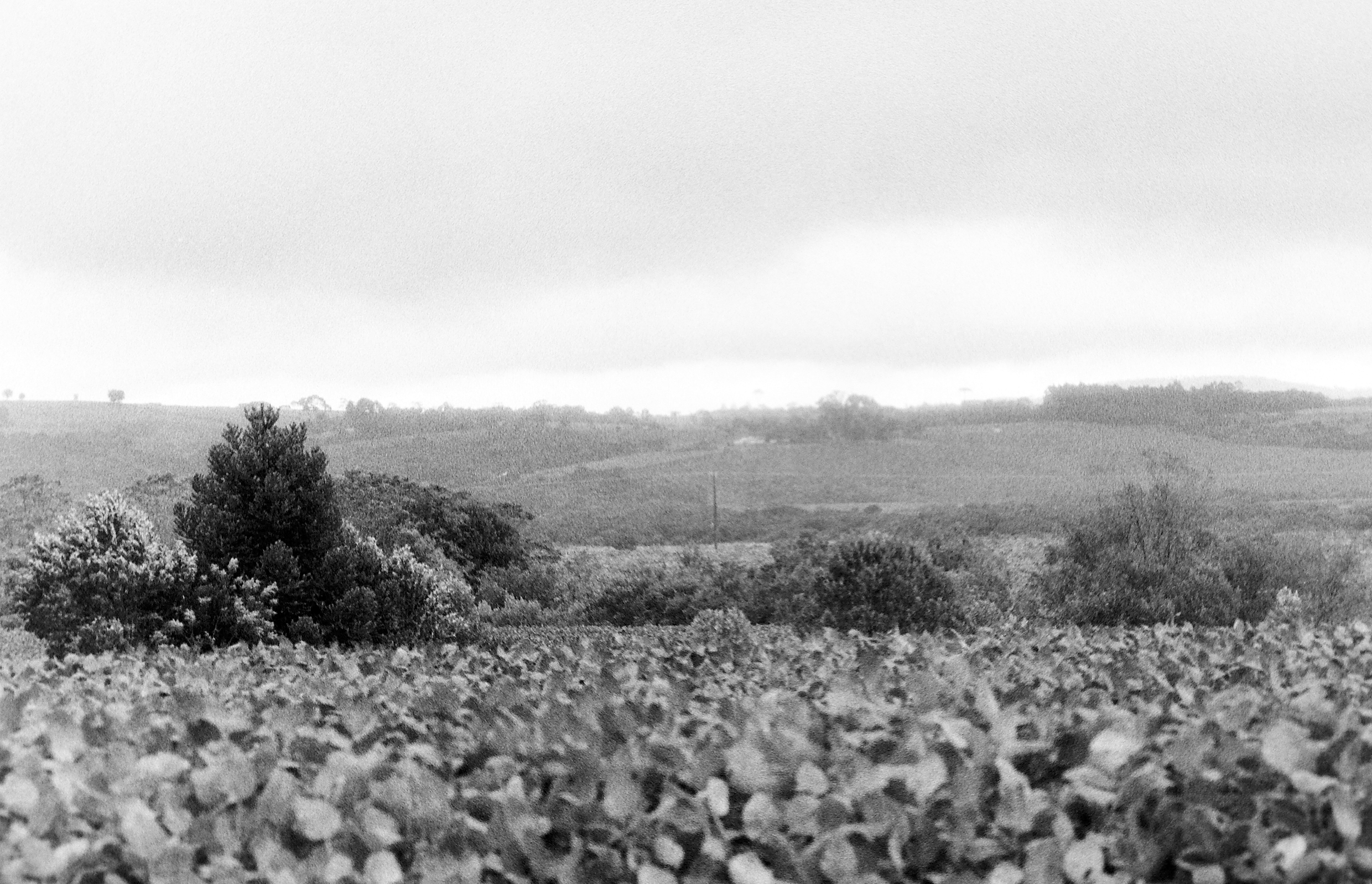
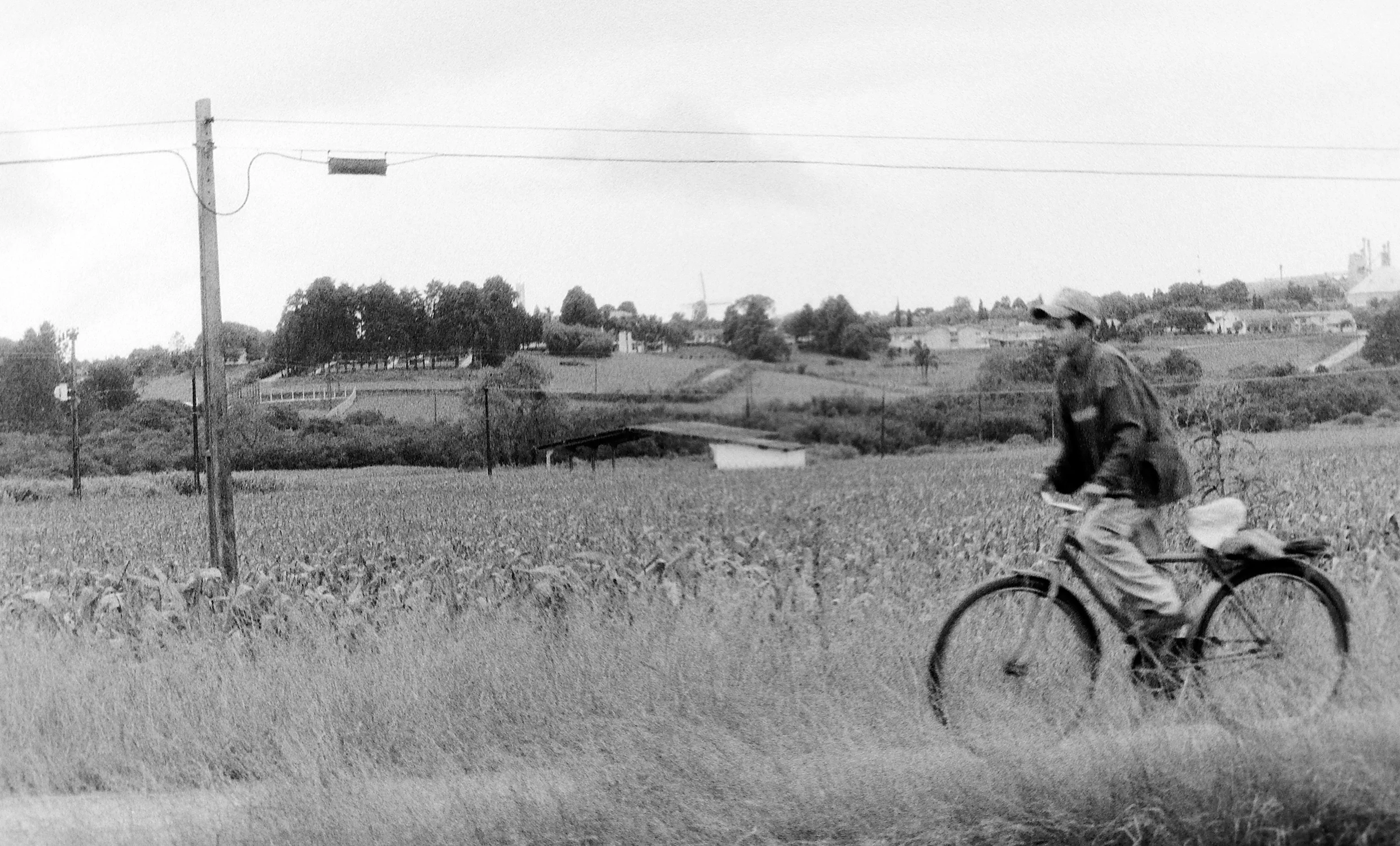



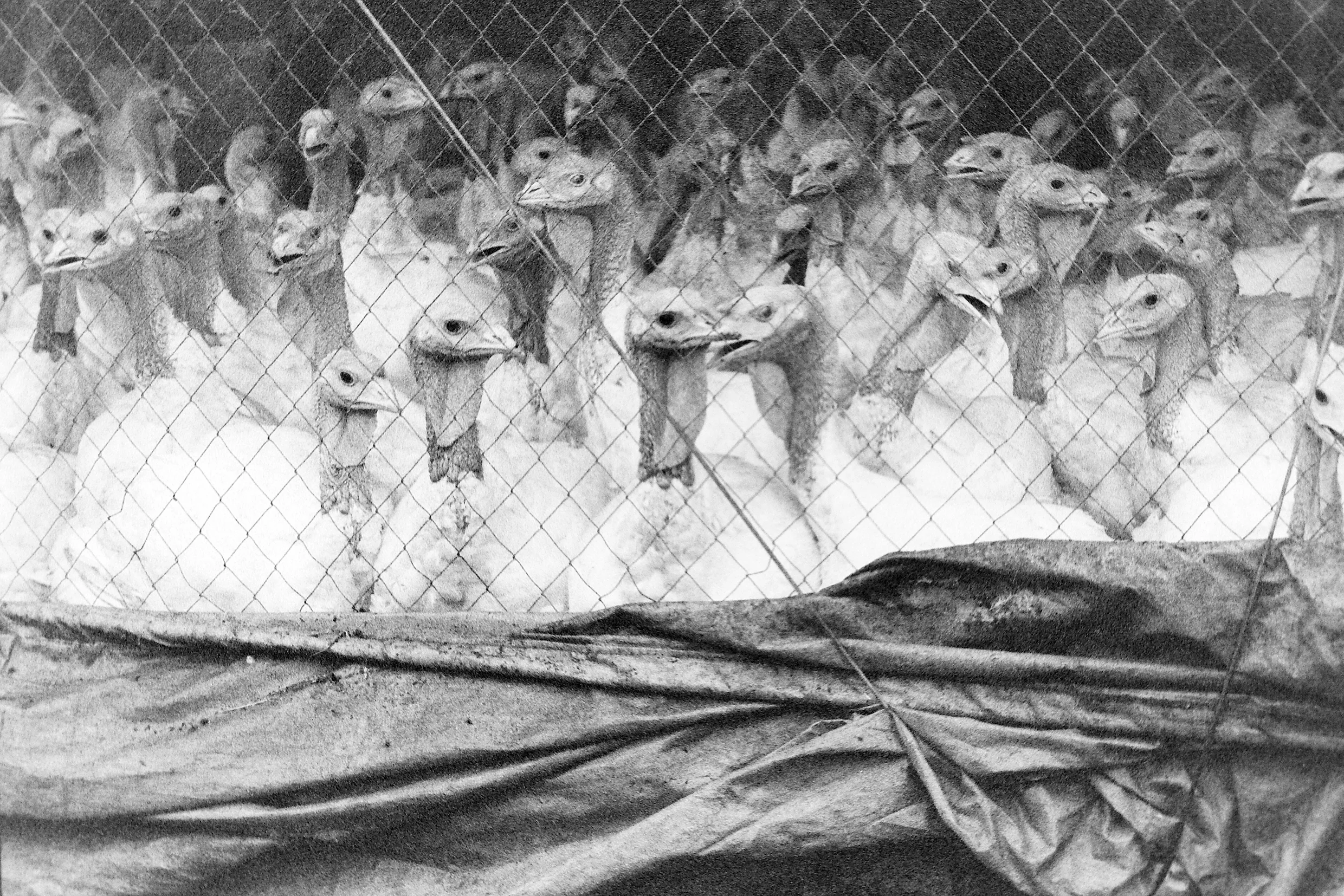

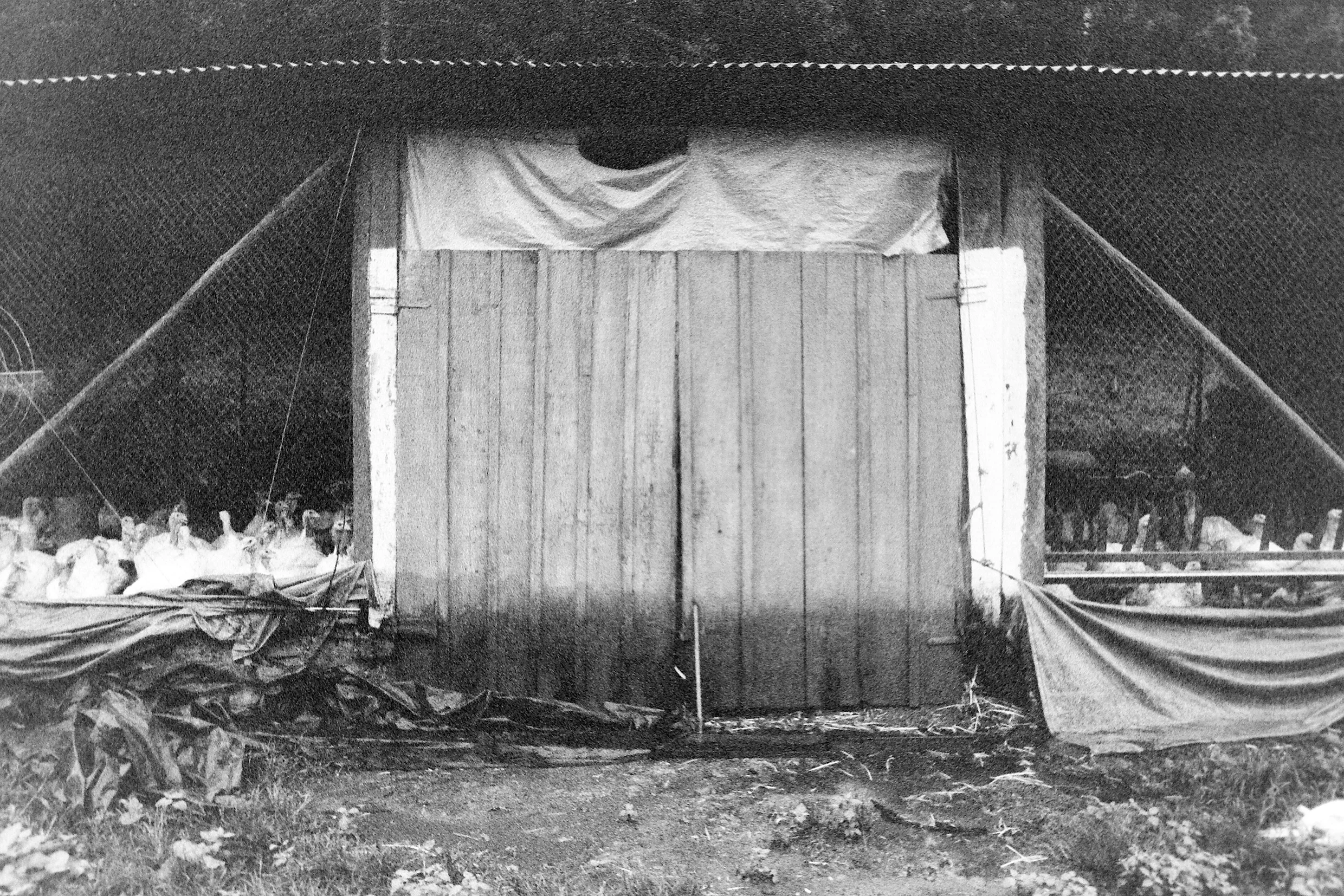

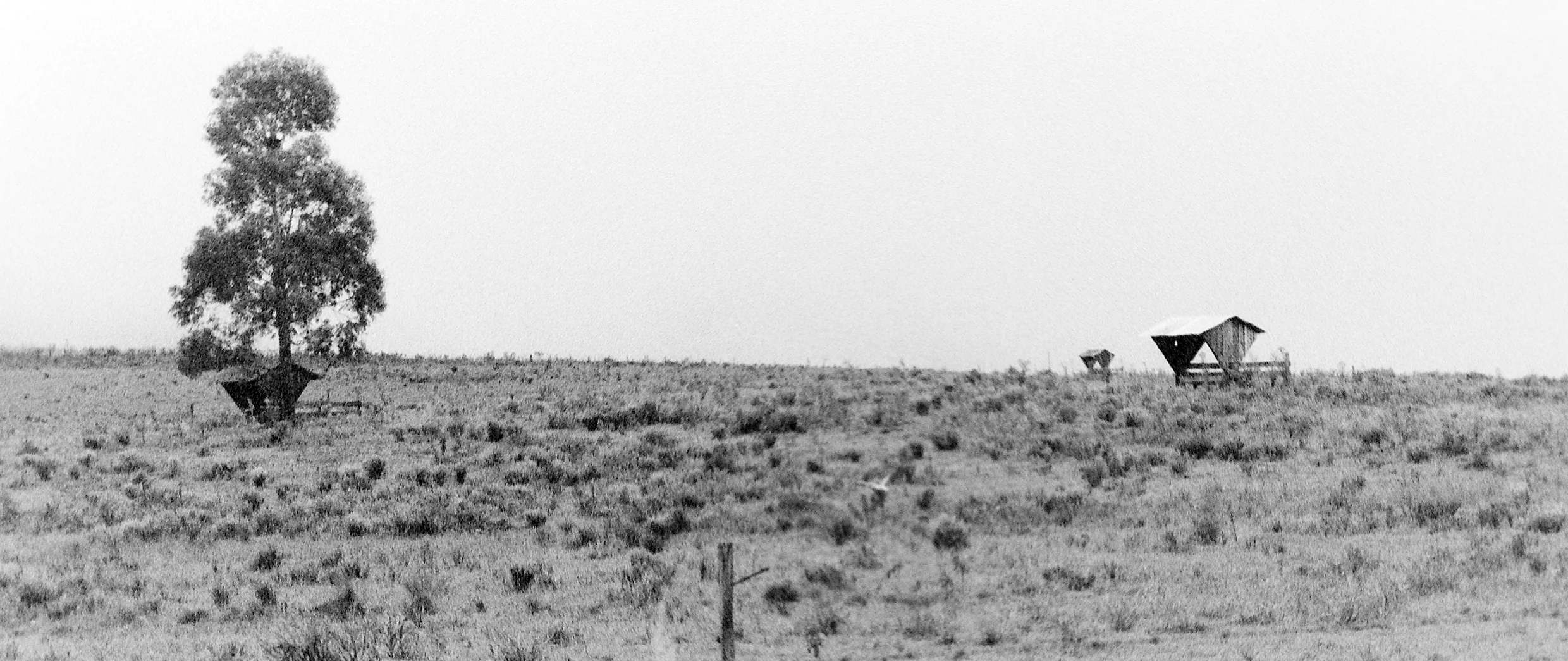



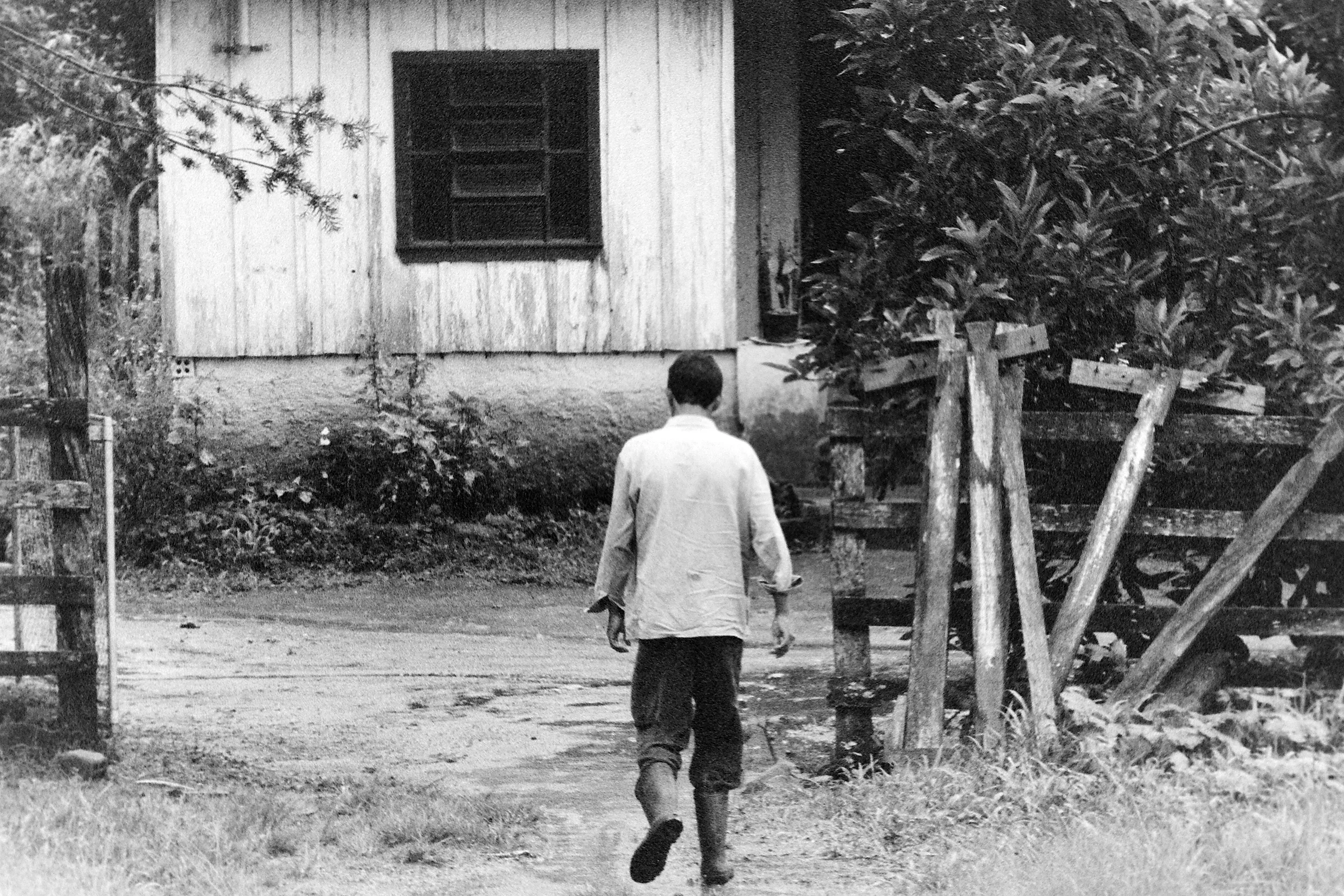







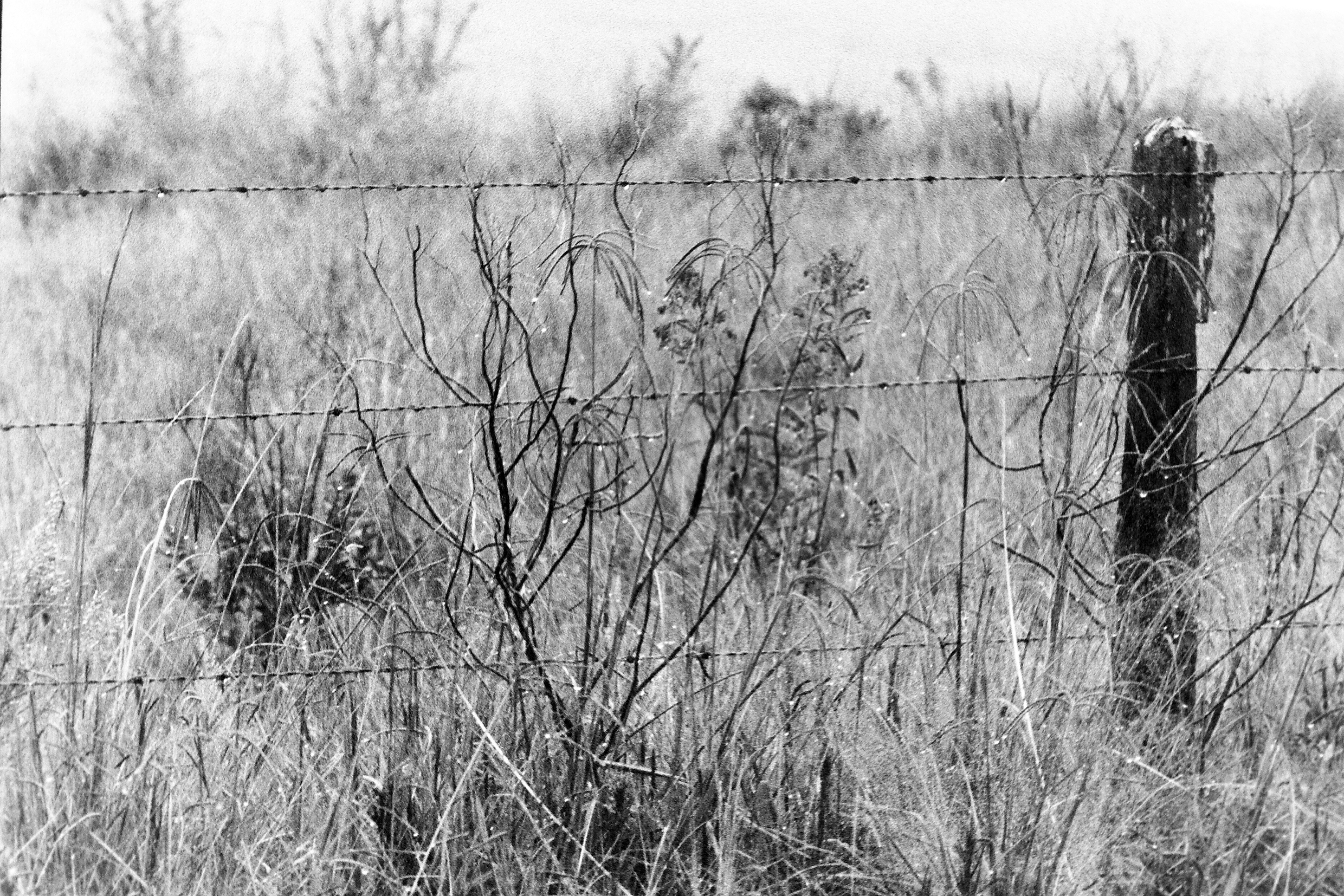
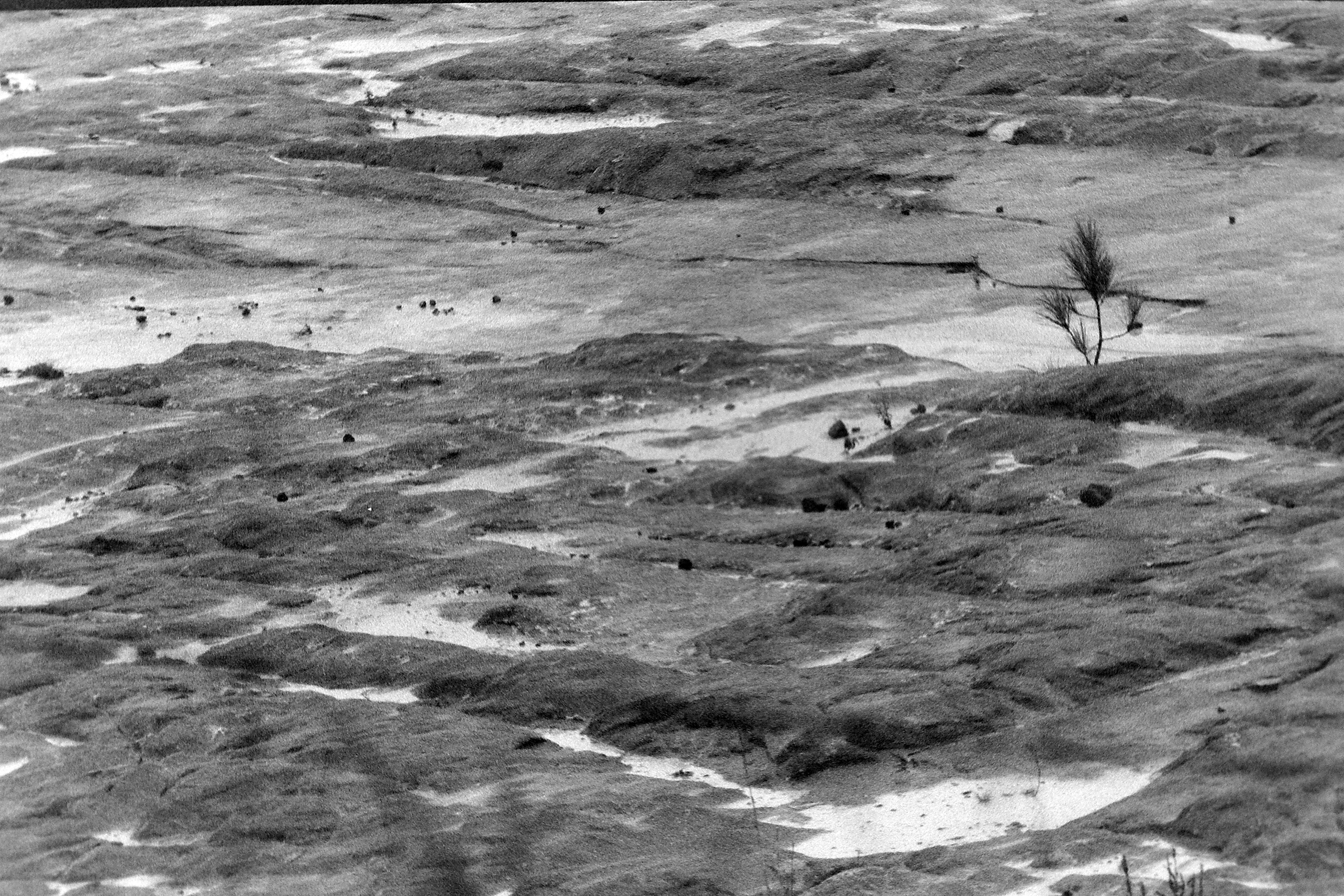
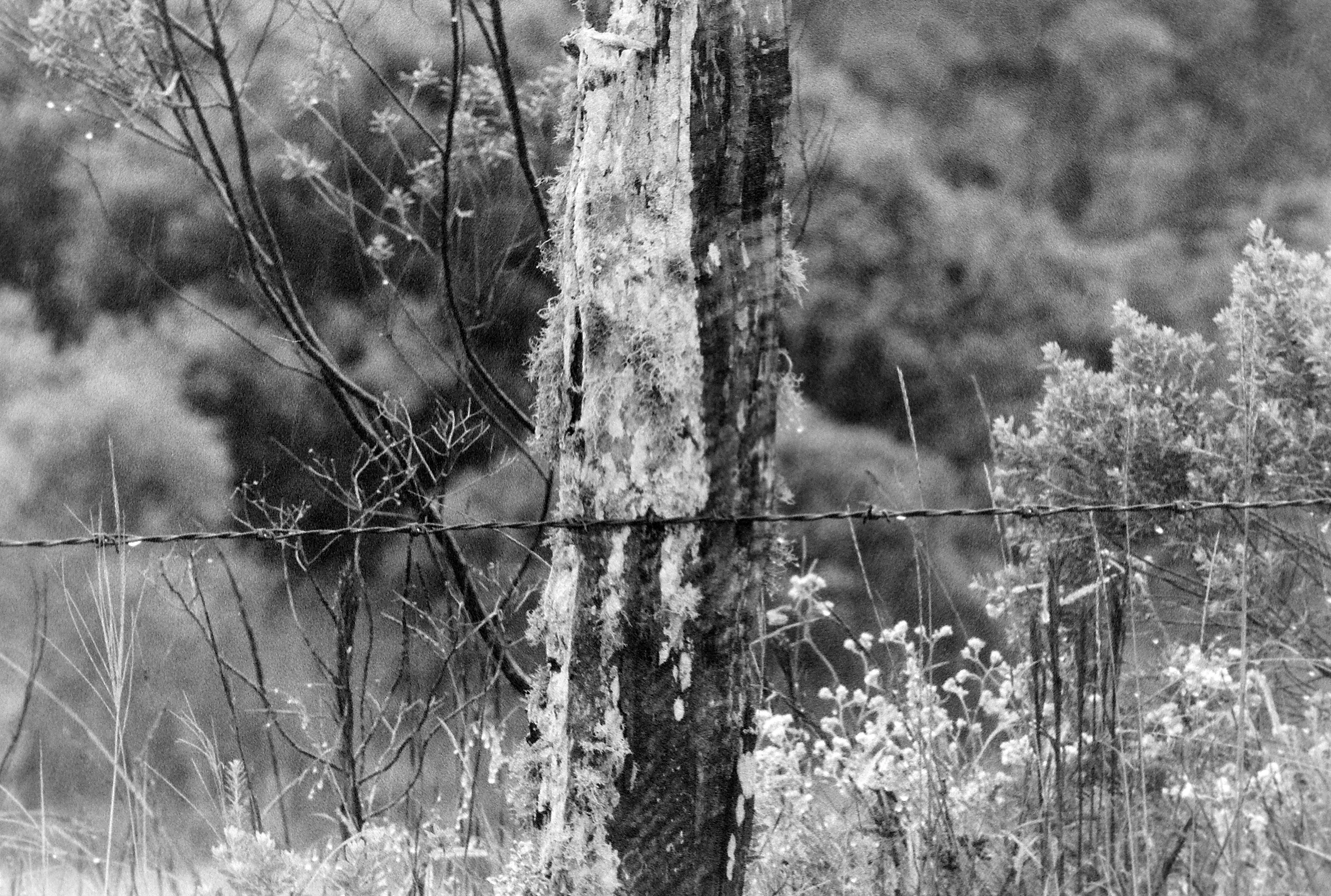

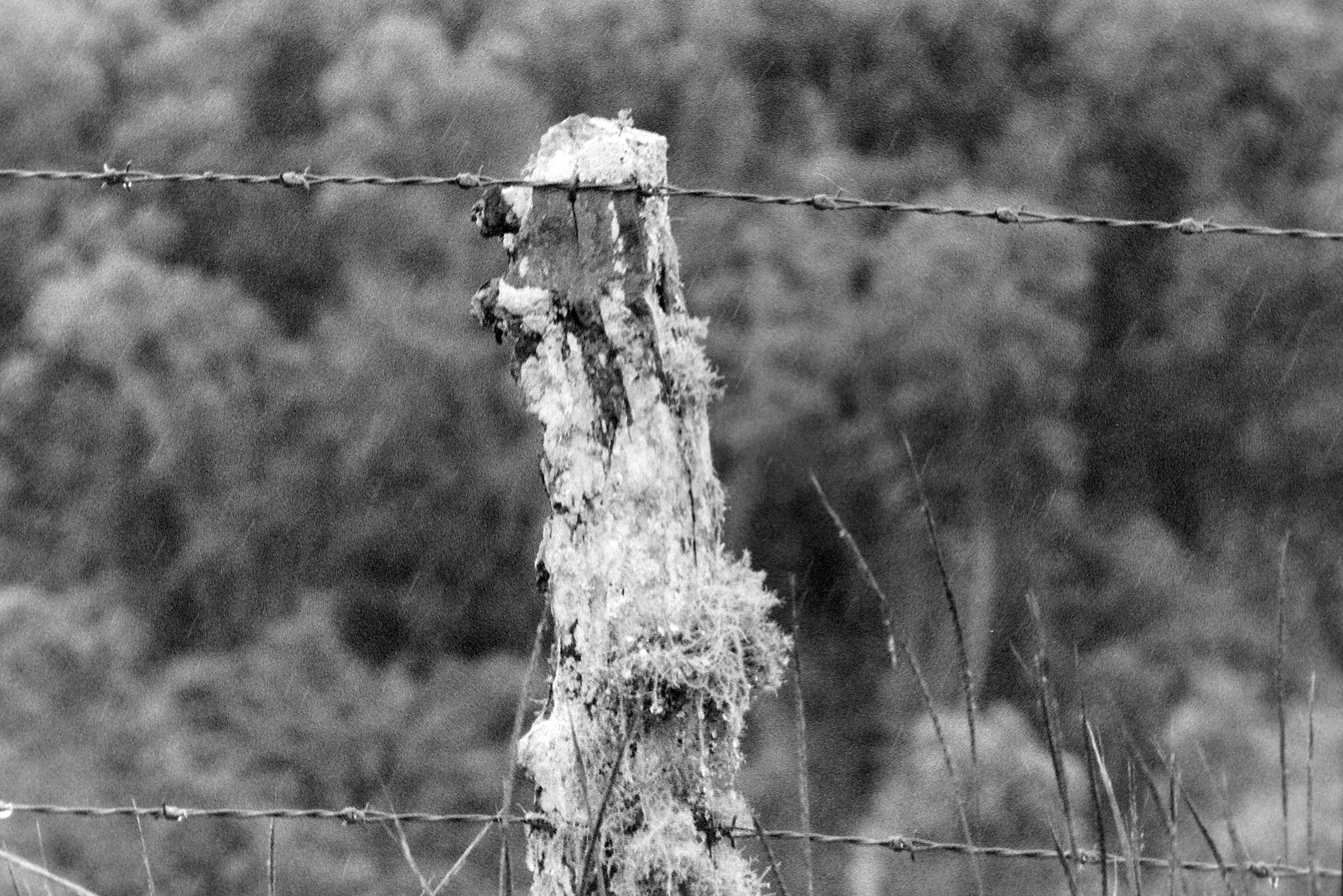

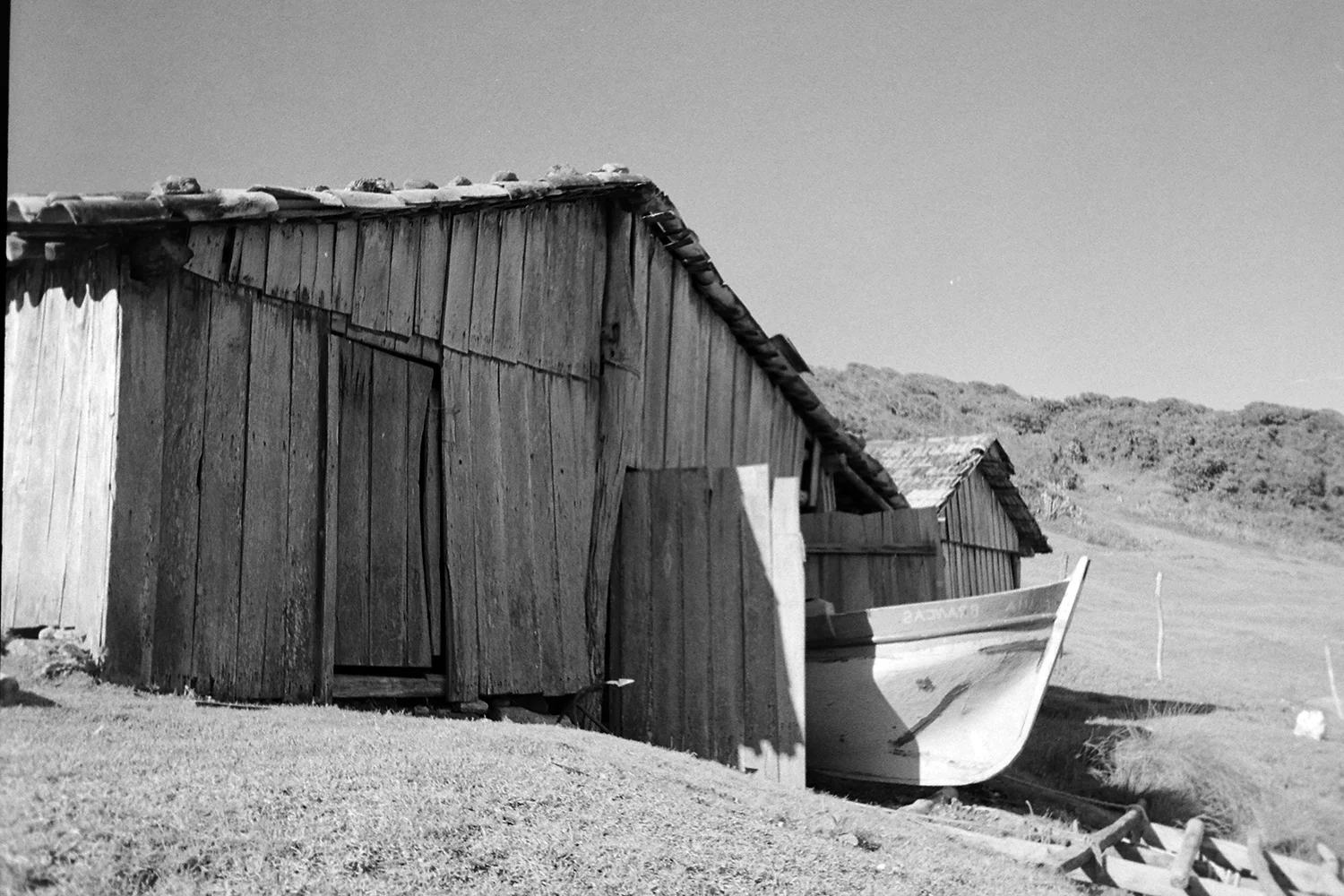


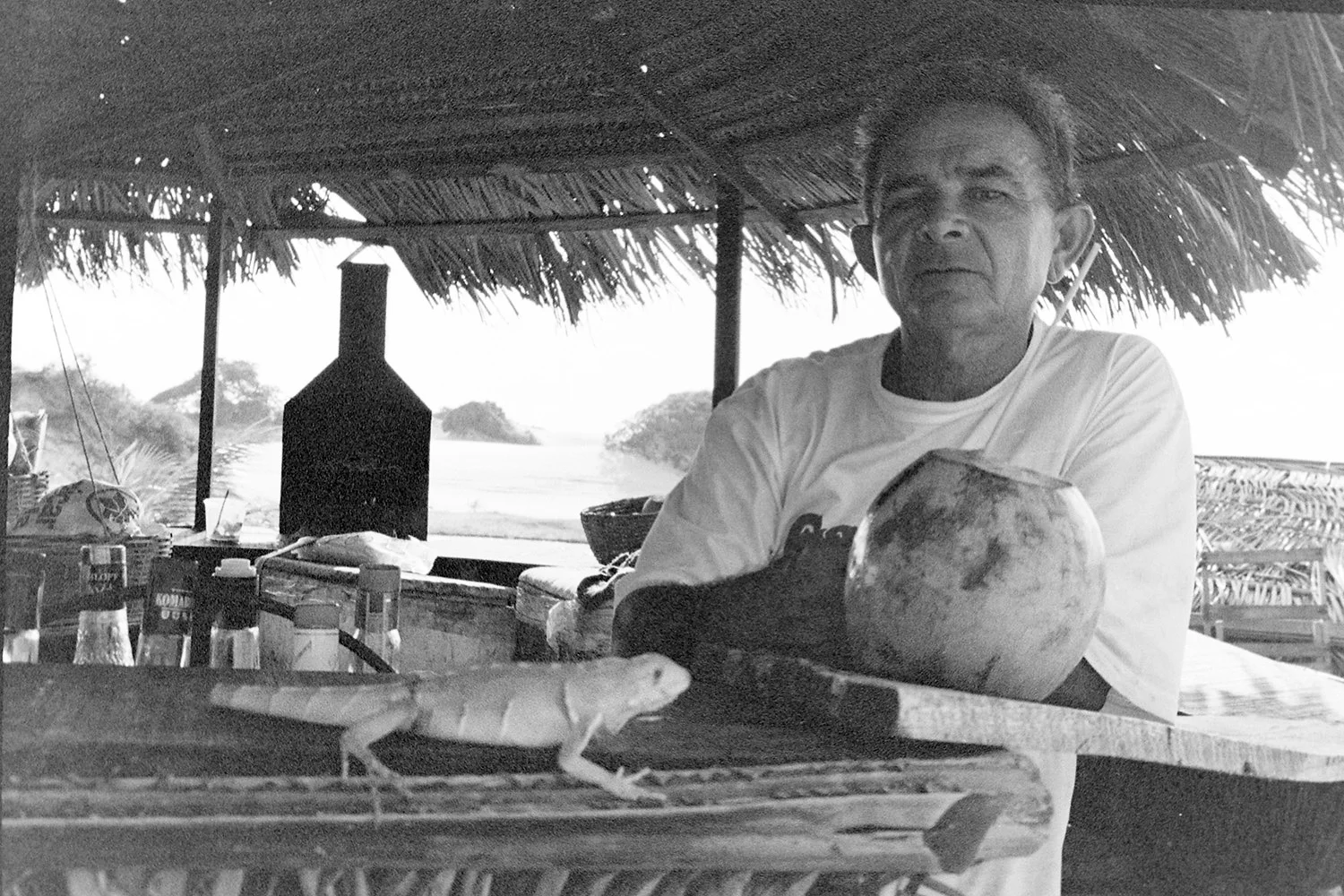



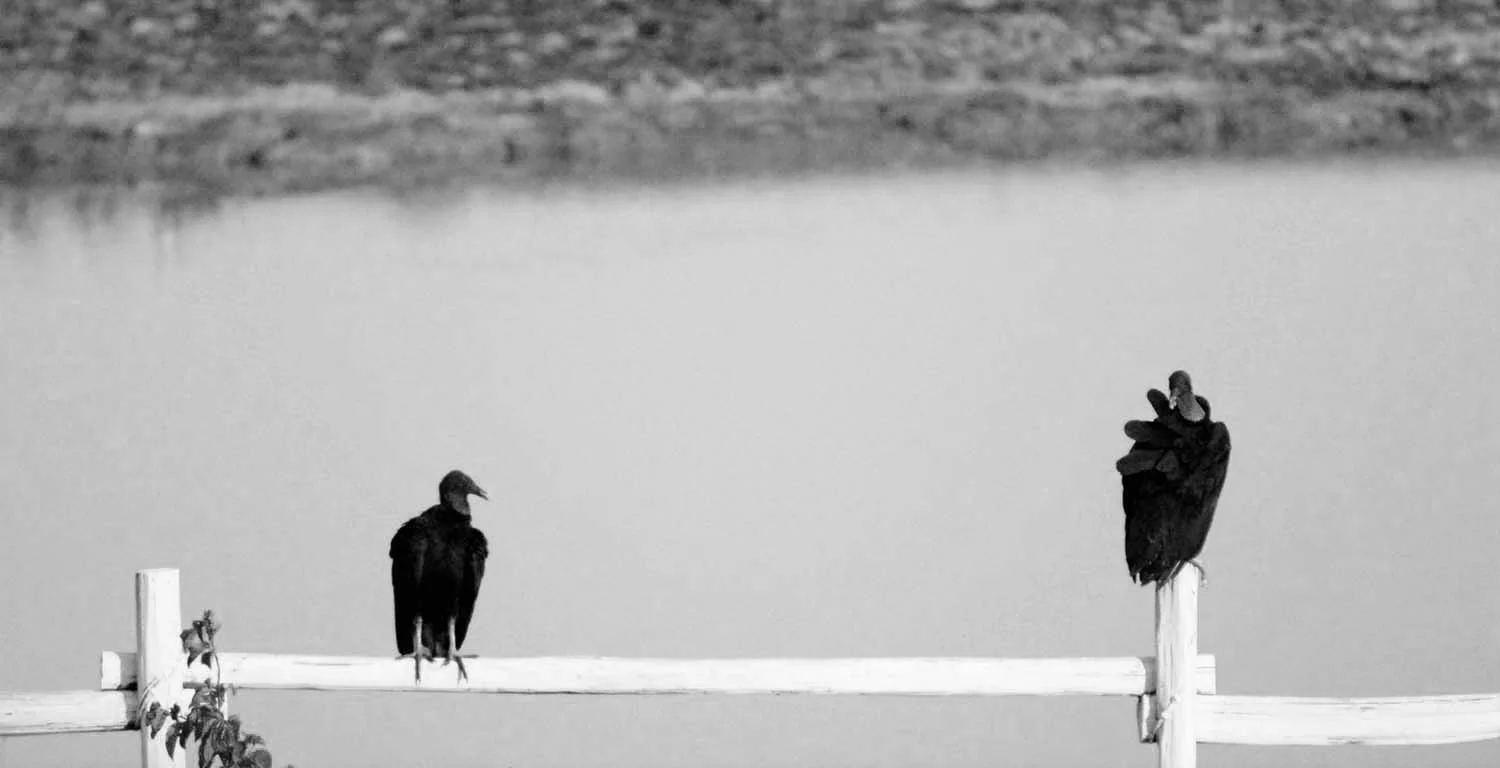




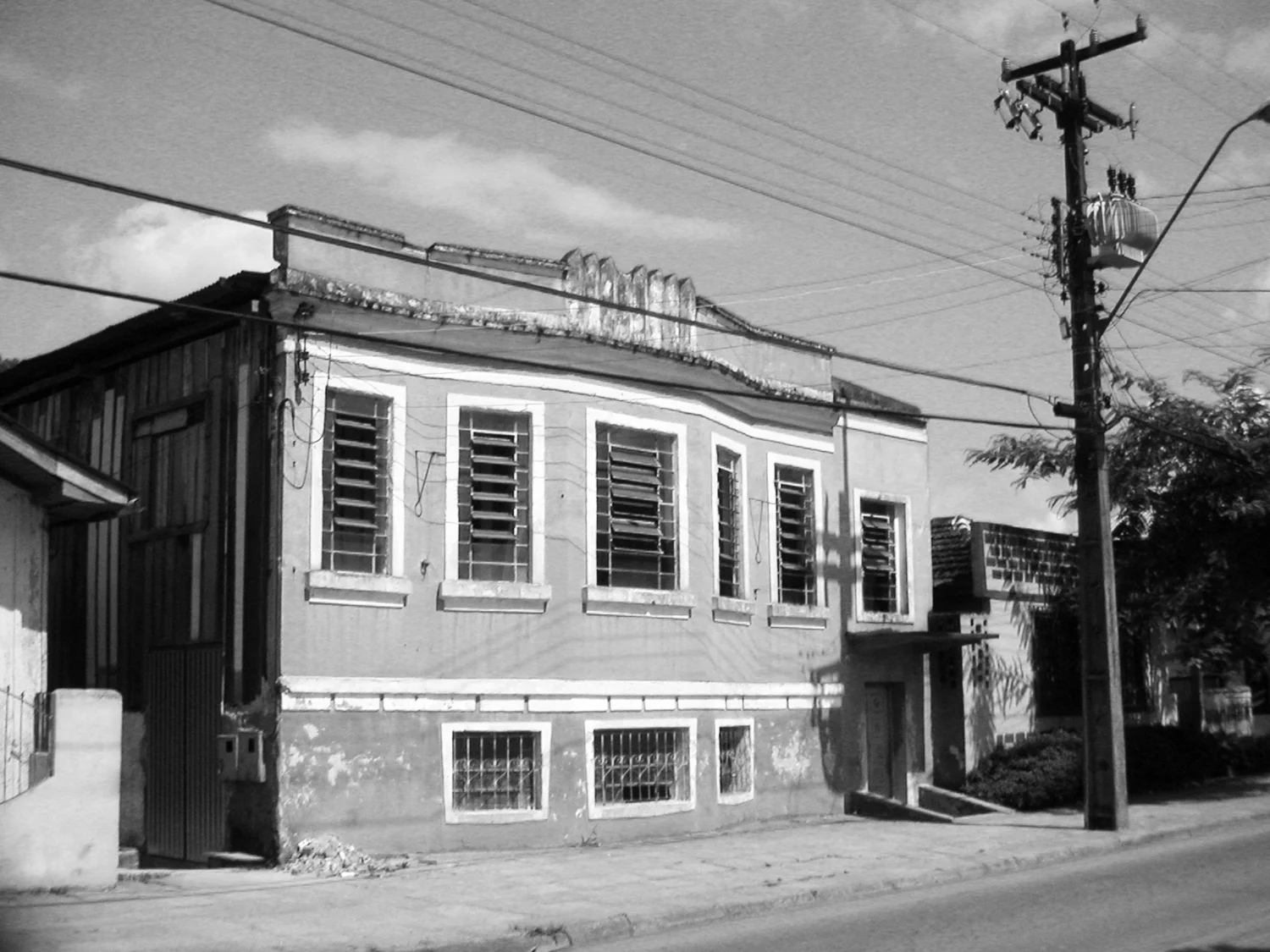

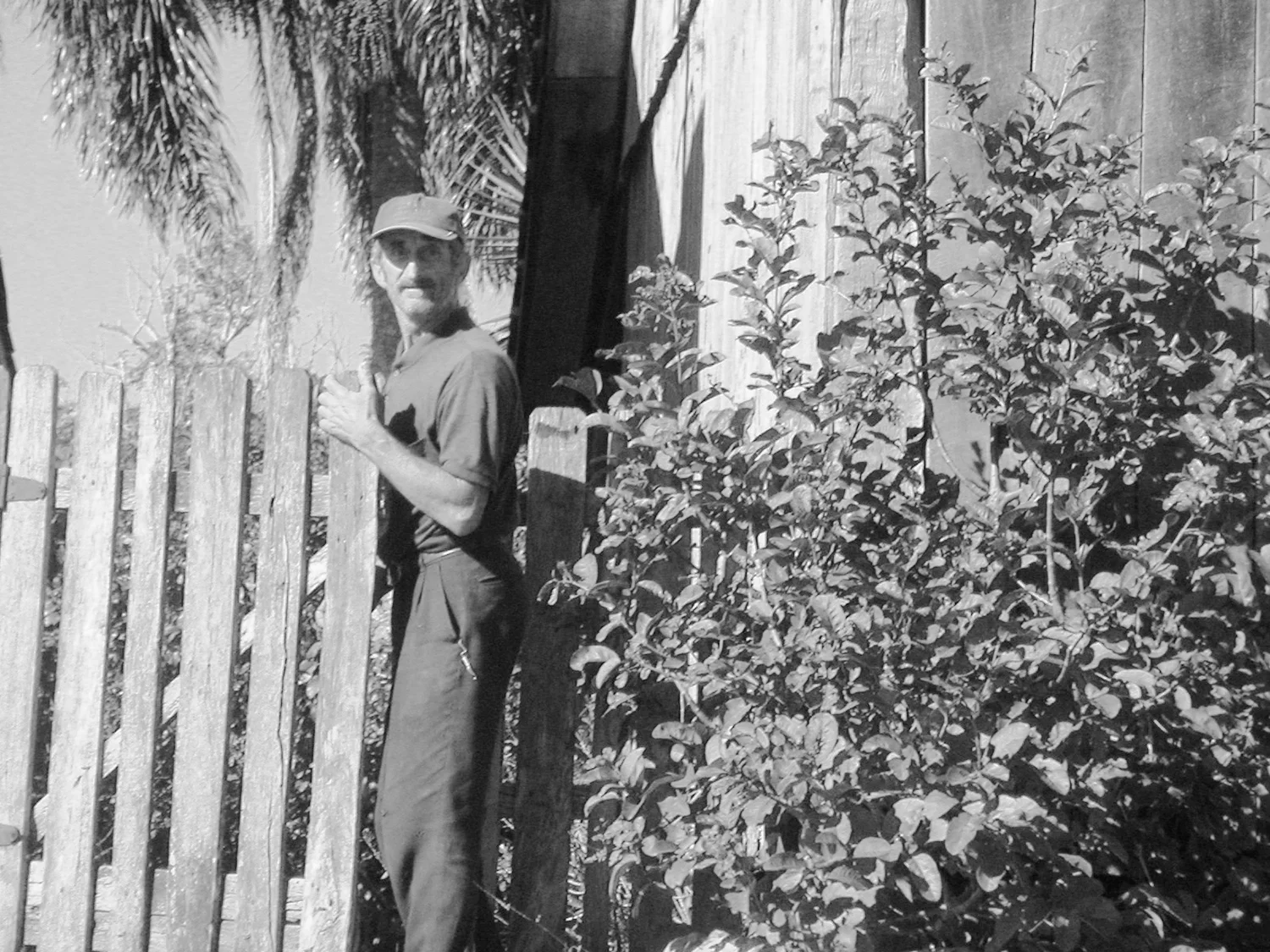




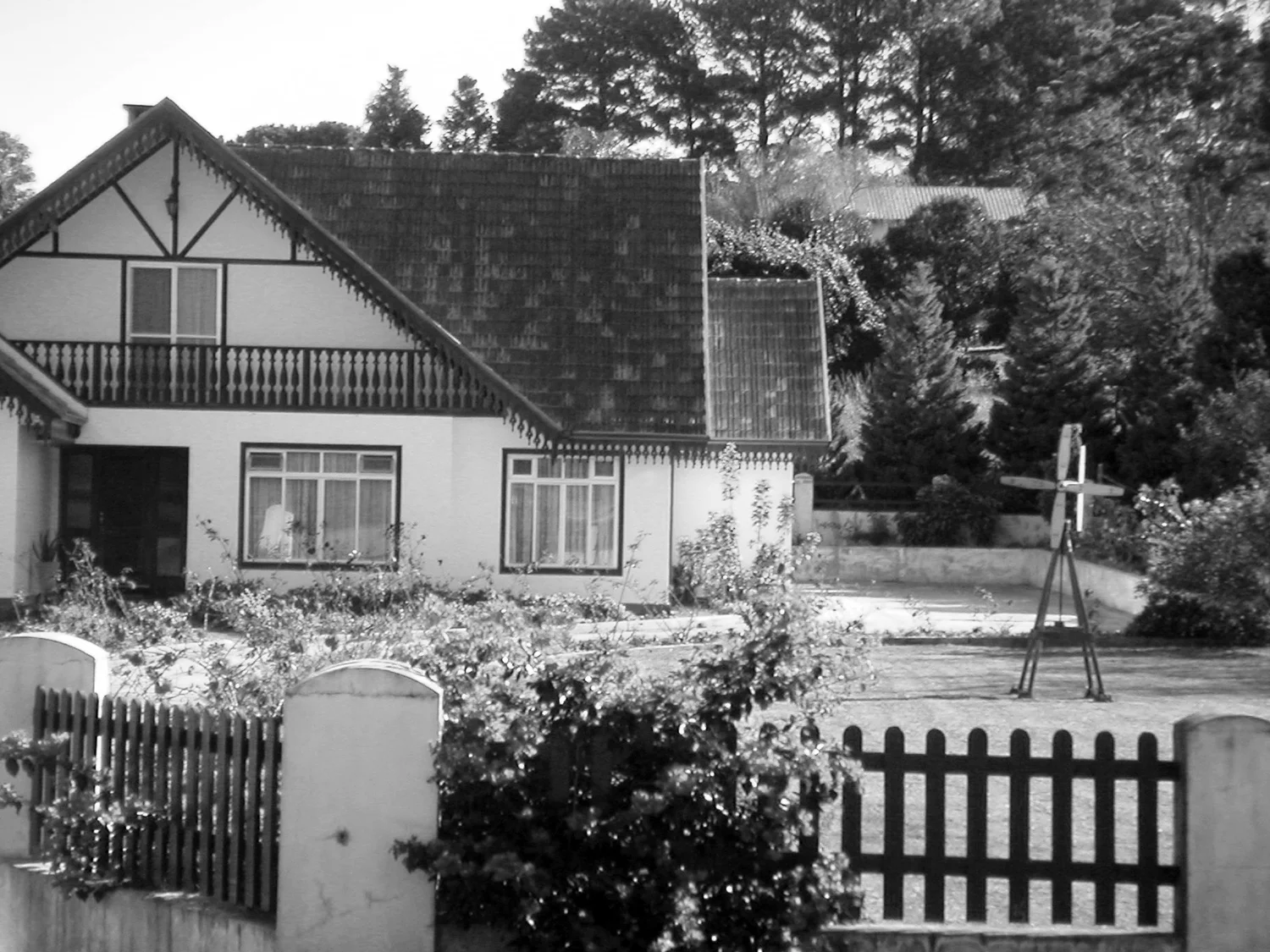


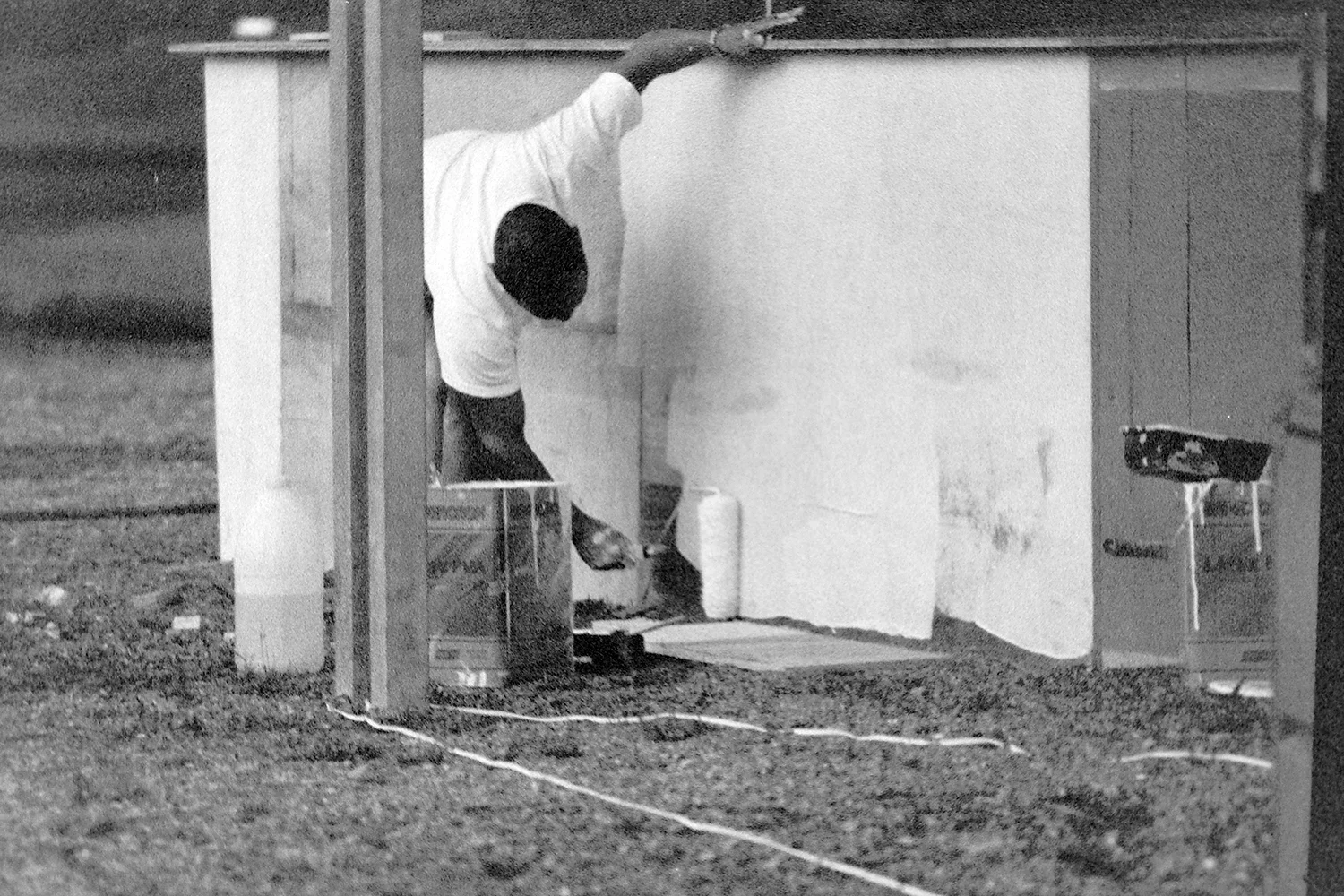

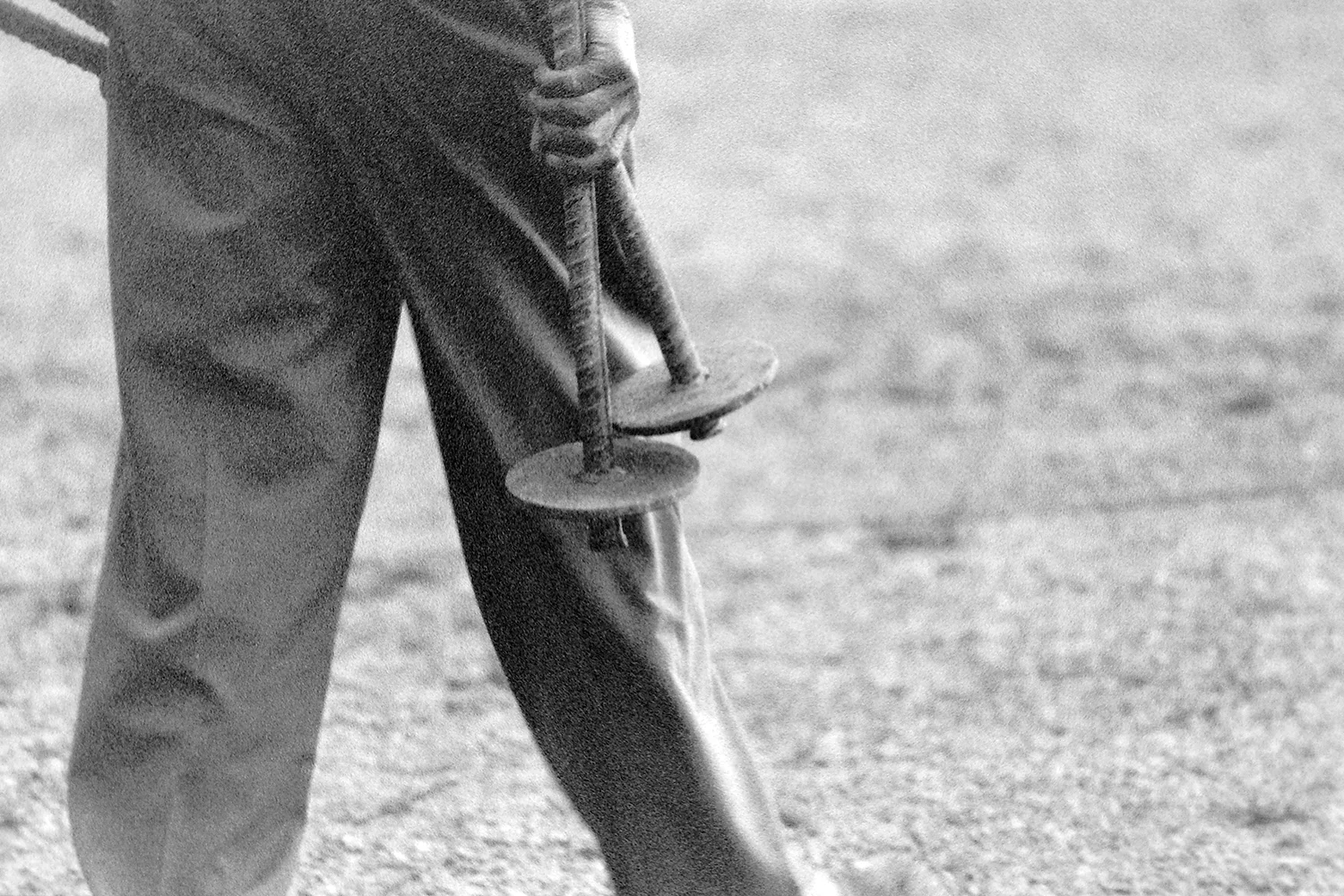

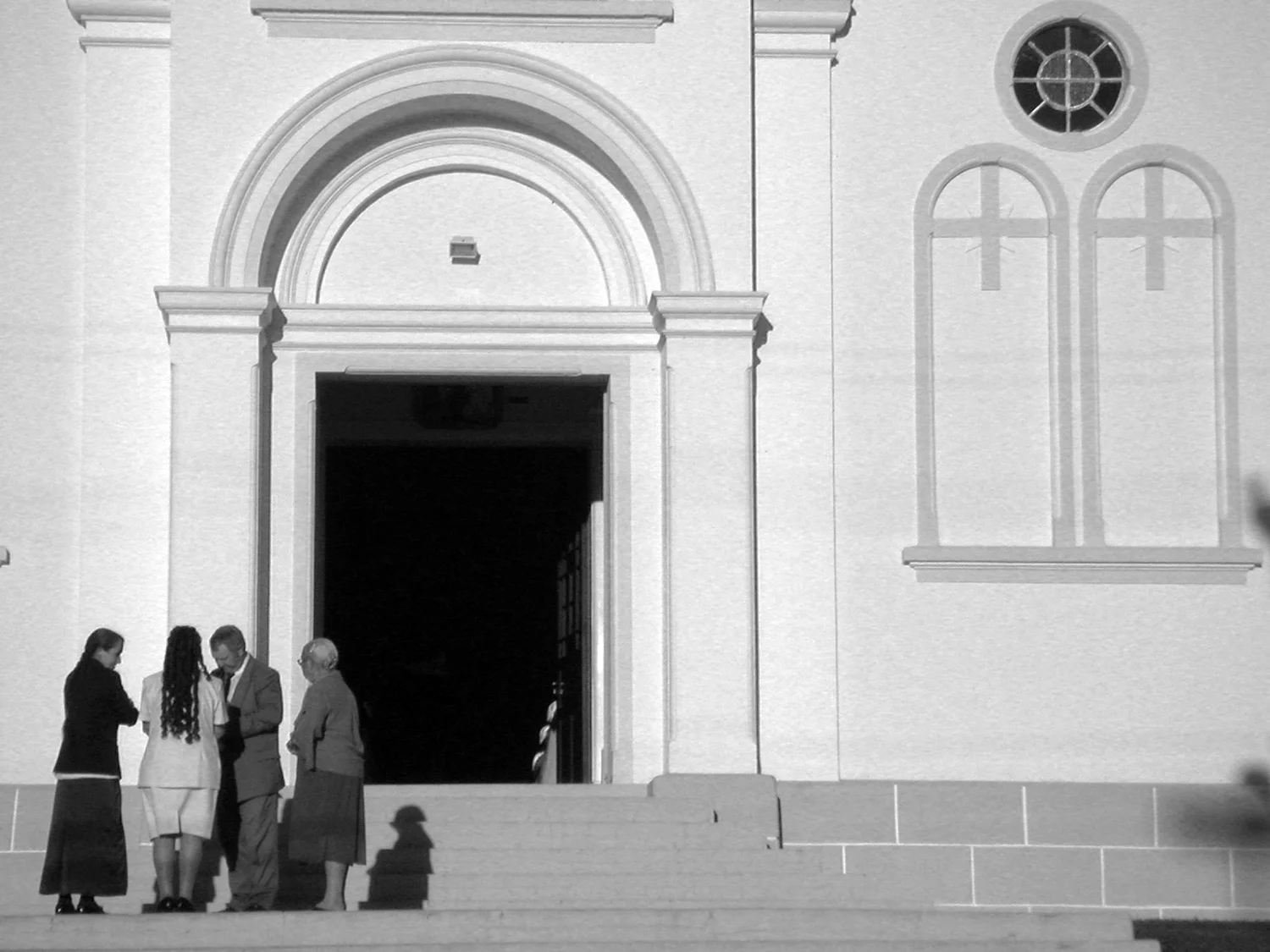
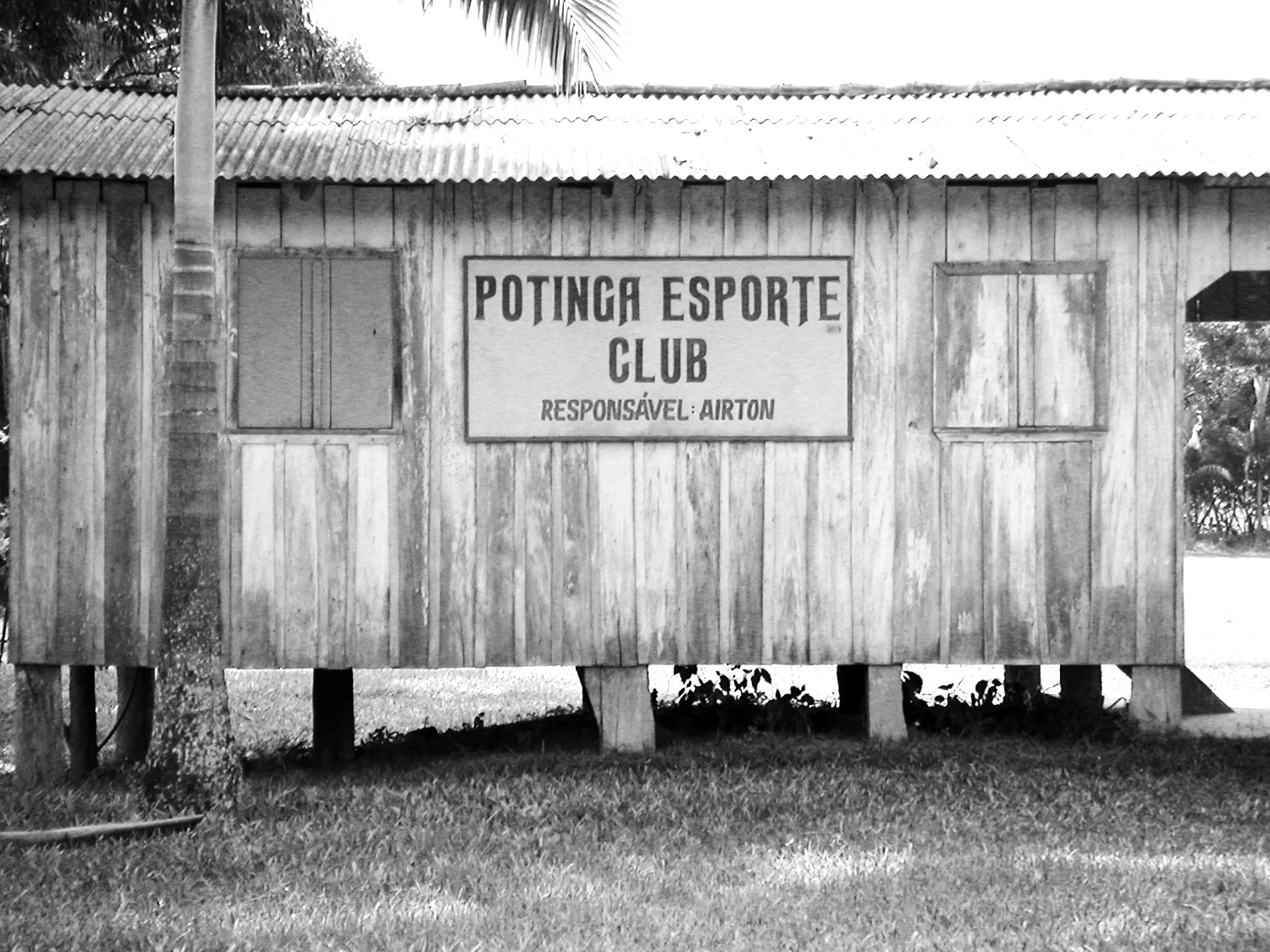
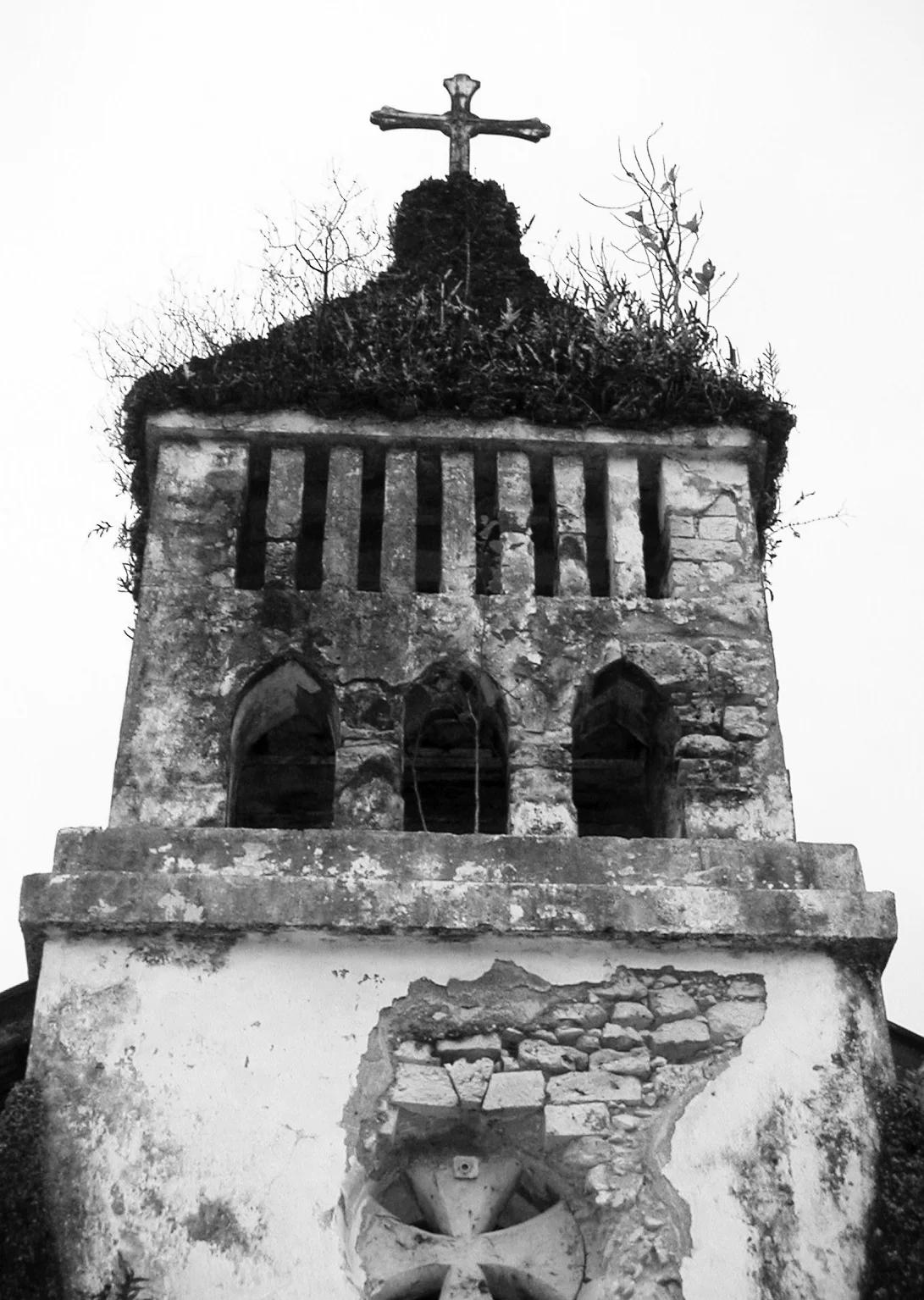
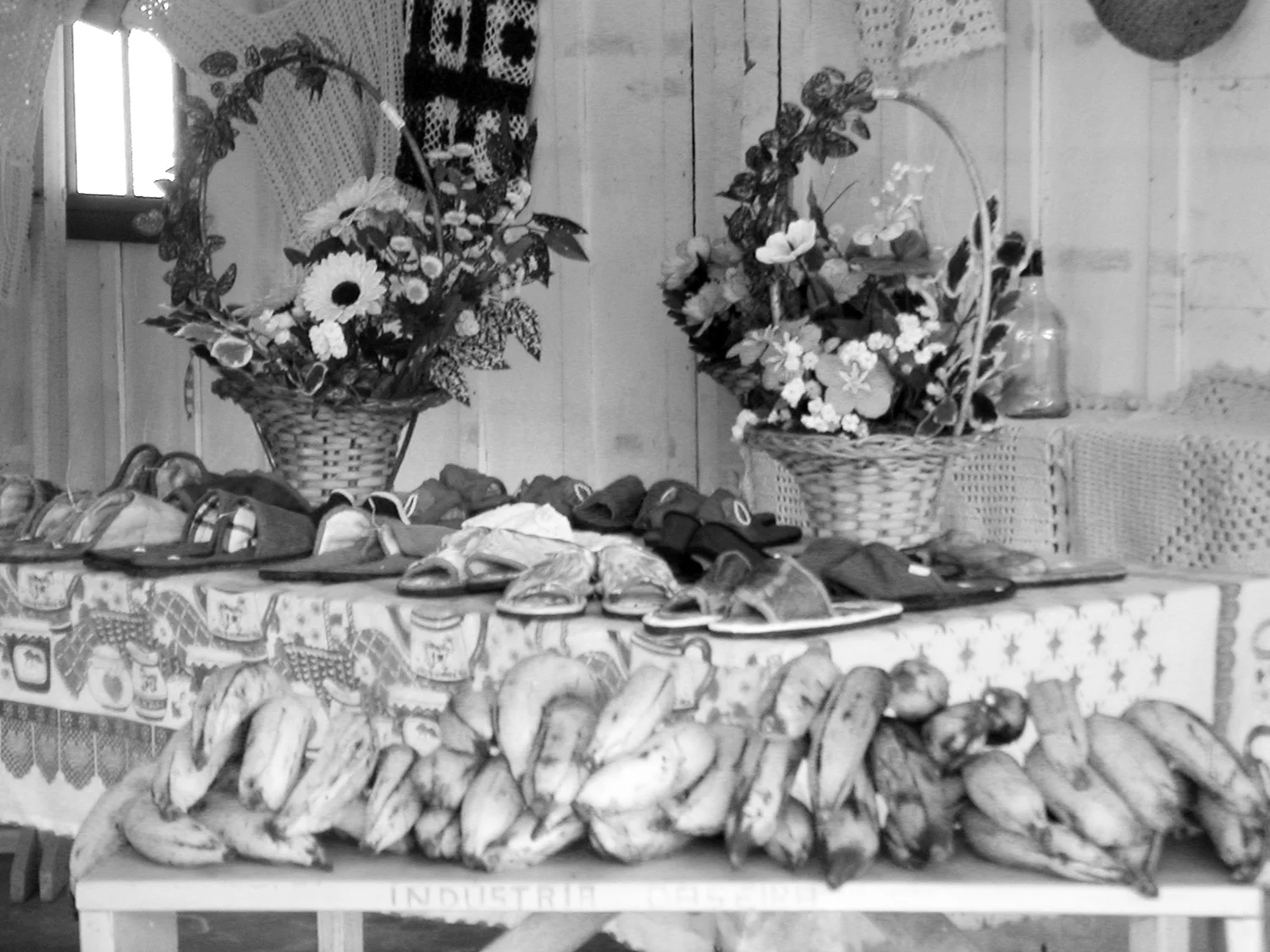
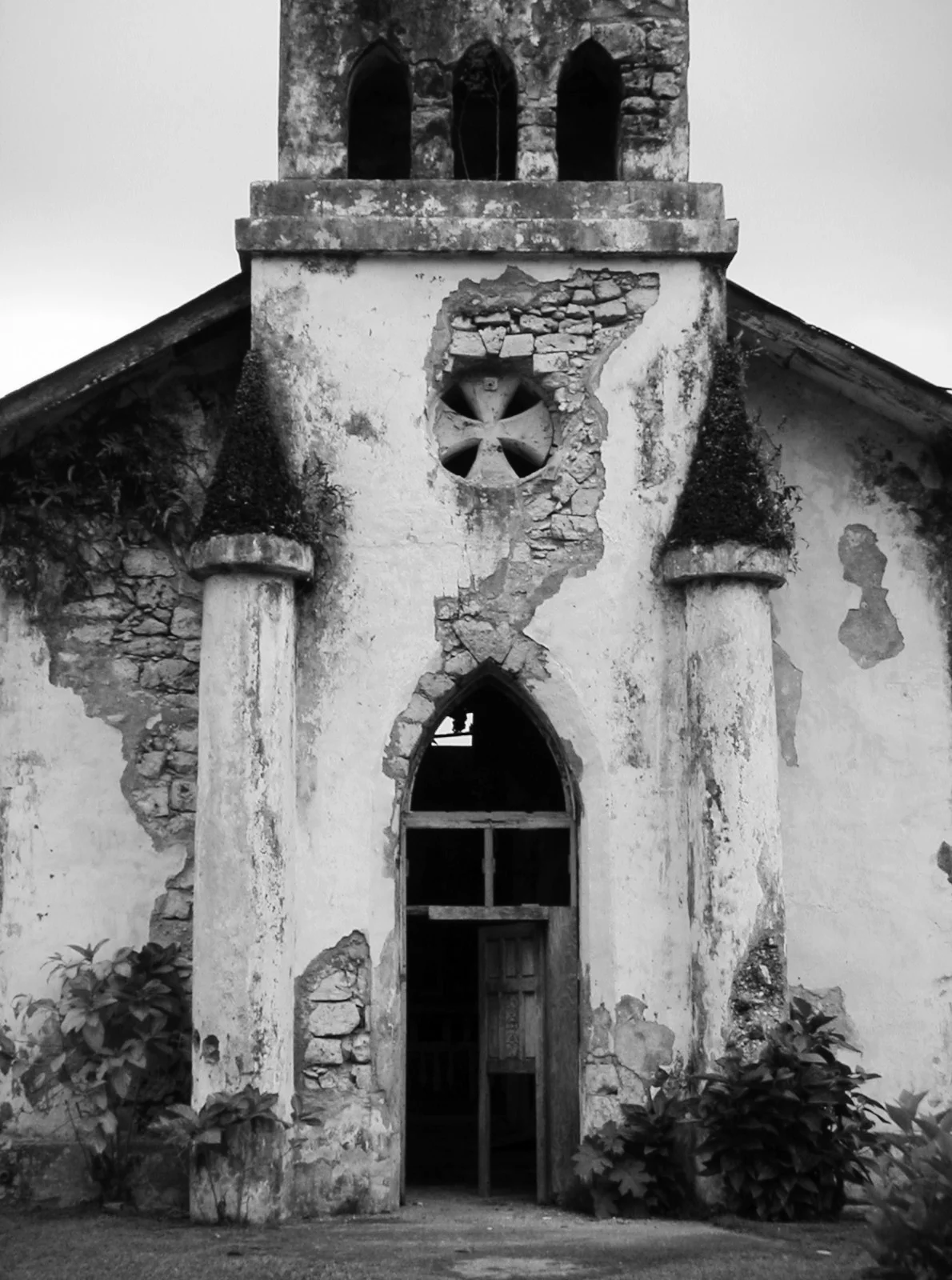
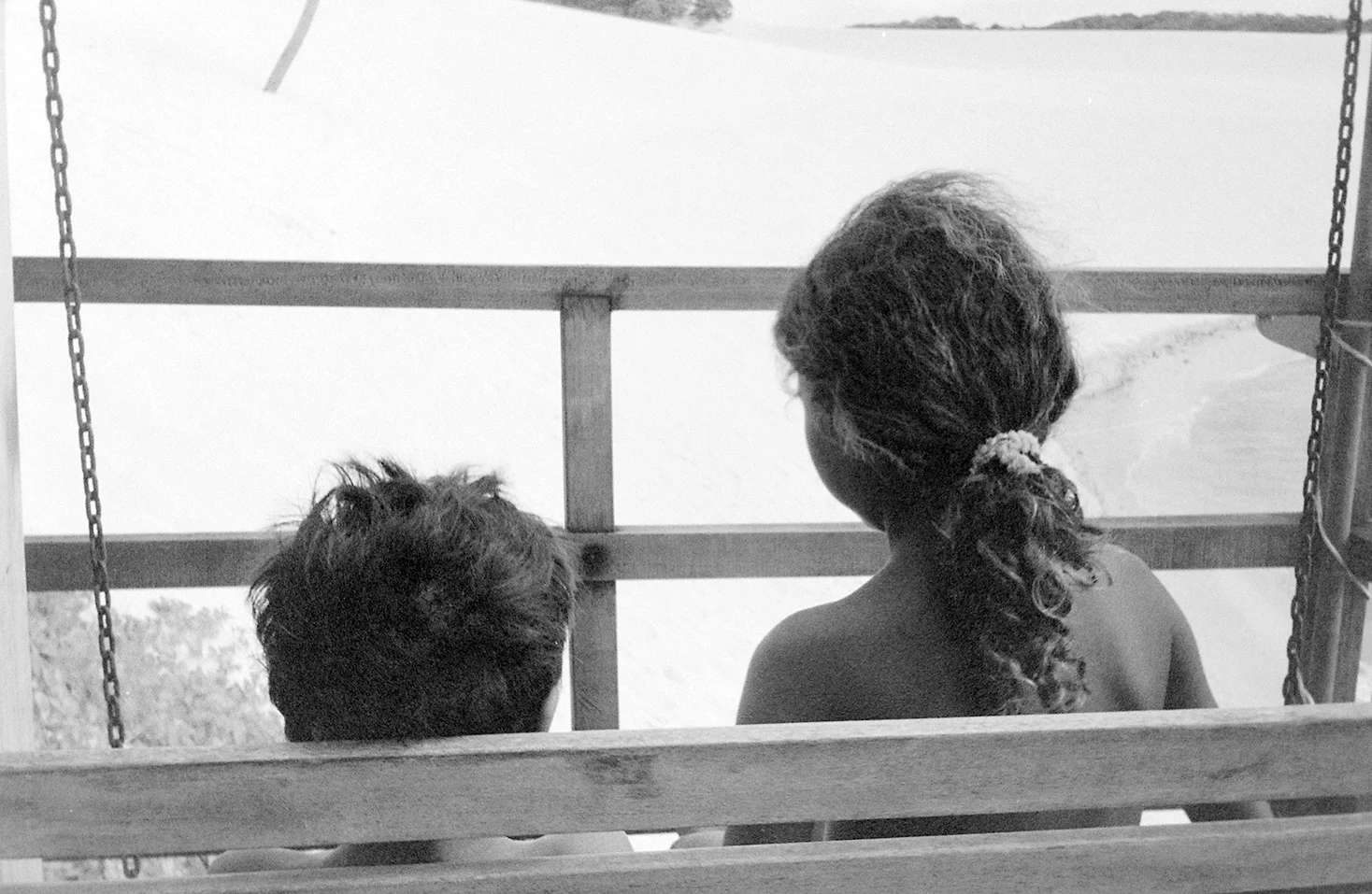
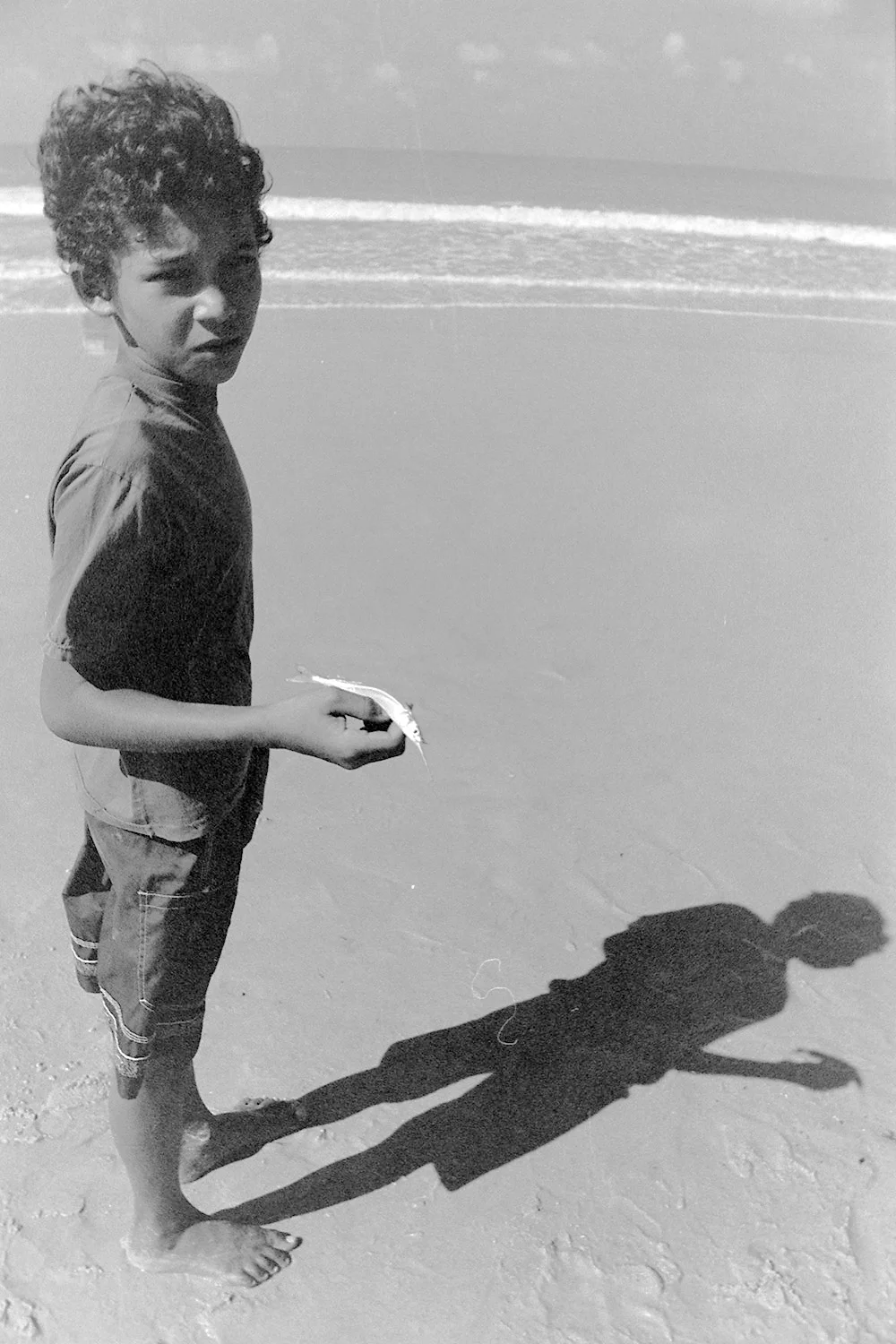
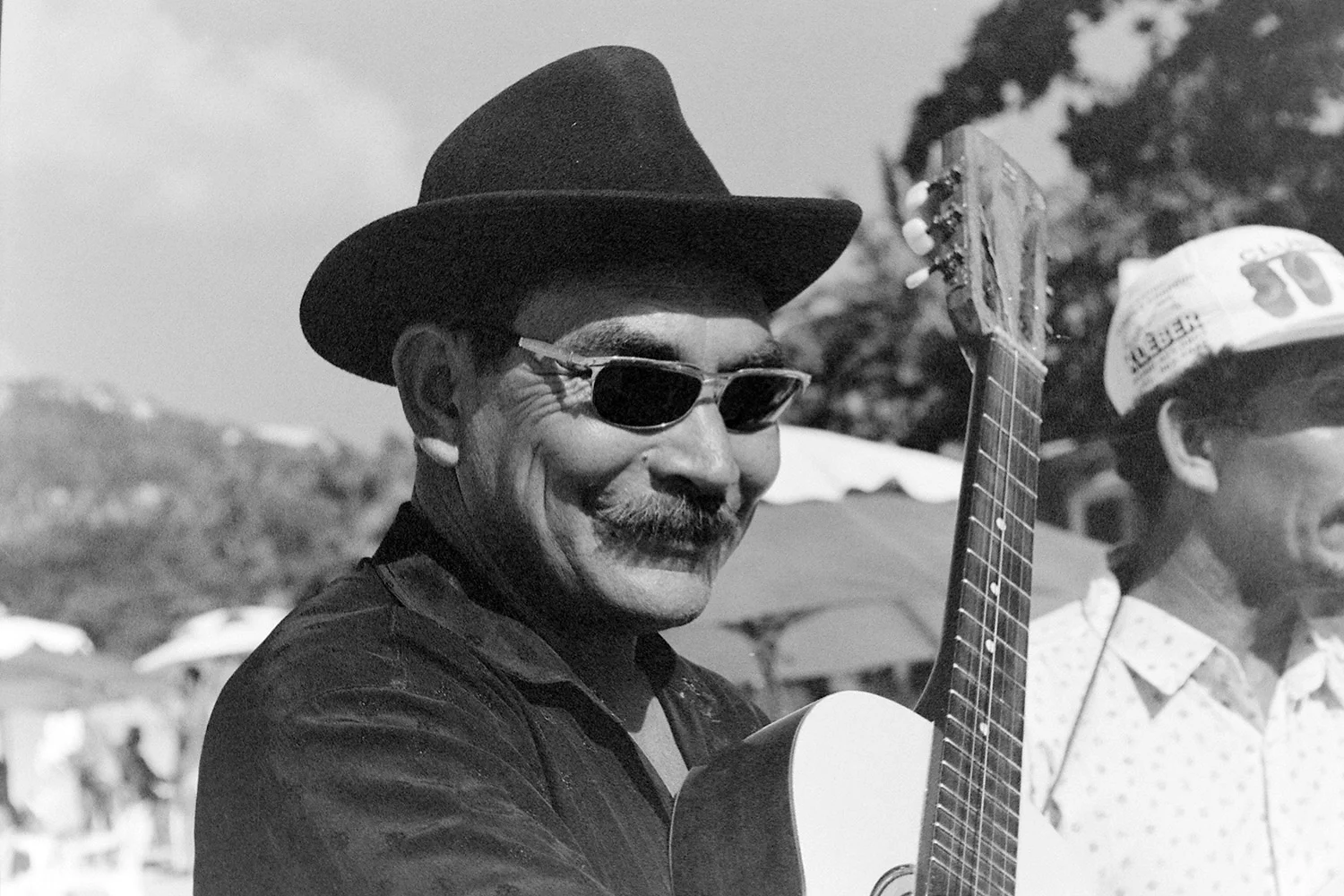
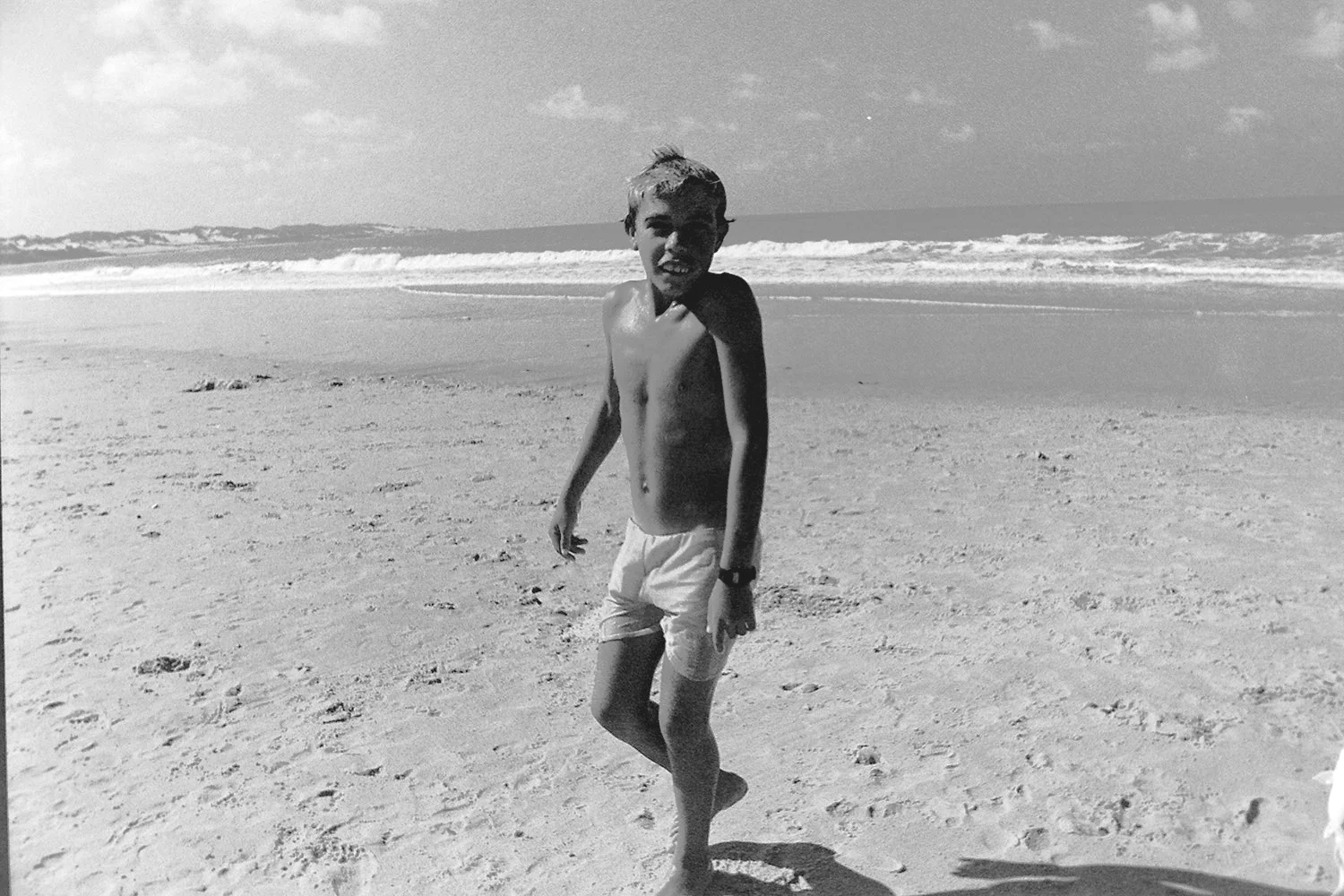
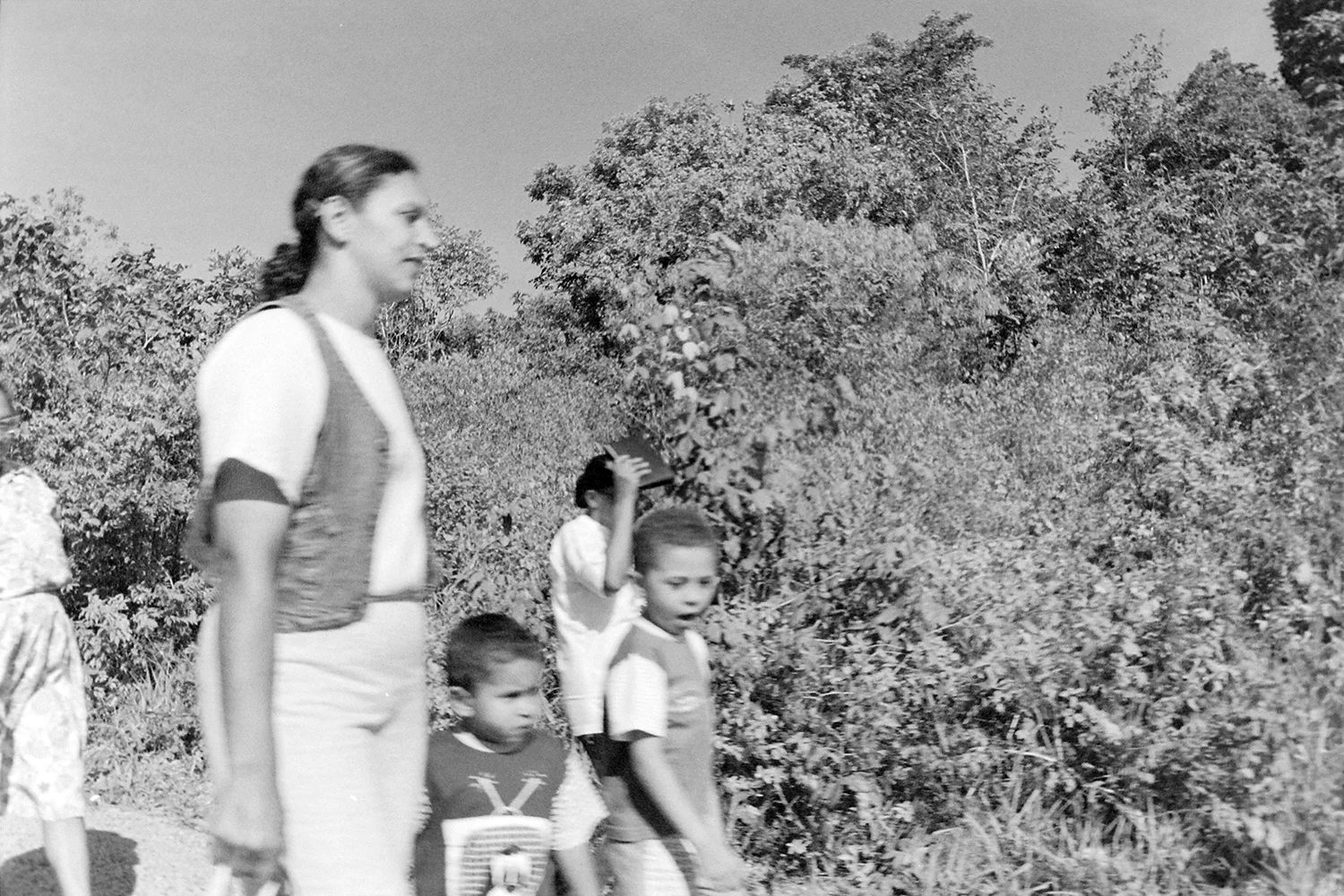
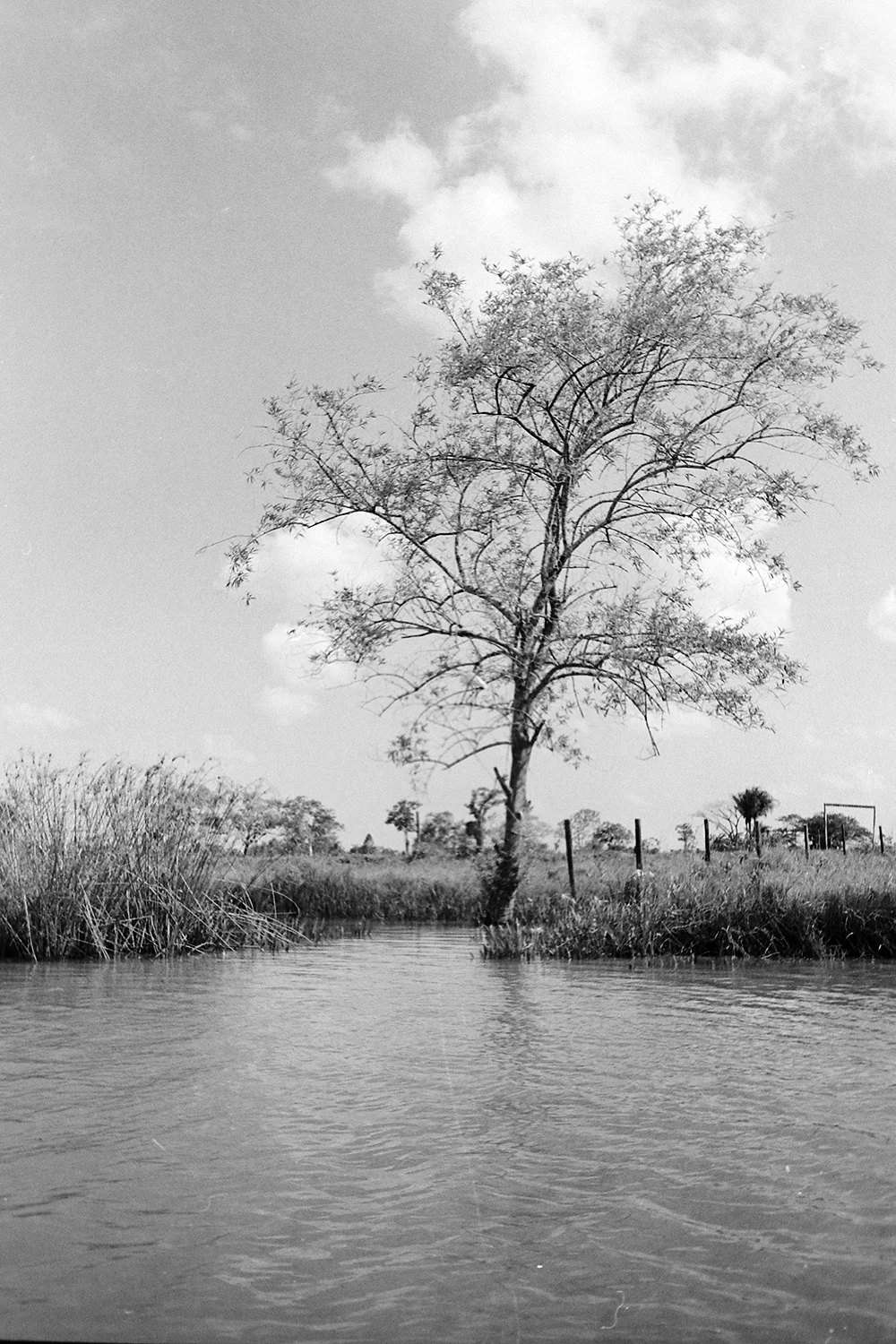
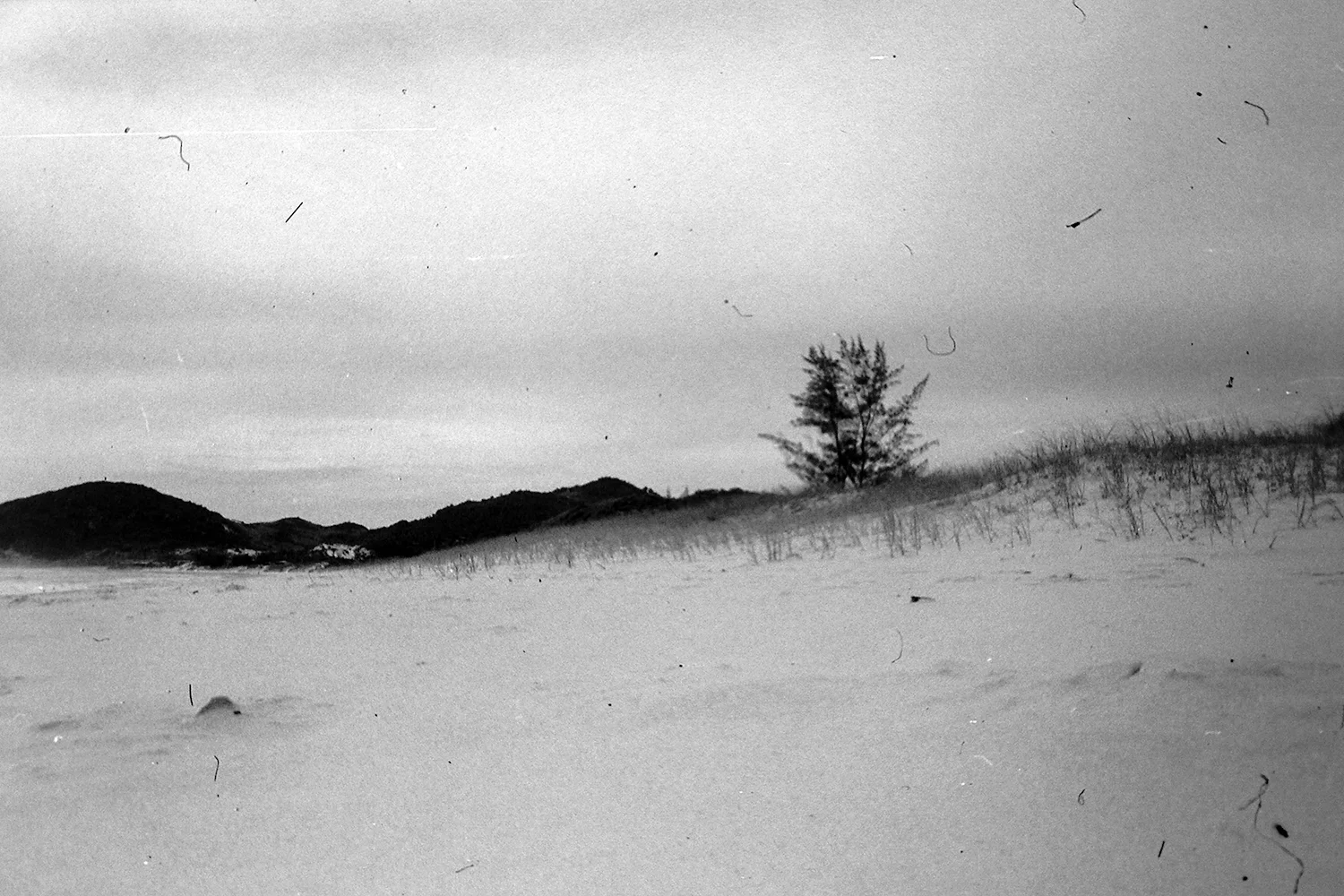
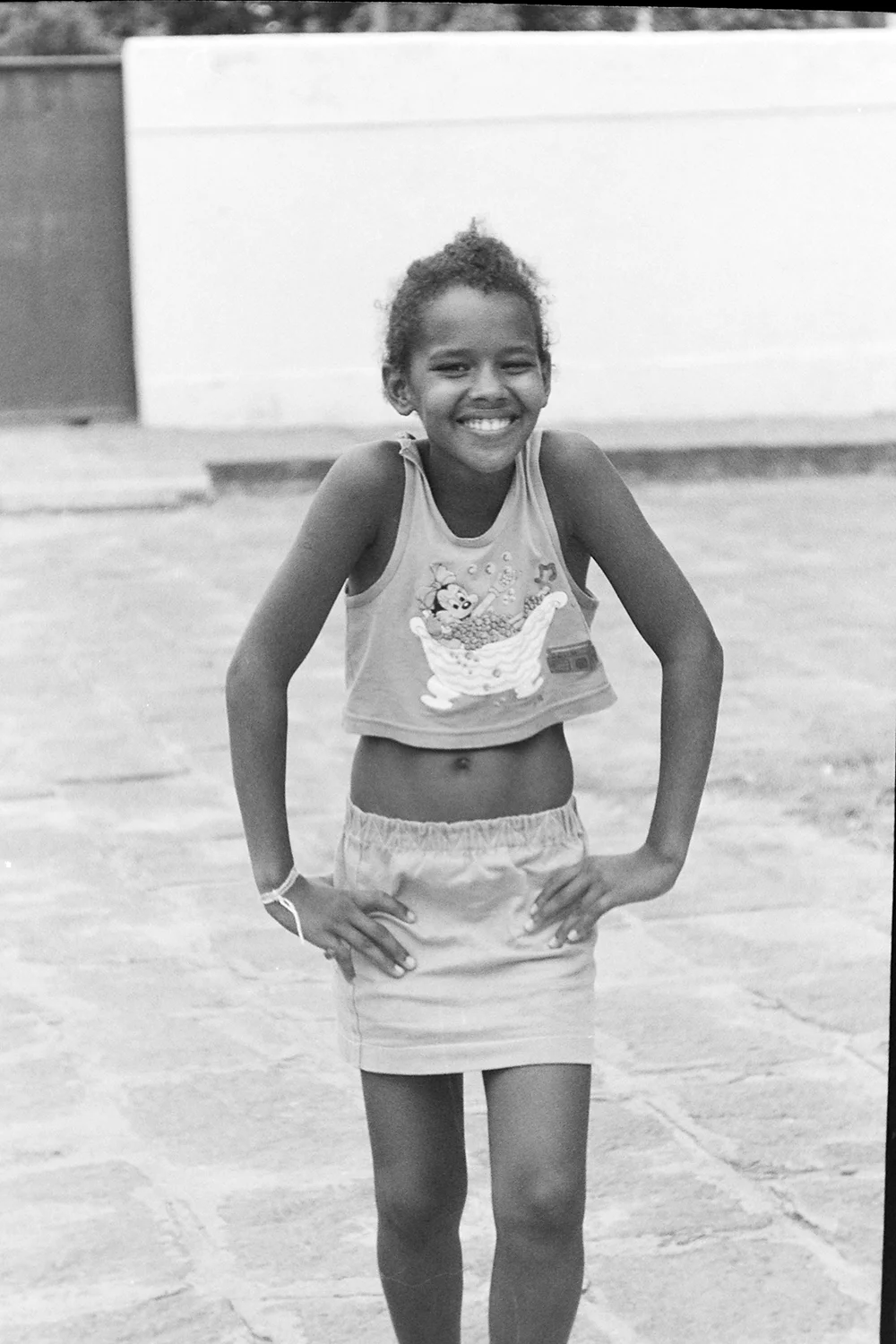
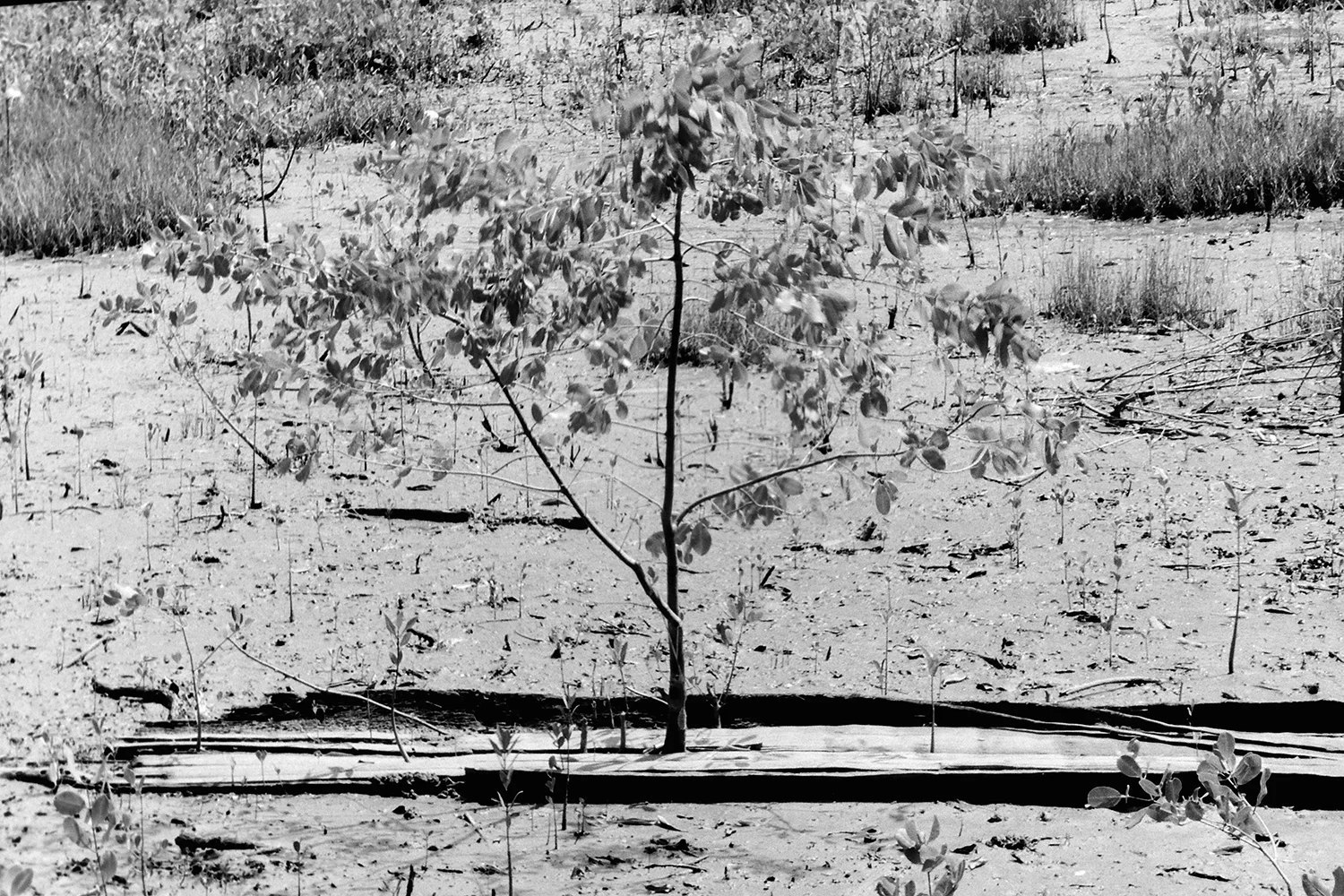
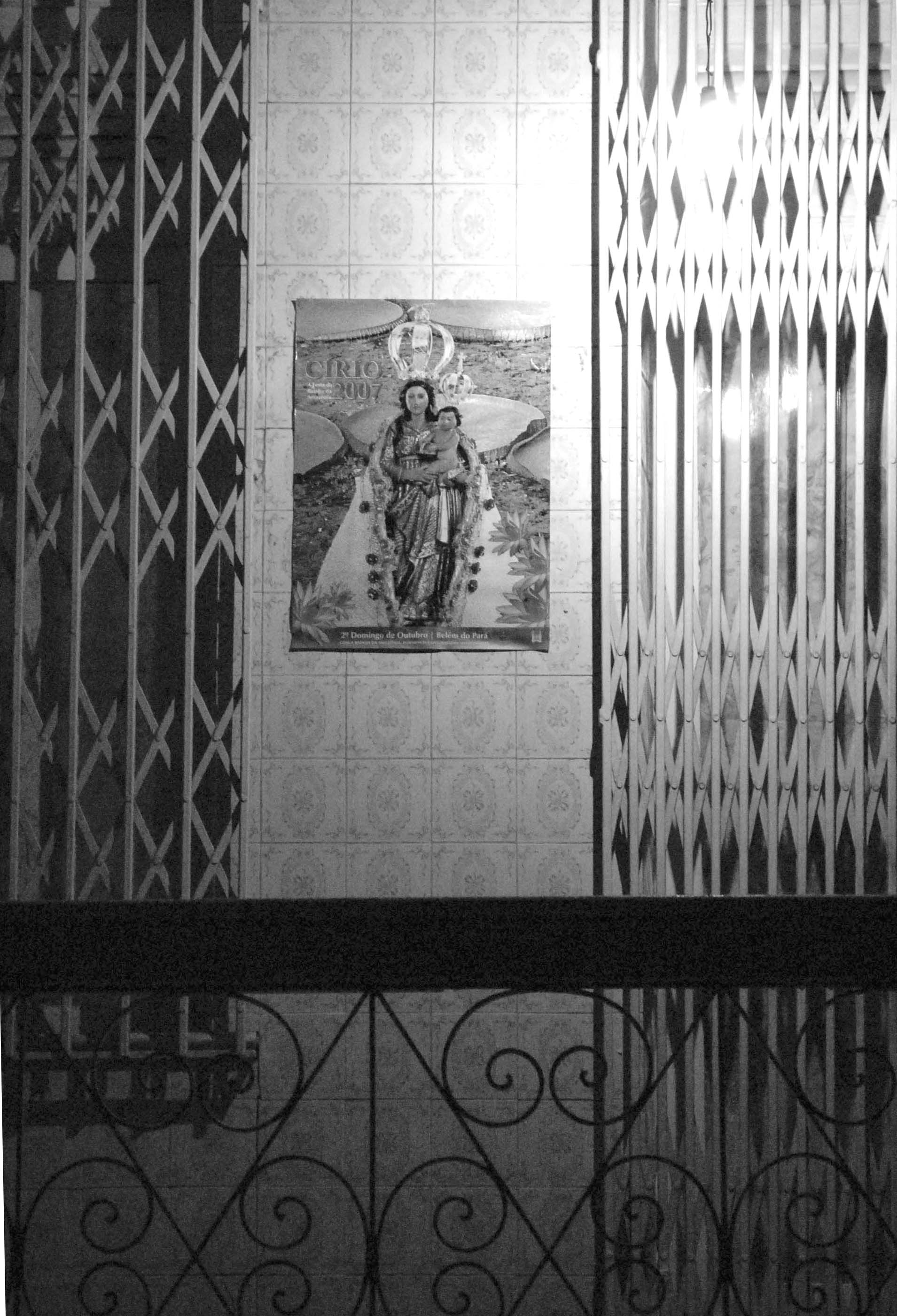








TERRA BRASILIS (1996 - 2020)
[[Gelatin silver prints on fiber paper (Ed. 5 + 1 A.P)///Impressões em prata e gelatina sobre papel de fibra (Ed.5 +1 P.A.)]]
30 x 45 cm / 12 x 18 in [[(or the reverse)///(ou o inverso)]]
[[TERRA BRASILIS is a personal sociological study completed during confinement. For years I carefully stored my black and white negatives from several trips to the Amazon region. Possibly because there was no possibility of an internal dialogue back then. The duel with the harsh light and absolute humidity of the tropics would only be felt in the materiality of the film. It was useless to photograph these incursions digitally, just as it was irrelevant to date the images. Year after year, nothing changed. Trip after trip, the impossibility of diving into these murky waters, of inserting myself in the picture, followed.
In 2020, unable to travel or print the photographs, I used a domestic 35mm negative scanner to examine 800 individual slides that I had amassed, resulting in a collection of 46 images situated 5,000km away. The series emanates the heat and precariousness characteristic of my own land. I try to get involved, but I accept that I'm definitely a foreigner. My gaze is located on the edge of the forest, far from its inhabitants, despite the fact that we share the same language.
Coming from an urban center in southern Brazil, I realize that my vision is much more in line with Claude Lévi-Strauss than with my Guarani ancestors. I dive into a timeless mist. The series offers the public a contemplative space to question their artistic and cultural influences. We are crossing the borders between past and present as our forests disappear. Amid the consciousness of my Eurocentrism, I felt the urge to review the gaps in my being and I saw myself there on the damp earth.///TERRA BRASILIS é um estudo sociológico pessoal concluído durante o confinamento. Durante anos guardei cuidadosamente meus negativos em preto e branco de várias viagens à região amazônica. Possivelmente porque não havia possibilidade de diálogo interno naquela época. O duelo com a luz áspera e a umidade absoluta dos trópicos só seria sentido na materialidade do filme. Era inútil fotografar digitalmente essas incursões, assim como era irrelevante datar as imagens. Ano após ano, nada mudou. Viagem após viagem, seguiu-se a impossibilidade de mergulhar nessas águas turvas, de me inserir na imagem.
Em 2020, impossibilitado de viajar ou imprimir as fotografias, usei um scanner doméstico de negativos de 35 mm para examinar 800 slides individuais que havia acumulado, resultando em uma coleção de 46 imagens situadas a 5.000 km de distância. A série emana o calor e a precariedade característicos da minha própria terra. Tento me envolver, mas aceito que sou definitivamente um estrangeiro. Meu olhar está localizado na orla da floresta, longe de seus habitantes, apesar de compartilharmos a mesma língua.
Vindo de um centro urbano no sul do Brasil, percebo que minha visão está muito mais alinhada com Claude Lévi-Strauss do que com meus ancestrais Guarani. Eu mergulho em uma névoa atemporal. A série oferece ao público um espaço contemplativo para questionar suas influências artísticas e culturais. Estamos cruzando as fronteiras entre o passado e o presente à medida que nossas florestas desaparecem. Em meio à consciência do meu eurocentrismo, senti vontade de rever as lacunas do meu ser e me vi ali na terra úmida.]]
(Patricia Borges)